
Plan a summer day out with Tripadvisor’s Top UK Destinations









Plan a summer day out with Tripadvisor’s Top UK Destinations







Hello and welcome to the summer edition of Family First. With the school summer holidays fast approaching, we have lots of help and advice on dealing with holiday stress, places where the kids can eat for free or £1 and fun games and activities to do in the great outdoors while making the most of the (hopefully) warmer weather.

holidays, and ways to help your child start secondary school with confidence.
If you haven’t made plans for a family day out or holiday this summer, Tripadvisor has scoured its list of Trending Destinations to suggest some great locations around the UK that have plenty to do for adults and kids alike.
The experts at Netmums have put together some top tips from their family money experts and parenting editors to help you make the most of the holidays for less, as well as a debate on how to deal with the juggle of kids and work during the school
COVER CREDITS:
Photographer Credit: Dave Nelson
Executive Editor: Lee Gatland
Art Director: Richard Hejsak
Editor: Georgina Probert georgina@sevenstarmedia.co.uk
Deputy Editor: Becky Todd becky@sevenstarmedia.co.uk
Sales Team: 01959 543 650 sales@sevenstarmedia.co.uk
Published by SEVEN STAR MEDIA LTD 184 Main Road, Biggin Hill, Westerham, Kent Tel: 01959 543659 sevenstarmedia.co.uk
Don’t forget to check out our top picks for kids’ summer fashion, as well as advice on staying safe in the sun and introducing your littlest ones to water.
Wishing you an enjoyable summer, Georgina
This issue we’re speaking

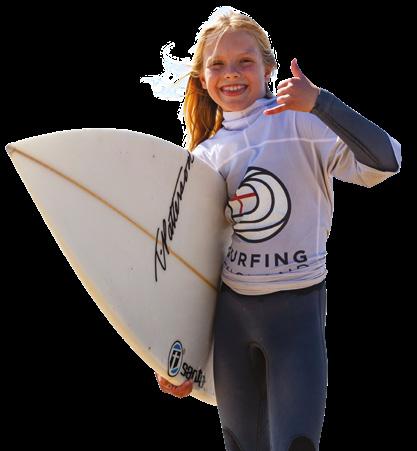

Disclaimer: Family First is published quarterly by Seven Star Media Ltd. No part of Family First may be reproduced, stored in a retrieval system or transmitted to any form without permission. Views expressed in the magazine are not necessarily those of Seven Star Media Ltd, and are included to provide advice only. No content is a substitute for professional medical advice. During printing, images may be subject to a 15% variation. © Copyright of content belongs to individual contributors with the magazine copyright belonging to Seven Star Media Ltd. All rights reserved. Please either keep this magazine for future reference, pass it on for somebody else to read, or recycle it.
Ashley James on being a mum, finding her own body confidence and her important work with Girlguiding
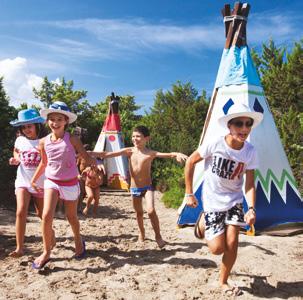
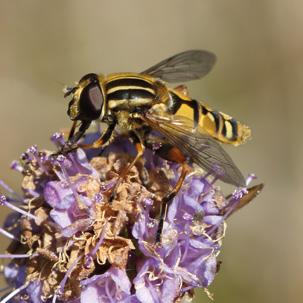
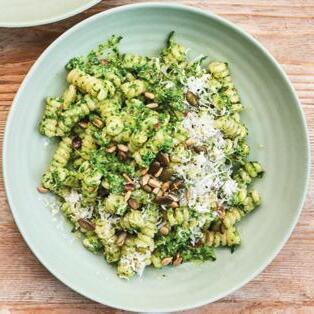




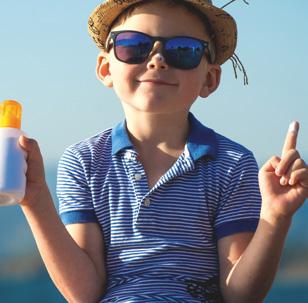


play and explore
Nurturing Wild
Sun-loving sprites –The Wildlife Trusts
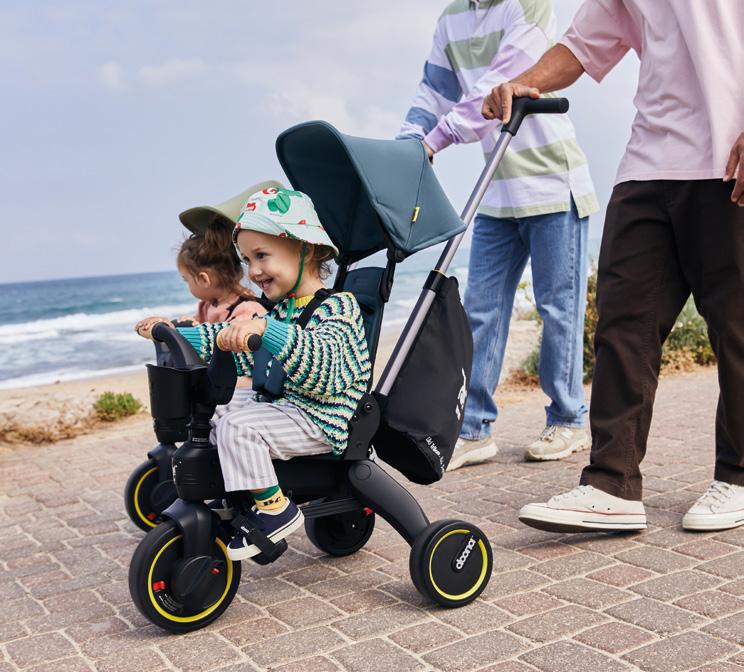
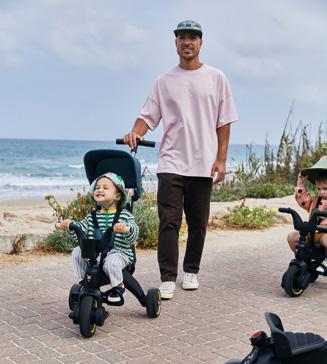
Our hand-picked selection of family-friendly items we wouldn’t be without this summer.
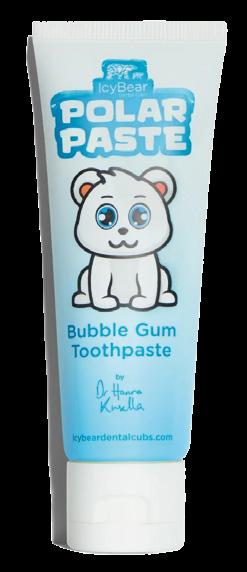
aving gone through five different brands of toothpaste for our fiveyear-old and nine-year-old and being met with complaints such as “too minty” or “tastes funny”, we were excited to try out Icy Bear Dental Care’s Polar Paste. The kids loved the fact that the paste was blue and glittery – and the Bubble Gum flavour was a big hit too. What we liked as parents is the fact that the paste is suitable for children from aged 6 months, was created by dental experts and is gentle enough for sensitive gums. Parents can also download the Cubby Buddy app, which allows kids to collect coins and dance while brushing, making the whole experience fun and enjoyable for all.
Icy Bear Dental Care, Polar Paste, £5.99 for 50ml, icybeardental.com
For toddlers ready to explore, the Liki Trike is the perfect companion. With its 5-in-1 design, it adapts as your child grows, from Parent Mode (10 months) to Bike Mode (3 years old). What we love about this trike is that it folds and unfolds at the click of a button, which is ideal for everyday outings or travel. It is also compact enough to fit in a car boot or airplane overhead bin, so you can take it with you on holiday. The Liki Trike encourages physical and mental development by strengthening muscles, improving balance and enhancing motor skills. Equipped for safety and comfort, it features a parent control bar, 5-point harness, UPF 50 canopy and armrest. Doona, Liki Trike, S1 - £139, S5 - £239, doona.shop

If your family is interested in learning how to forage food from nature, then the The Grizzly Foragers Guide to Family Foraging by John Shahabeddin is a must-read. Foraging food is a great way to teach your children about nature, but it is important to only take things that are safe to eat. The book is a definite guide for parents on the types of fruits, nuts, mushrooms and edible flowers and plants that can be foraged. Importantly, it covers essential safety tips and key things to avoid, as well as containing delicious recipes, foraging activities for kids, a foraging calendar and where to forage. The Grizzly Foragers Guide to Family Foraging, £16.99, harpercollins.co.uk
If you like baking with your kids, but hate the faff and the mess, then we have the perfect solution! Doughlicious was set up by mum of three Kathryn Bricken and she has created packs of individually portioned, glutenfree Ready-to-Bake Cookie Dough. No measuring, mixing or prep required. Simply put them in the oven and get freshly baked, delicious cookies that are crispy on the outside and gooey on the inside. We tried several flavours and our family favourites were Salted Caramel & Dark Chocolate and Blondie Cookie Dough. Doughlicious, Ready-to-Bake Cookie Dough, £3.50 per box of six, doughlicious.co.uk

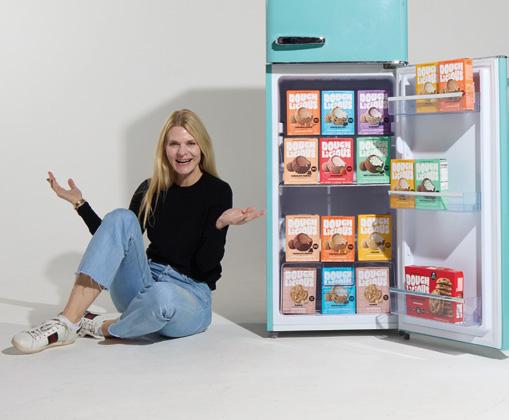


Keeping your new baby safe while they are asleep can be a huge concern for new parents. Owlet has launched the Dream Sock, which is a medically certified smart baby monitor that is worn on baby’s foot while they sleep. It provides live health readings, health notifications and personalised support directly to your smartphone to help parents establish the best sleep routine for their baby's needs. The Dream Sock monitors baby’s pulse rate, oxygen level, wakings and sleep patterns, giving parents peace of mind that their little ones are sleeping safely. Owlet, Dream Sock, £299, owletbabycare.co.uk
f your kids are anything like ours, they love tomato ketchup! However, we worry about how much extra salt and sugar they are consuming – even with the low salt and sugar versions. Step in Real Good, which has created a Tomato Ketchup with 80% less salt made from natural, plant-based, allergen-free ingredients. Made by a mum from Hampshire, the sauce has no artificial sweeteners, flavourings or preservatives and is suitable for vegans. We like to be honest in our product reviews and this does not taste exactly the same as ‘standard’ ketchup. It has a much more natural tomato flavour, similar to a tomato puree or paste, but it still tastes great with chips! Real Good Tomato Ketchup, £2.65 for 310g, ocado.com

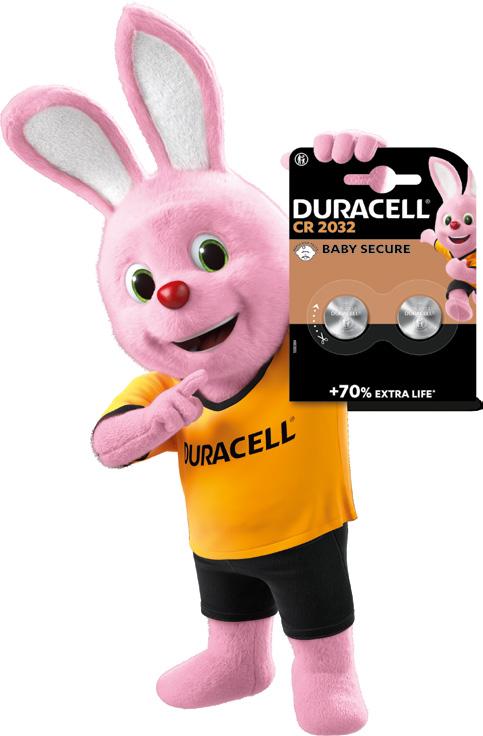
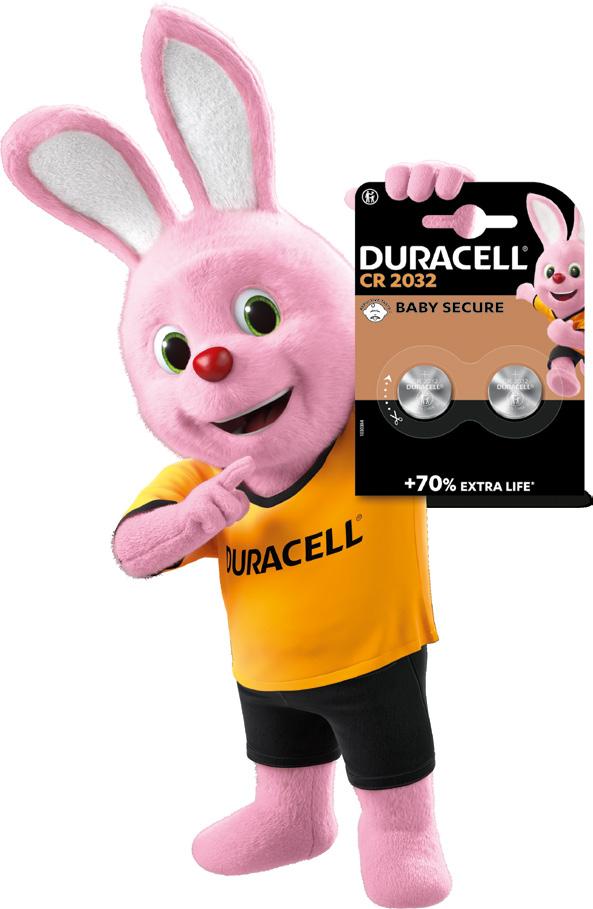




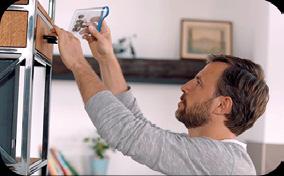

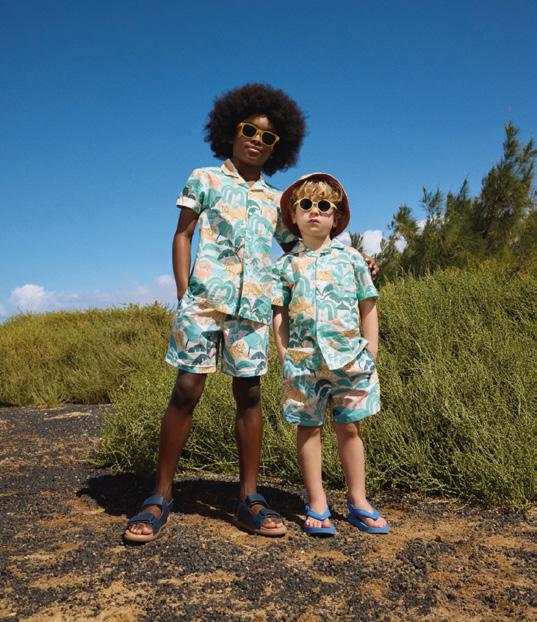

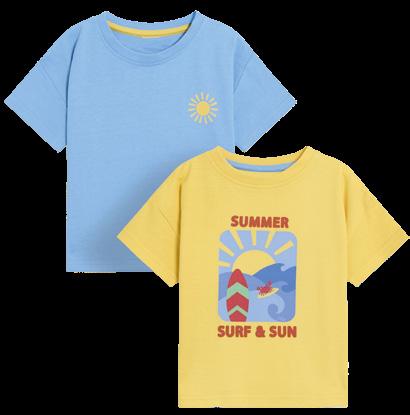

As the sun shines brighter and temperatures rise, get ready for a summer wardrobe refresh, says Becky Todd. Whether little ones are bounding to the beach, playing in the park or getting green fingered in the garden, we’ve rounded up the perfect pieces to let kids enjoy the sun while keeping cool this summer.




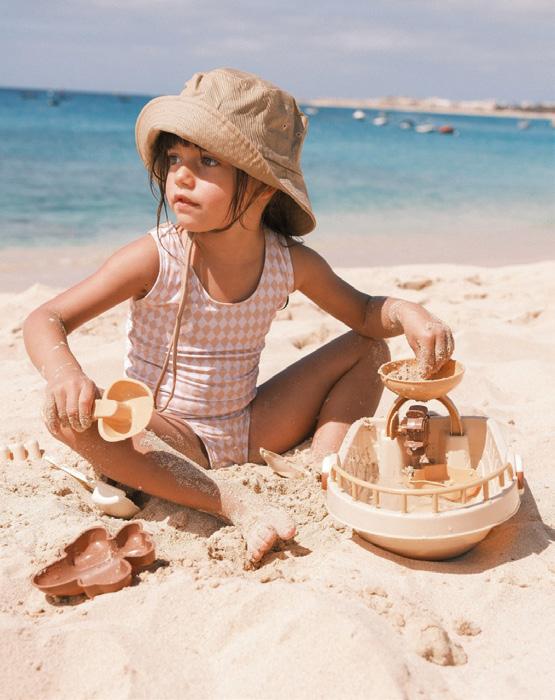
Dive into the best swimwear choices and must-have accessories to make a splash this summer!
Becky Todd







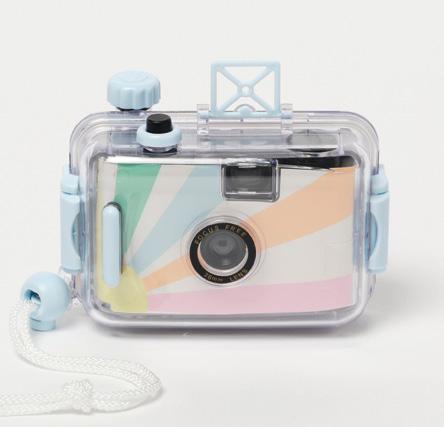

“I think only giving a rosetinted view of motherhood does a disservice to all parents”


TV presenter, mum to Alfie (4) and Ada (2) and Girlguiding ambassador, Ashley James, chats to Becky Todd about motherhood, body confidence and empowering the next generation of girls. Ashley shares how she juggles family life with advocacy – and why helping young people feel seen and supported is her biggest mission yet.
Ashley, you juggle such a busy career with being a mum – how do you find balance between your work and family life? Any tips for our parents?
Ashley James: I think most parents will know that at times the juggle can feel impossible – it can feel like having two full-time jobs with clashing schedules and you have to do both as if the other doesn’t exist. What I have found is the key to remembering is that you physically cannot split yourself in two, so don’t feel guilty when you need to remove yourself from one to do the other. Where possible, I try to have strict boundaries in place. I can’t be on my phone working between 5-7:30pm as that is my time with the kids. I refuse to feel guilty for my children being in childcare because it allows me to focus on my work. At one point, I was trying – and failing – to do both. I would also say, specifically to mums, remember that nobody asks dads if they feel guilty for having to work, so don’t let anyone project any outdated expectations onto you.


“Strength comes in being open and vulnerable, rather than hiding our emotions”

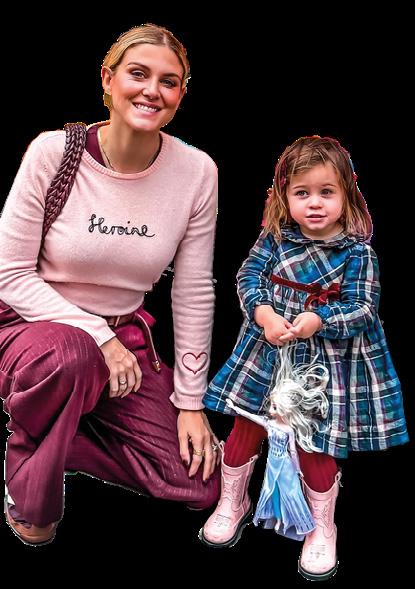
“Nobody asks dads if they feel guilty for having to work, so don’t let anyone project any outdated expectations onto you”
own emotions, desires and needs that sometimes trumps pragmatic thinking. And the second thing I noticed is how mums are not negative, as if they have a ‘negative’ mindset, but rather that there are lots of systemic challenges that make parenting really difficult. Childcare costs, navigating work hours VS school hours and holidays, poor postnatal care, etc. Parents –especially mums – need more support and less judgement. Both things have made me much more empathetic and understanding and make me want to continue to fight to make things better for parents.

Motherhood is such a transformative journey. What has surprised you most about becoming a mum and how has it changed your outlook on life?
I think there have been two big lessons for me. The first is that you cannot control your baby and your motherhood journey. Before I became a mum, I would have these strong ideas of what I would and wouldn’t do when I was a mum, but I was thinking pragmatically. Your baby will have their
Social media can create unrealistic parenting standards. How do you stay grounded and authentic online? And do you ever feel pressured to present a ‘perfect’ family life on Instagram?
I have never wanted to portray a perfect family life because I think it does a disservice to the very real struggles and challenges that come with parenting – whether it’s postnatal recovery, the juggle or any other challenge. I try to always be honest and open. I really struggled when I became a mum and what helped me was learning that I wasn’t alone with these thoughts and challenges. I think only giving a rose-tinted view of motherhood does a disservice to all parents and isn’t going to help society show more compassion – or convince people to change the system. I never really worry about not being authentic because I’m quite a ‘what you see is what you get’ person and I really trust and value my audience – they help and support me all the time. I give them the respect they deserve by sharing real life and I only work with brands that I would buy myself.

“Like most girls, I really struggled with body image as a teen and into my twenties”

You’ve become such a passionate advocate for girls and young woman. What inspired you to take on that role and has motherhood influenced your mission?
Like most girls, I really struggled with body image as a teen and into my twenties – lots of my friends still struggle now. I always felt passionate about fighting back against the unrealistic beauty standards and diet culture. I wanted to be the person I wish I had when I was a teenager. That’s why I became a Girlguiding ambassador, because I feel so strongly about helping young girls reach their potential. Since becoming a mum, it has reinforced my mission even more because I never want my daughter to grow up feeling like she has to shrink herself or chase unrealistic beauty standards.
You’ve been a strong voice for body confidence. How do you hope to help the next generation of girls build a healthy, positive relationship with their bodies?
I want girls to grow up knowing that they are enough. Never comparing themselves to each other, but knowing that beauty exists in uniqueness. I want to help protect them from diet culture, from unrealistic beauty standards (like photoshopping and filters), and most I want them to know that health, happiness and confidence are not tied to being the most shrunken version of ourselves. Diet culture and fatphobia is so infiltrated in our society and I really want girls to know that moving their body doesn’t have to be punishment and nourishment doesn’t have to be restrictive.
What do you think are the biggest challenges girls face today?
There are so many challenges for girls today - filters and editing apps are so easily available and with social media we are constantly comparing ourselves to people online who might have edited their own appearance.

When I was young, we didn’t know about aesthetics like Botox and filler, whereas now there is so much more awareness of it and really young girls are wanting permanent work done. There is also the rise of Ozempic and other weight loss jabs, which again are pinning skinniness as the most important trait over health. On top of that, there are a whole host of other challenges the internet brings, like the rise of misogyny, deep fakes and other online harms.
As someone who speaks openly about mental wellbeinghow important is it for you that children see vulnerability and strength side by side?
AJ:
Oh, it’s so important – we need to see that even the ‘strong’ successful and famous people can struggle mentally. Strength comes in being open and vulnerable, rather than hiding our emotions. Plus, when we are open, we can not only seek support, but we can also create community because we realise a lot of the things we struggle with are shared among others.
lifeline and taught me so many things. I met other girls and became more confident during my time there.
I’ve worked with Girlguiding on a couple of their campaigns and what I love about them is they listen to girls and give them a platform to have their voices heard. It’s not about adults
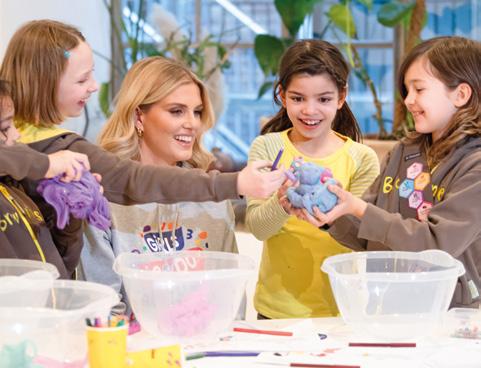
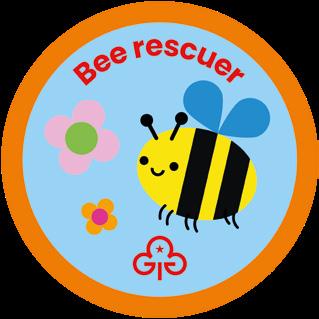
Becoming a Girlguiding ambassador is such a meaningful role. What made you want to get involved with the organisation and why does it feel important to you as both a mum and a role model?
AJ:
I was a Rainbow and a Brownie myself and I have so many fond memories of my time there and saw first-hand the positive impact being a member can have on girls. Where I grew up there weren’t too many activities for children, so Girlguiding was a


“Girlguiding helps all girls know they can do anything”

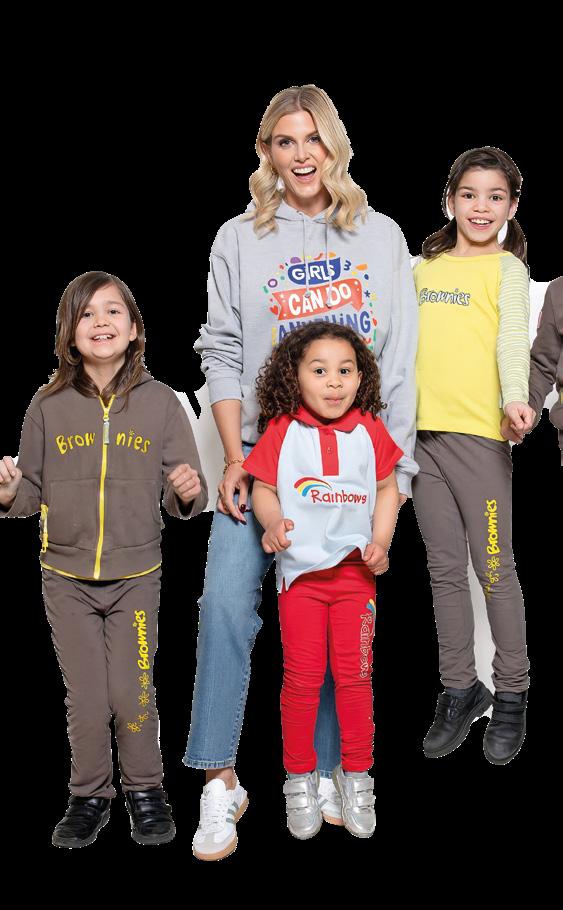


deciding what they think is best for children.
Our values are very aligned and we are both committed to continuing the fight for equality and raising girls to love themselves and know their worth.

What message would you give to parents who are considering Girlguiding for their daughters?
Do it! Honestly, as both an ex-Brownie and now as a mum, I cannot praise them more for the opportunities they will provide your daughter. Girlguiding helps all girls know they can do anything, and it shows girls aged 4 to 18 a world of possibilities big and small. One where every girl can laugh and learn and be herself. They give girls a welcoming space away from the daily pressures they face in their lives, where they can learn new skills, try things for the first time – without any judgement. Your daughters will also build friendships and have fun and adventures.
Were there any myths or misconceptions about Girlguiding that surprised you once you got involved?
I had only ever heard amazing things about Girlguiding and getting involved has only cemented that belief. They really care about girls and their futures.
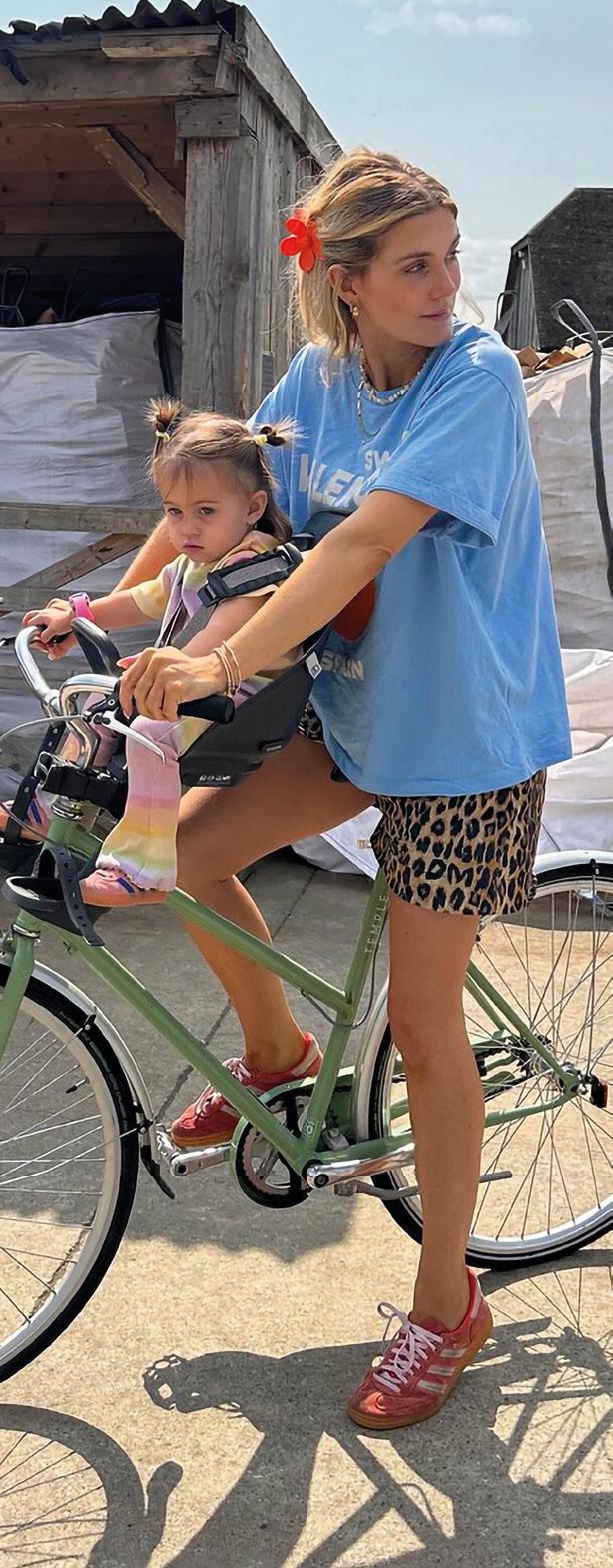

Why do you think it’s so important that Girlguiding evolves with the times, especially in launching 72 new badges over summer… and do you have any favourites?
The world is constantly evolving. The pressures young girls are facing now didn’t even exist when I was a Brownie and none of us had the internet or access to smartphones. It’s imperative that Girlguiding stays relevant for young girls and helps to support them in the world they live in now – a digital world. I’m so proud to be an ambassador for such a progressive organisation. They are the UK’s largest youth organisation dedicated completely to girls.
With the ever-evolving world in mind, Girlguiding overhauled its programme in
“There are so many challenges for girls today”
2018 introducing more than 800 new activities and badge challenges. To coincide with the programme entering its 7th year and effectively becoming Brownie age, the 72 new interest badges are being added which is just so exciting. They were co-designed with more than 20,000 girls, which again shows that girls are at the heart of everything they do.
For me, the most exciting thing is that interest badges can now be done in units – this is based on feedback from the girls that they enjoy doing badges even more when they do the activities with their friends, so they have made completing them more flexible for everyone. I think community and friendship is so important in a world where we are becoming more individualistic because of communicating on phones. As a bookworm, I love the new badges that encourage reading.
What’s next for you? Do you have any exciting projects or goals on the horizon that you’re particularly passionate about?
I’m pouring my heart and soul into a big top-secret project at the moment that’s a life ambition of mine. I hate to be mysterious, but all will be revealed soon. Other than that, I am continuing my mission to be a voice for women on This Morning and social media and am having lots of exciting conversations, so watch this space!
Early bird or night out?
A: “I like being able to do both but if I had to pick one - night owl.”
One thing you always have in your bag?
A: “A lip balm.”
Guilty pleasure snack?
A: “I never feel guilt when it comes to food. My favourite snack is beef Hula Hoops.”
Dinner with one inspirational woman past or present - who would it be?
A: “Ooh, such a tough one. Maybe Michelle Obama.”
One parenting moment that makes you laugh out loud?
A: “There are so manyespecially now they can talk and say hilarious unfiltered things all the time. Probably when Alf did an explosive poo on my dress moments before a TV appearance and I had to wash and dry it in the sink moments before we went live!”



Follow Ashley James for updates on parenting, body confidence and her work with Girlguiding at ashleylouisejames.com or by following her Instagram. For more information about Girlguiding, registering and volunteering visit girlguiding.org.uk.



Get a £100 gift card† when you take out a policy with Post
Life is full of important moments — and protecting the people who matter most is one of them. Life insurance is designed to provide financial support to your loved ones if you pass away during the policy term.

It can help cover key expenses such as mortgage or rent payments, everyday living costs, or future financial needs — offering reassurance during a difficult time. With cover available up to £750,000 (depending on age),
it’s a straightforward way to provide peace of mind now and financial protection for the future.

As a thank you for choosing Post Office Life Insurance, you can select a £100 Tesco, M&S or Amazon.co.uk Gift Card* †T&C’s apply
Apply online at www.postoffice.co.uk/life-cover/familyfirst or call us on 0800 085 7737††

Cover you can trust
Post Office Life Insurance is provided by Scottish Friendly, who paid 99.5% of life insurance claims they received in 2023. So it’s reassuring to know that your policy is backed by a provider trusted by thousands of other families.
Support for your children’s future
Whether it’s school fees or setting them up for what’s next, a cash payout from your policy could make a lasting difference.
Help your family stay at home
Our decreasing cover is designed to help protect your mortgage, with the payout amount reducing as your mortgage does. That way, your loved ones can stay at home where they feel safe and settled.
Complete protection with optional extras
You can also choose to pay extra for children’s cover and critical illness cover for even more peace of mind.
24/7 GP access
As a policy holder, you’ll get 24/7 UK registered GP access online or by phone. This covers you, your partner and children up to the age of 21. There’s no limit on how many times you can use it. Access other benefits through our health and wellbeing services** 1 2 3 4 5
**This service is separate from Post Office Life Insurance’s policy contract. It’s free but may be withdrawn at any time.
How much could cover cost you?
Here’s a look at how much life cover could cost based on your age: ?
Age 35 38 40 45 Premiums based on non-smokers in good
buying
level cover over an 18-year term. Based on Finder’s 2025 report, the average price of coffee in the UK is £3.35. https://www.finder.com/uk/banking/average-price-of-a-coffee.
†£100 gift card offer minimum premium and 180-day qualifying period applies. For offer terms and conditions please visit https://www.postoffice.co.uk/life-insurance-gift-terms
††Calls to 03 numbers will cost no more than calling a standard UK number starting with 01 or 02 from your fixed line or mobile and may be included in your call package. Calls may be monitored or recorded for training and compliance purposes.
* Restrictions apply, see amazon.co.uk/gc-legal
Nestled among the pristine coastline of Northern Sardinia, the Resort & SPA Le Dune offers a harmonious blend of natural beauty, family-centric amenities and genuine Sardinian hospitality throughout. Becky Todd spent a week here with her husband and two daughters aged 5 and 1, and they are already counting down the months until they can return.

After trawling Tripadvisor and diving into reviews and rankings, again and again, there was one name that kept popping up: Resort & SPA Le Dune. With glowing praise for its familyfriendly facilities, warm hospitality and stunning beach setting, it quickly rose to the top of our shortlist. And from the moment we arrived, it was clear to see why.
On arrival at Le Dune Resort, it was clear this wasn’t just another family holiday. Greeted with genuine smiles and a seamless check-in,
“A pristine stretch of golden sand extending over 8km”

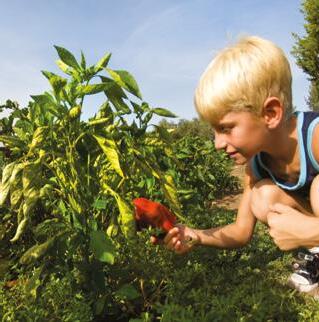
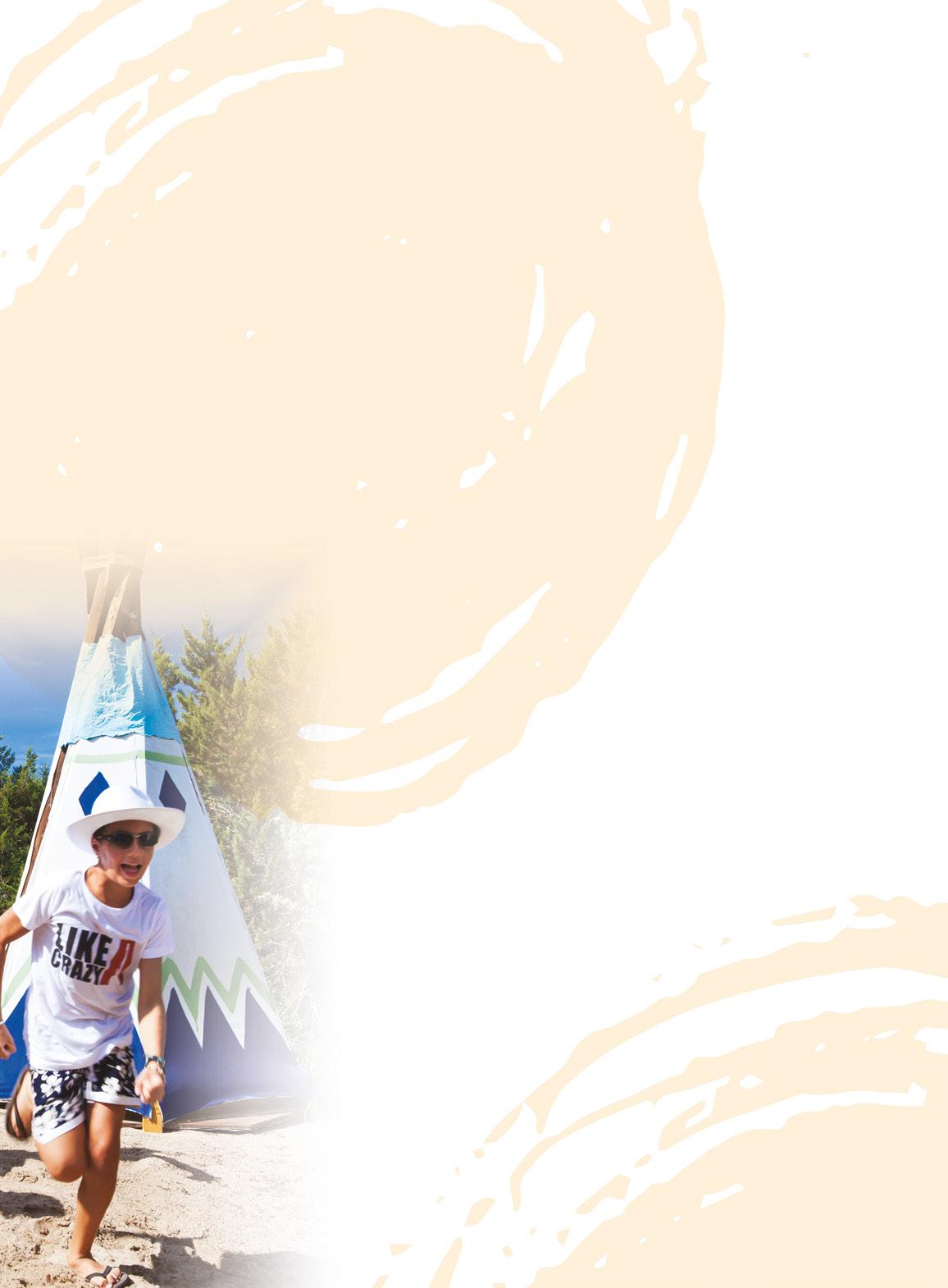
the staff made us feel so welcome. Whether helping with bags, offering refreshments or guiding us to our family suite with thoughtful detail, their warmth set the tone for the entire stay.
Made up of two interconnecting rooms, the family suite accommodation really understood what families need. Each room had its own entrance, allowing flexibility for early risers. Both rooms came with a generous private terrace, perfectly positioned to tire out tiny toddling legs before bedtime. The décor was clean and calming, with honey-hued Mediterranean touches that gave the rooms a subtle nod to their rich heritage. Both rooms were air-conditioned and featured generous-sized beds and modern bathrooms, the perfect size for a family of four.
The pool facilities at Le Dune Resort are certainly a standout feature. Spread across the expansive resort grounds, the six pools cater to all ages and preferences – from baby pools perfect for younger children, to lagoon-style pools cocooned in nature that are ideal for parents looking to unwind. The six pools are immaculately maintained, with plenty of shaded loungers. Family bars are perfectly placed, so you are never far away from refreshments (a must with little ones), making it easy to spend a full carefree day by the water. The gradual entry
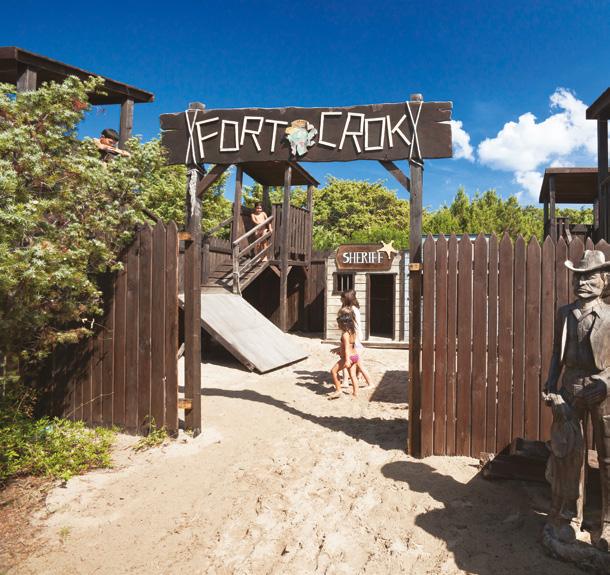
into the children’s pool meant we could enjoy soaking up the sun, while the children could safely play in the shallow water nearby.
“It’s rare to find this level of thoughtfulness for families, but Le Dune has absolutely raised the bar”
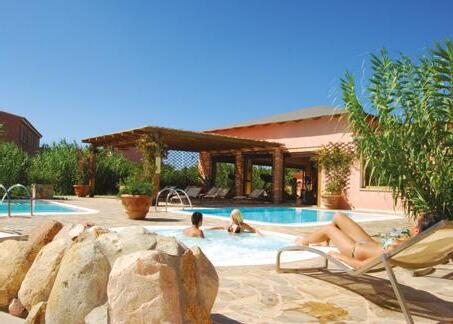

The resort boasts direct access to Li Junchi Beach, a pristine stretch of golden sand extending over 8km. Perfect for leisurely walks, building sandcastles or simply soaking up the sun. With one of the ten Le Dune restaurants positioned at the entrance of the beach, it was the perfect pitstop for drinks and ice cream. Le Dune provides a golf buggy shuttle service to and from the beach, which was one of the girls’ beach highlights and was perfect for carrying buckets, spades, sunhats and all the other bits and bobs that come with a beach trip with children. This made our beach trips far less stressful, as we didn’t have to worry about there being too much to carry there and back. And if building sandcastles and splashing in the sea haven’t worn the kids out, there is a wide range of water sports on offer too – from sailing, paddleboarding and windsurfing to deep-sea diving.


The kids club at Le Dune Resort is exceptional. Open six days a week with four different clubs – baby, mini, junior and teen (aged 3-17) – it really does have something for everyone. The club offers a wide range of activities, including arts and crafts, sports, games and themed events that kept our little ones smiling from morning to night.
From the moment we arrived, they were greeted with warmth, enthusiasm and a sense of adventure that carried through the entire holiday. Our girls loved the play area so much, (which also included an indoor soft play and ball pit), we would spend our afternoons here playing with the girls. The staff were more than happy for us to stay and went above and beyond in trying to cater for our little ones’ interests. It’s rare to find this level of thoughtfulness for families, but Le Dune has absolutely raised the bar. Taking the fun right through into the evenings, they also host a children’s disco six days a week in one of the outdoor play areas. Think giant inflatable fun, music and dancing – the perfect way to tire out little ones before bed!
Dining at Le Dune was most certainly the highlight of the holiday for us. Across the resort’s numerous restaurants, we
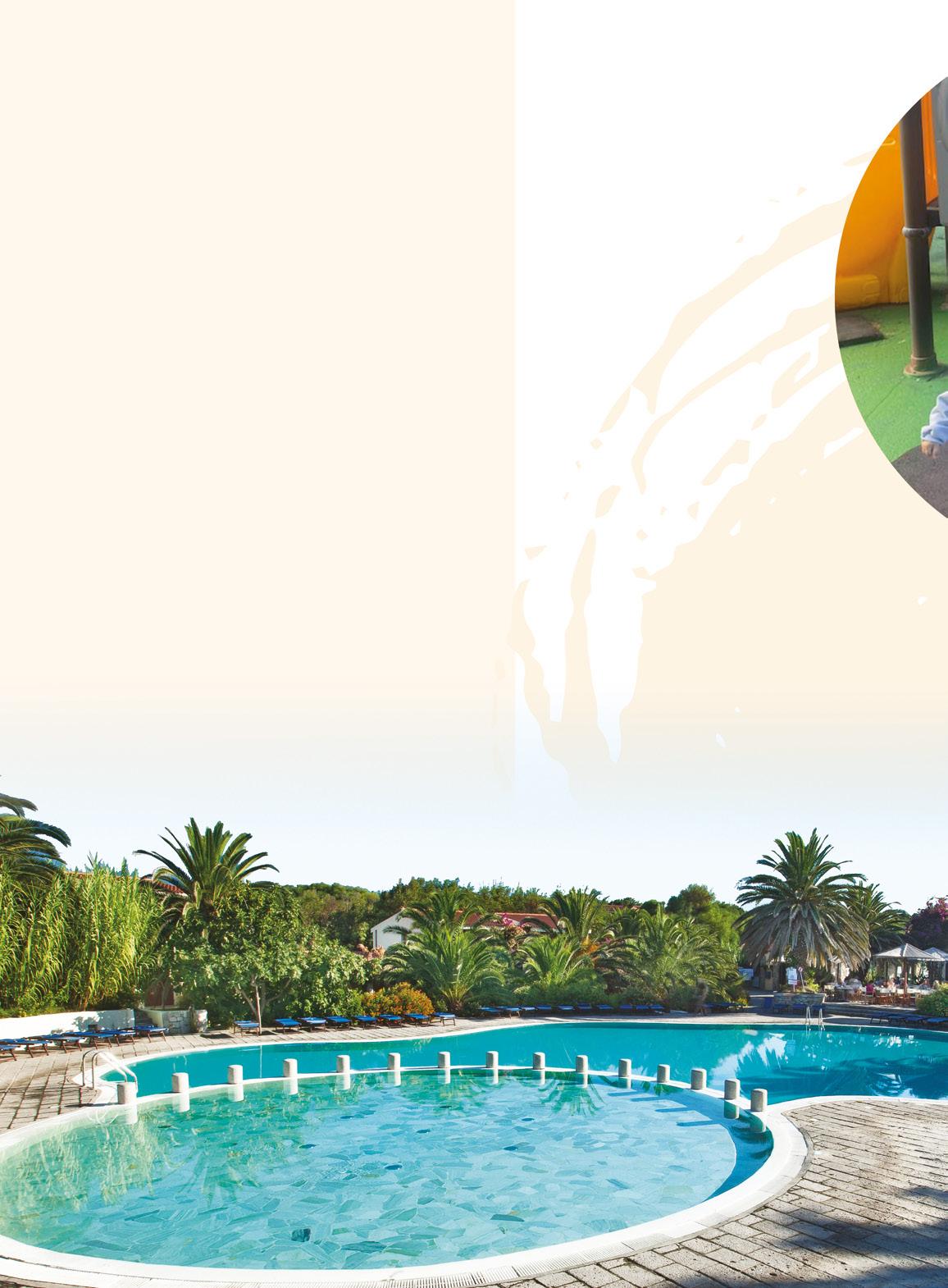
were treated to a feast of flavours, from freshly grilled seafood and meat to handmade pasta (which the girls loved watching being made) and vegetables fresh from the resort’s garden. The quality was consistently outstanding, with beautifully presented dishes that reflect both Sardinian tradition and culinary finesse. It was wonderful to watch the girls become excited to try something new each evening, turning every mealtime into a shared gourmet experience for the whole family.
“Family bars are perfectly placed, so you are never far away from refreshments”
The Peter Pan Restaurant is a charming children’s restaurant that blends fun with fantastic food for the guests of the baby and mini club. The welcoming space features a bright playful atmosphere where little ones
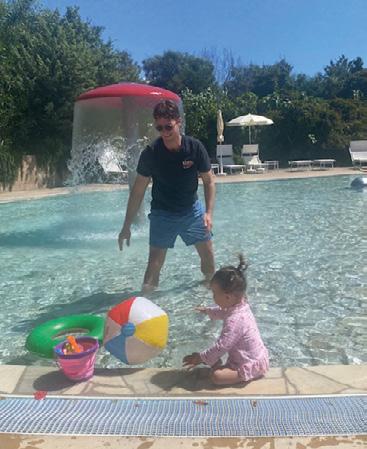
“Spread across the expansive resort grounds, the multiple pools cater to all ages and preferences”
can feel right at home. With much of the food sourced directly from the resort’s own vegetable garden and eggs fresh from the aviary, the meals are healthy, delicious and most importantly child approved!
Not forgetting about the very teeniest of tummies, for us this was the absolute hidden gem of the holiday. Fully equipped with everything parents might need, including sterilisers, microwaves, high chairs and more. But what truly sets it apart is the resort’s personalised chef, who prepares fresh, organic meals tailored to each baby’s needs. Using local ingredients and produce from the resort, nutritious purees, broths and baby-friendly dishes can be made to order and are available to eat in or take away. This was perfect for our tiniest
“The family suite accommodation really understood what families need”
padel courts, a five-a-side football pitch, a mini basketball court, archery and a fully equipped outdoor fitness area, you can really make sure no two days are the same. And for a change of pace, yoga under the shade of ancient junipers offers the perfect breather. My girls loved joining in with a game that vaguely resembled ‘football’ with other children in the evenings. The warmth and inclusivity of Le Dune really was contagious and it was lovely to see the girls making friends with children from all over the globe.
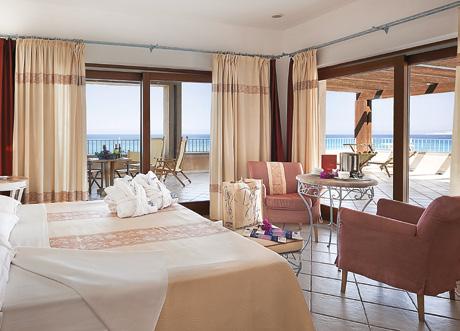
member and they also provided a daily supply of organic items, including milk, yoghurt, fruit juices and biscuits.

Not forgetting about the adults, the Sabine Spa offers relaxation in the most beautiful setting. The spa features three open-air freshwater swimming pools with varying temperatures, including a jacuzzi, a pool with water-jet neck massagers and hydromassage beds with counter-current flow treatments. Additional amenities include a cardiofitness gym, Turkish bath and both indoor and outdoor relaxation areas equipped with sun loungers. It was so special to unwind here after a day of family activities and a full-body massage was the perfect finishing touch.
For active families, Le Dune is an absolute dream playground for all things sporting! With four tennis courts, two
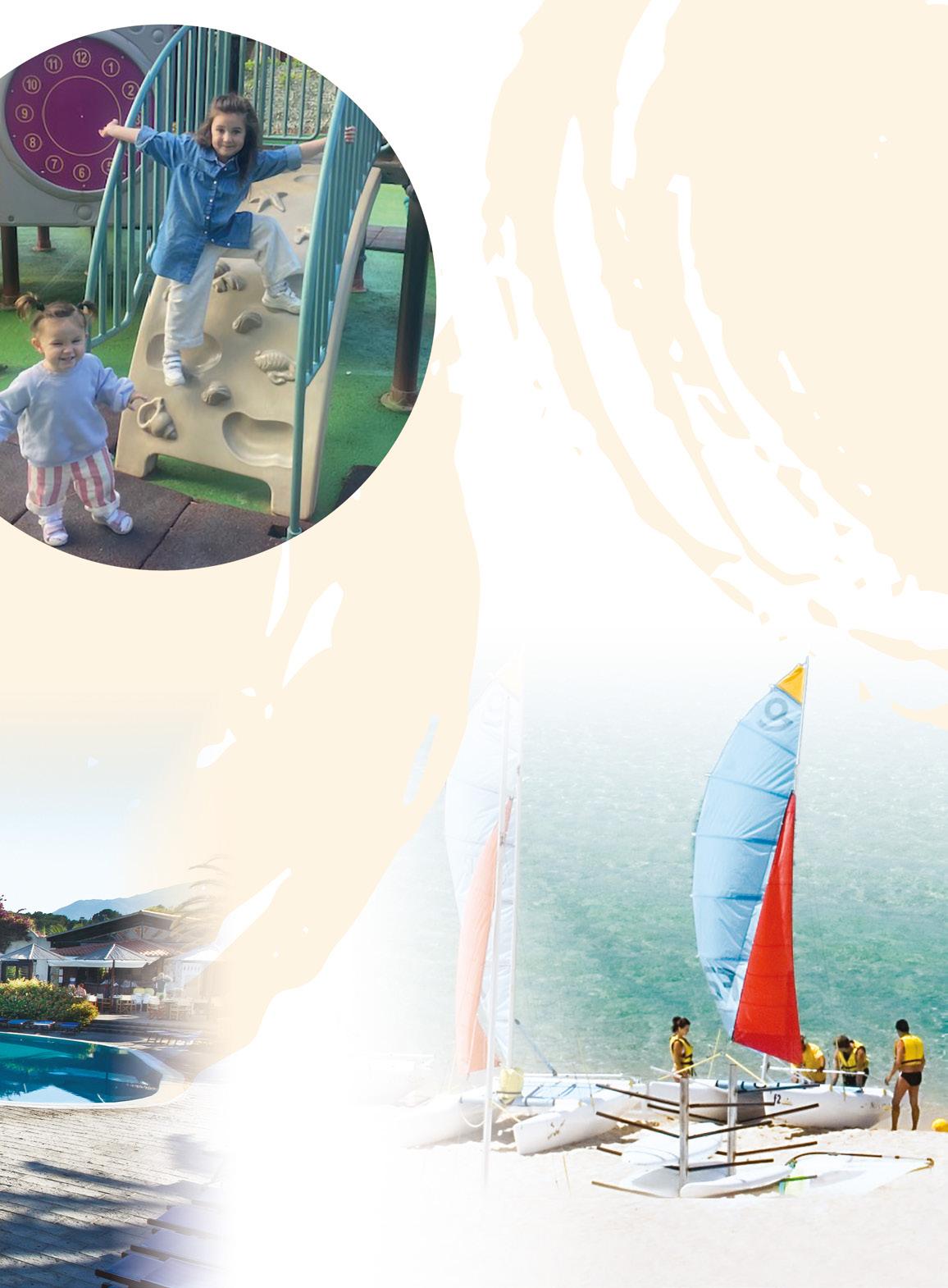
With practical steps that families can appreciate, the resort takes sustainability seriously, using energy-efficient lighting, offering outstanding recycling facilities throughout the resort and meals celebrating locally sourced ingredients. The sustainability measures put in place not only protect Sardinia’s natural beauty, but also ensure the whole resort is impeccably clean –something even the girls noticed.
The quaint ‘village square’ inside the resort is lined with a variety of holiday essentials, from artisan shops where guests can browse unique souvenirs and local delicacies to a pharmacy full of everything you might need for children. In the evenings, the relaxed village square transforms into a vibrant market and live music venue, providing a perfect setting for leisurely strolls and family outings. The girls loved coming here after dinner and devouring homemade ice cream, while enjoying the live music and soaking up the sunny Sardinian ambience.
Le Dune Resort is a family holiday that truly delivers on every level. From the warm, attentive staff who go out of their way to make every guest feel welcome, to the thoughtfully designed children’s facilities, every detail is crafted with such care. The food is outstanding and the setting itself provides the perfect backdrop for both adventure and relaxation. If you want a holiday where everything is ready-made to entertain your little ones, without forgetting about the adults, Le Dune is for you!
1 Outdoor play area: climbing frames, slides, trampolines, climbing walls and more – a paradise for little adventurers.
2 Food: thoughtfully prepared using local ingredients, a treat for tiny tastebuds.
3 Aviary: a peaceful shaded space where little ones can get up close to nature.
1 Staff: all staff go above and beyond to make every family feel welcome and cared for throughout their stay.
2 Cleanliness: an exceptional standard of cleanliness ensuring every corner of the resort is spotless.
3 Variety: from restaurants to pools, to fun-filled play areas, there is such a wide variety in absolutely everything here.
A four-metre-high solid mass of rock that has been eroded by the atmosphere over the ages to give it the unmistakable outline of a sitting elephant. It is archaeologically important since it houses two domus de janas (houses of the fairies), which date back to the preNuragic period and are located inside.
Photographs, installations, statues and artwork by artists and street artists from all over Italy. A free, permanent, open-air contemporary art gallery. The visit to the museum is divided into various itineraries within the village of Aggius, each marked with different colour footprints.
Children (0-23 months) stay FREE Children aged 2-12: 60% DISCOUNT Children aged 13 and above: 50% DISCOUNT
One of the most visited in Sardinia, it demonstrates the ancient hand-made weaving techniques used to create everyday items, from baskets to fishing cages and typical fishing rafts for use in the lagoons.
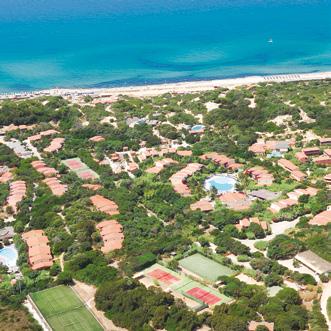
FREE cot (must be requested in advance)


The Resort & SPA Le Dune, awarded as the Best Beach Resort in Italy, is nestled on the northern Sardinian coast. It consists of five 4-star hotels, two of which are 4-star superior. More information including booking details can be found at resortledune.com or by scanning the QR code.


You’ve got the choice of driving yourselves, or hopping aboard one of our comfortable coaches from a variety of pick up points around England. Our 12 hotels mean we’re sure to have destination that’s right for you and the family. All our holidays include clean and comfortable accommodation, half board including cooked breakfast and three-course evening meal, live nightly entertainment and great customer service. Plus with our great Kids Stay Free offer, you’ll be able to make your budget go even further.
All children aged five and under STAY FOR FREE when sharing a room with two paying adults. For children aged 6-12 the first one STAYS FREE while the second and third pay 50% of the adult price.
Every break includes:


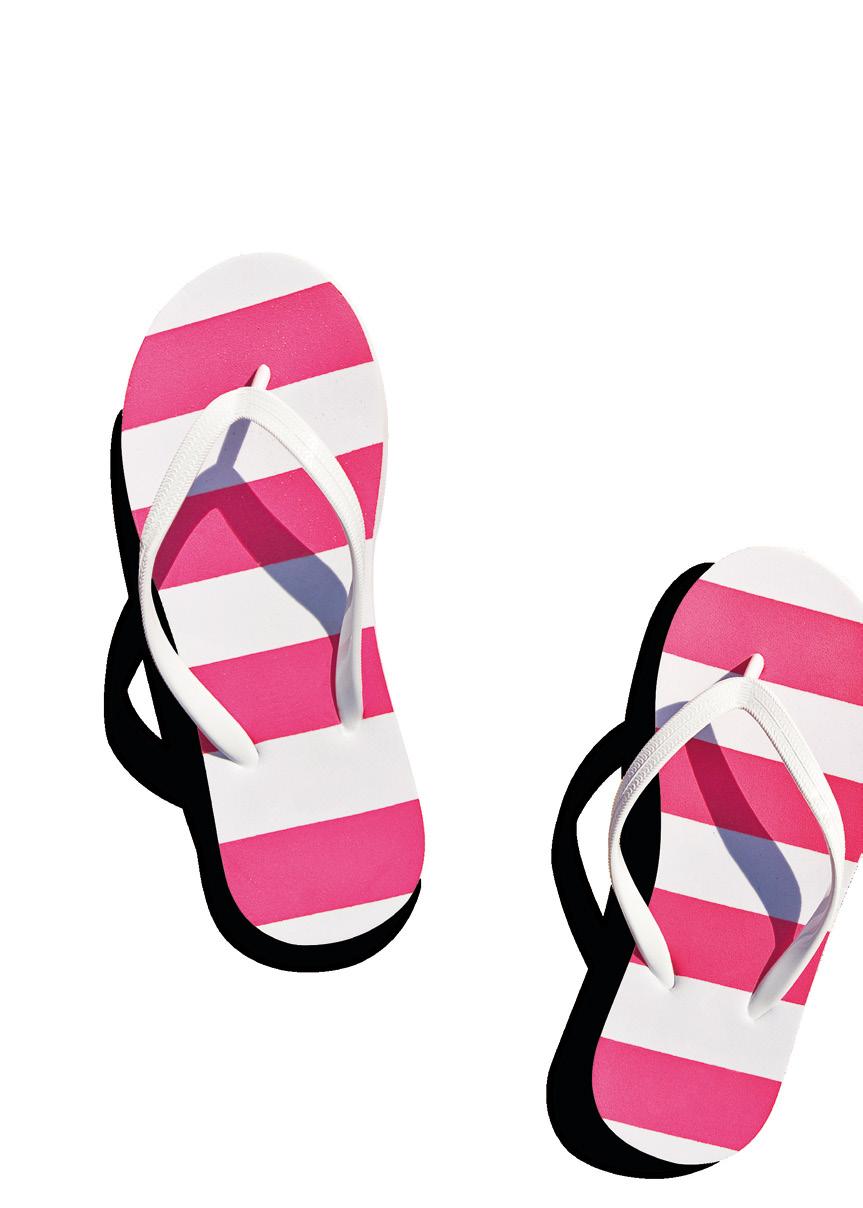
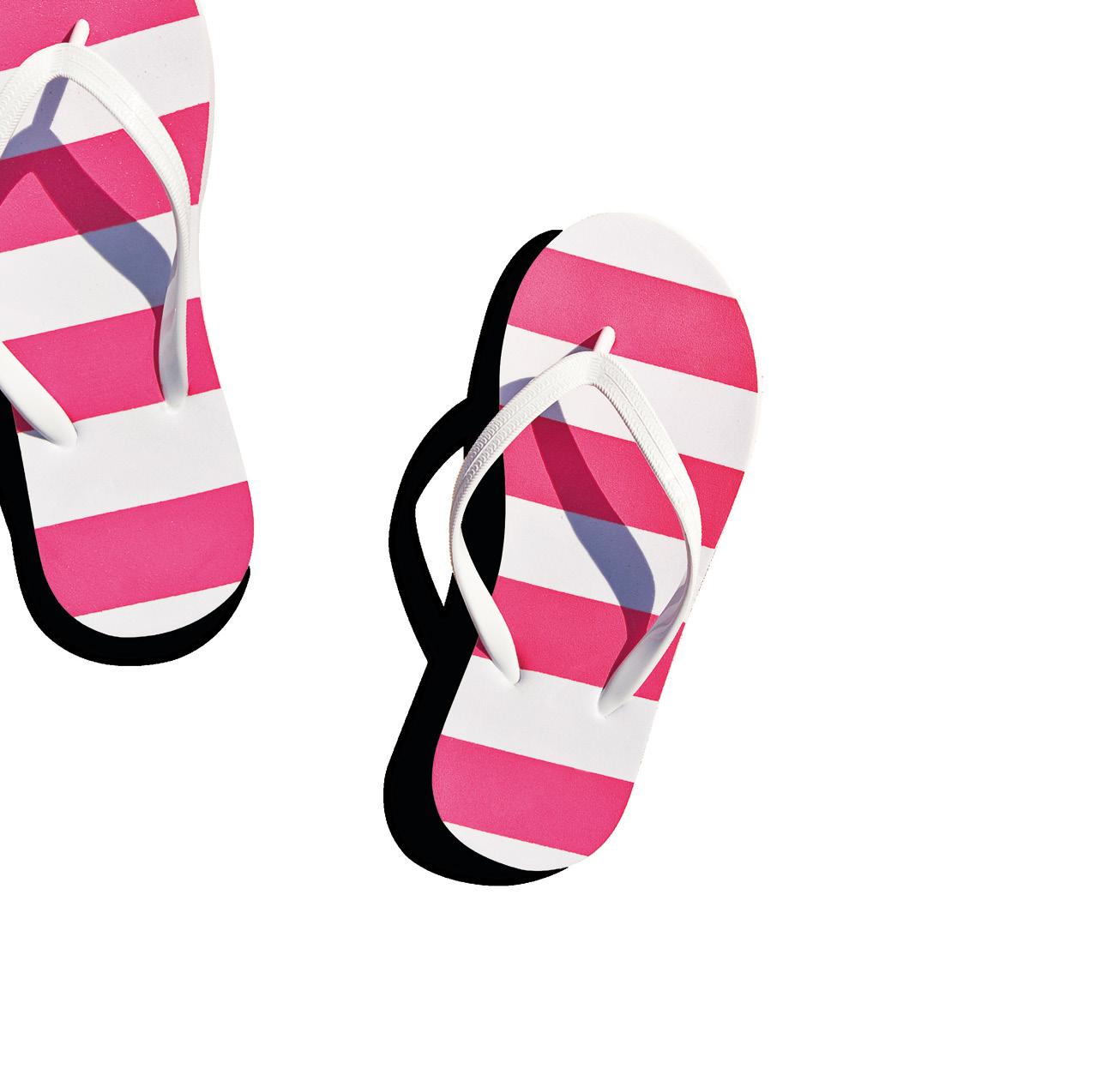

We know how important it is to keep kids covered, especially when you’re away from home. That’s why they’re included on your family policy at no extra cost if they’re under 18 with no medical conditions.
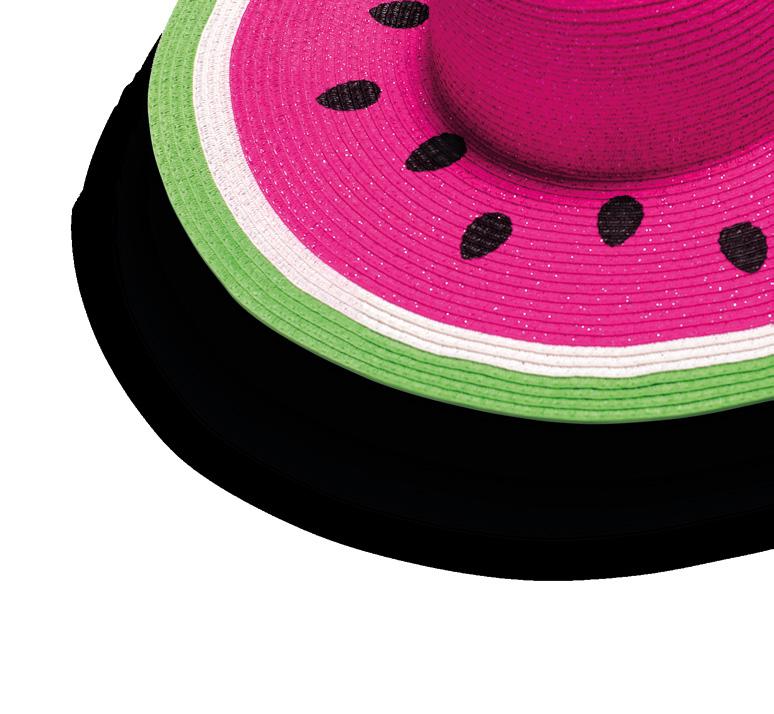
Keep your family’s tech safe with optional gadget cover. And add extra protection like trip disruption or cruise cover for added peace of mind, available for an additional premium.
2
Delays don’t have to spoil your family holiday. If your flight is delayed by two hours or more, you can get a free lounge voucher or, where available, a cash payout when you choose our Premier cover with Flight Delay Assistance Plus.2
You can pick from three types of cover: Economy, Standard or Premier. Choose the one that fits your trip. Our Premier cover gives up to £15 million for medical emergencies and has a 5-star Defaqto rating, giving you extra reassurance when travelling with your family.
24/7 medical help, wherever you are From tummy bugs to temperatures, kids’ illnesses can crop up at any time. Luckily, all our policies come with 24/7 access to medical support3 while you’re abroad, so help is never far away.
Our Premier-level travel insurance policies are independently rated 5 stars by Defaqto, a trusted industry standard.
Travel Money | Insurance | Passport
We can help with that
Plan your next family summer holiday or day out in the UK with a little help from Tripadvisor.
According to Tripadvisor’s latest Summer Travel Index, 85% of Brits are planning a summer holiday this year, with one-third planning to visit a new destination. From coastal towns to bustling cities, Tripadvisor’s list of Trending Destinations has something for everyone.
We asked Tripadvisor’s AI trip builder – a free tool that creates bespoke itineraries based on your destination and interests – to put together a family-friendly day out for each of these top trending destinations for summer 2025.
“The Dundee Science Centre brings science to life with interactive displays and live shows for curious little minds”
expeditions. The Dundee Science Centre brings science to life with interactive displays and live shows for curious little minds. Transport fans will love the Dundee Museum of Transport, with its collection of vintage vehicles. For lunch or dinner, Rama Thai offers delicious, family-friendly Thai cuisine in a beautiful setting, while Gidi Grill is

perfect for hearty burgers, steaks, and pasta dishes in a relaxed atmosphere.
Llangollen is a haven for outdoorloving families. Start with a sweet treat and a famous Welsh oggie at the Llangollen Oggie Shop & Fine Foods. For a spot of adventure, try this award-winning whitewater rafting experience – an unforgettable thrill for older kids and teens. The historic

The Scottish city of Dundee is packed with hands-on experiences, starting at Discovery Point, where you can tour the RRS Discovery and learn more about Captain Scott’s Antarctic

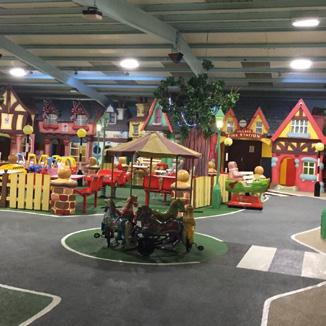

A previous City of Culture winner, there is so much to see in Coventry. The Coventry Music Museum is a hit with music lovers of all ages, featuring interactive exhibits and stories of the city’s musical history. The Midland Air Museum will delight little ones with its collection of iconic aircrafts to explore and hands-on displays. The Herbert Art Gallery & Museum offers creative activities for all ages. For a tasty meal, Zorbas serves up Greek favorites in a friendly setting, while Turmeric Gold, with its beautiful decor, is known for its vibrant Indian cuisine – both great choices for families.
“Visit Hardy's Animal Farm, where kids can meet an array of friendly animals, enjoy tractor rides, and burn off some energy in the adventure zones”
Tripadvisor, the world’s largest travel platform, helps millions of people each month become better travellers.

Ingoldmells, near Skegness, offers a classic British coastal day out. When you’ve had enough of the arcades, you can head to Hardy's Animal Farm, where kids can meet an array of friendly animals, enjoy tractor rides, and burn off some energy in the adventure zones. There’s also Tiny Tots Village Playzone, which offers a safe space for younger children to let off steam. When it’s time for a break, the House Of Coffee is a cozy spot for parents to recharge. For lunch or a treat, Pie Palace serves up classic British comfort food with plenty of kid-friendly options and Vincent's is a welcoming family restaurant with a relaxed vibe.
Hunstanton is a beautiful Norfolk seaside town. Start with breakfast at the Cliff Top Cafe, with views across the coast, then wander down to Hunstanton Beach for sandcastles and sea air. If it’s not quite beach weather, you can check out SEA LIFE Hunstanton and marvel at the fascinating underwater creatures or head to The Princess Theatre Henry's of Hunstanton is a local favorite for fish and chips!
Tripadvisor’s AI trip builder is a free tool that gives you a personalised itinerary for your destination of choice, based on who you’re travelling with and your interests. Itineraries include recommendations on hotels, restaurants and activities in your chosen location, informed by the millions of reviews and opinions shared by real travellers on the site.





British Skin Foundation spokespeople, Dr Adil
Sheraz, Consultant
Dermatologist and Dr Sophia Rajenthiran, Senior Fellow
Dermatology, explain the best ways to keep your kids safe in the sunshine this summer.
Whether you’re playing in the garden, exploring the park or heading down to the beach, there’s nothing quite like spending a sunny day with the family. Sunshine can boost our mood, provide essential vitamin D and encourage us to get outdoors and be active. However, while sunlight has its benefits, too much exposure without adequate protection can lead to painful sunburn, skin damage, premature ageing and an increased risk of skin cancer.
“A child’s skin is especially vulnerable, as it is thinner and has less melanin”
The sun emits ultraviolet (UV) radiation in the form of UVA and UVB rays. UVA rays penetrate deep into the skin and are associated with premature ageing and long-term skin damage. UVB rays, although less penetrating, are mainly responsible for sunburn and play a significant role in the development of skin cancer. Both types of rays contribute to cumulative skin damage and prolonged exposure significantly increases the risk of developing various types of skin cancer, including melanoma, the most dangerous form.


particularly from April to September in the UK and all year round in hotter climates. But UV radiation doesn’t disappear when the clouds come out. Up to 80% of UV rays can pass through cloud cover, meaning sunburn can still occur on overcast days. Additionally, surfaces like snow, water and sand reflect UV rays and increase the intensity of exposure. So families should remain cautious even while skiing, doing watersports or sitting under a beach umbrella.

“Clothing is one of the most effective ways to protect skin from the sun”
vulnerable, as it is thinner and has less melanin, the pigment that helps protect against harmful UV rays. This means they burn faster and more easily than adults. Burns sustained in childhood can seriously increase the risk of developing skin cancer later in life. Teaching our little ones sun safety habits from an early age helps protect their skin for years to come.
UV rays are strongest between 11am and 3pm,
Use a broadspectrum sunscreen with at least SPF 30 and high UVA protection (marked with a UVA star rating or “broad spectrum” label). Apply it generously 15-30 minutes before going outside and reapply every two hours or immediately after swimming, sweating or towel drying.
Children may need help applying sunscreen, especially on often-missed areas like ears, backs of knees, tops of feet and necks. Don’t forget lips and use a lip balm with SPF.
Babies under 6 months are more likely to react to chemicals in sunscreen due to their delicate, sensitive skin. It is advised to avoid sunscreen altogether at this age. Instead, keep them out of direct sunlight and protect their skin with clothing, hats and shade.
People with eczema or sensitive skin often react to various ingredients, so finding the right sunscreen can take some trial and error. Choose one that is fragrance free and perform a patch test before using it liberally.
Clothing is one of the most effective ways to protect skin from the sun. Opt for tightly woven fabrics or specially designed UV-protective clothing, which often has a UPF (Ultraviolet Protection Factor) rating. Long-sleeved tops, long shorts or trousers and wide-brimmed hats that shade the face, neck and ears offer excellent protection. Wraparound sunglasses with UV protection are also important to safeguard young eyes from sun damage.
Encourage children to play in the shade during peak sun hours whenever possible. Use umbrellas, trees or canopies to provide shelter when the sun is strongest. For babies, complete avoidance of direct sunlight is recommended, especially between 11am and 3pm.
Children learn by watching adults. Practise good sun safety yourself. Apply sunscreen, wear a hat and sunglasses, and seek shade when necessary. Showing that sun protection is a normal part of outdoor activities encourages children to adopt these habits for life.
Most importantly, teaching children themselves to respect the sun’s power without fearing it, helps them develop smart habits that last a lifetime.
Sun safety is a simple yet powerful way to protect your family’s health now and in the future. By making smart sun habits part of everyday life, you’re not only preventing painful burns, but also reducing the risk of serious skin problems later on. With the right precautions, your family can enjoy the outdoors safely, all year round.
The British Skin Foundation is the only UK charity that raises money to fund research into all types of skin diseases, including skin cancer. For more information, visit: britishskinfoundation.org.uk
“UV rays are strongest between 11am and 3pm, particularly from April to September in the UK and all year round in hotter climates”
Incorporate sun protection into your family’s daily routine, just like brushing teeth or wearing a seatbelt. Keep sunscreen, hats and sunglasses by the door or in your bag, so they're always ready to go when heading outside.
It’s important to remind anyone looking after your child, such as a childminder, babysitter or grandparent, about the dangers of sun exposure and the importance of sun protection. Check with staff at schools and nurseries to see how they are supporting sun safety policies.
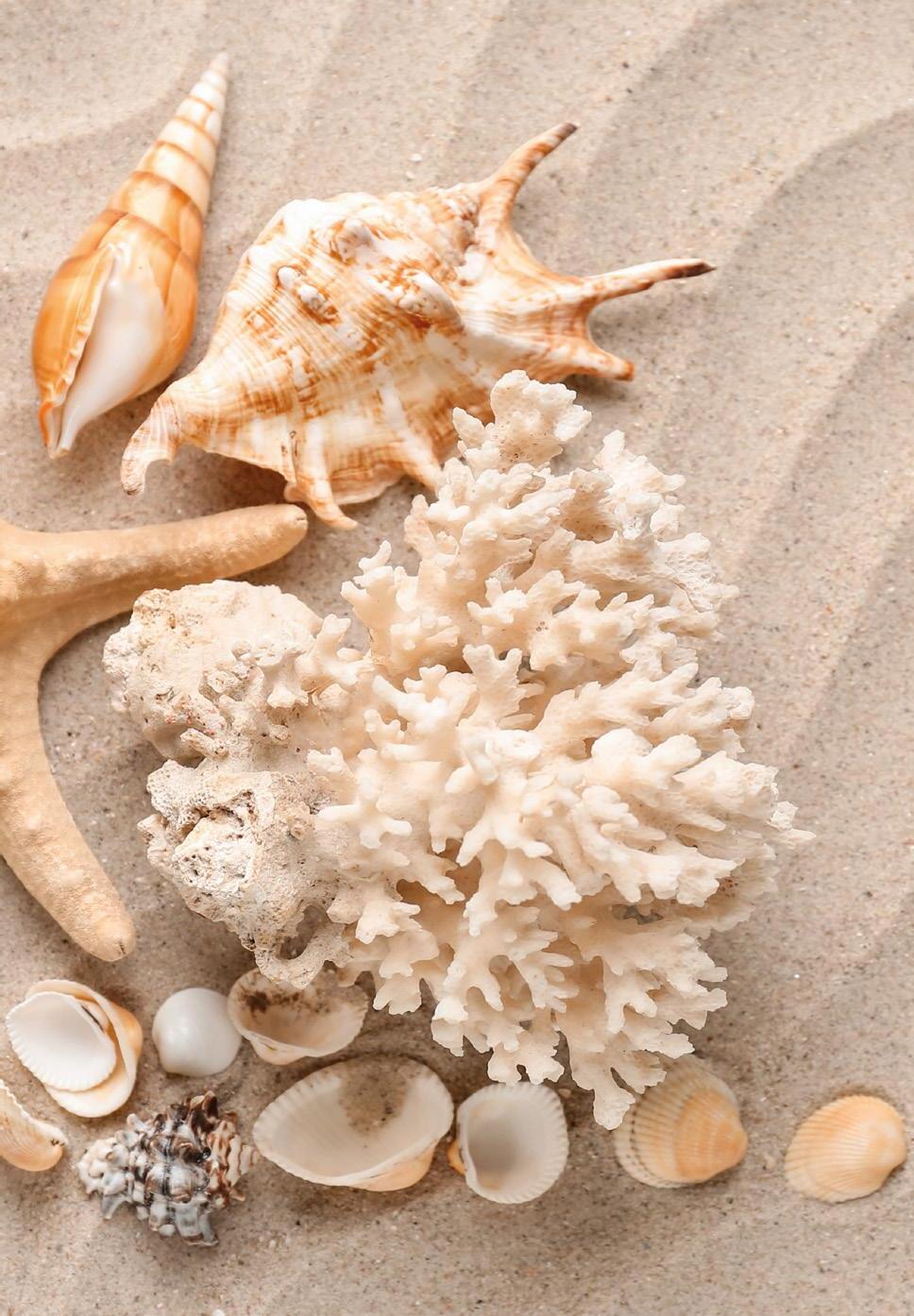


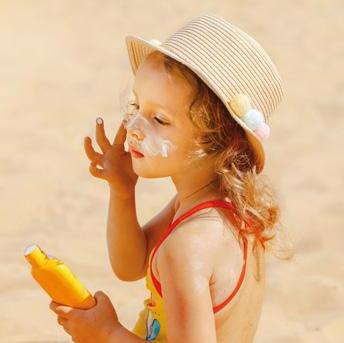
Introducing the Elastoplast Kids First Aid Programme easy-to-use, interactive teach children the essential first aid skills at home.
Encourages Builds Confidence Teaches Responsibility Develops Lifelong Skills

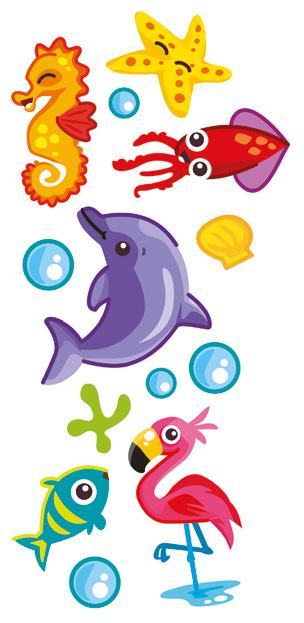


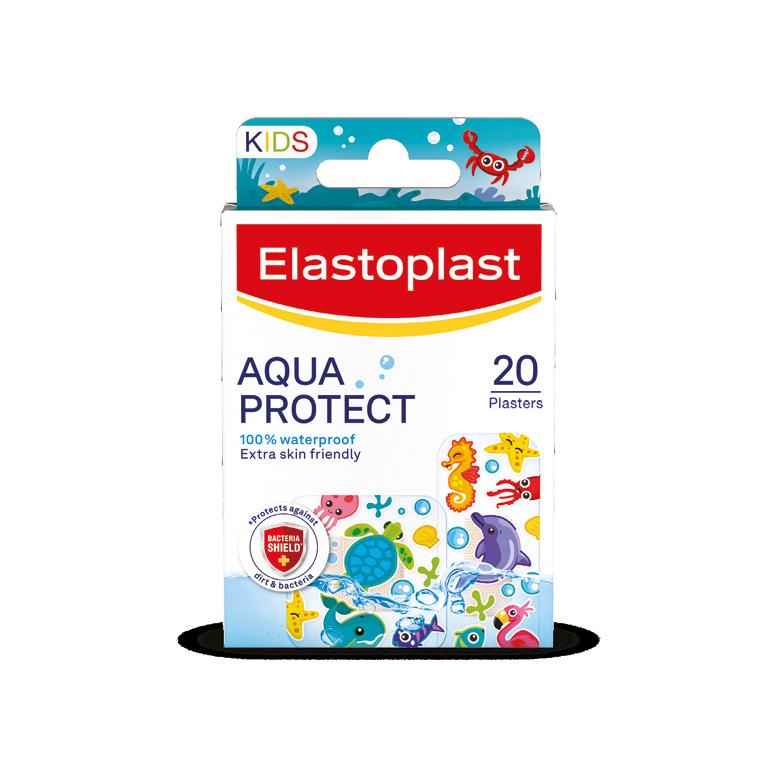






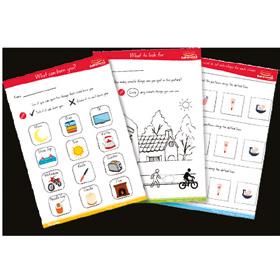
Brewis,
Babies Bucks & Beds, shares her expert tips to help you feel confident, prepared and ready to enjoy a safe and stressfree introduction to water fun with your little one – wherever your holiday takes you this summer.
Planning your baby’s first summer getaway?
Whether you’re dreaming of sandy shores, jetting off abroad or simply soaking up some sunshine at home, that first splashy summer can bring a mix of excitement and nerves – especially when water play is involved.
From hotel pools to beaches and even splash parks, these are all new environments – and for babies, they can be a bit much if they’re not used to them. The good news is there’s lots you can do before you even leave home to help your baby feel more confident in and around water.
down their skin. These simple activities help your baby get used to water movement and temperature changes – all of which they’ll experience at the beach or in a pool.
Babies aren’t always thrilled the first time you pop a sunhat on their head or try a swim nappy. So, it’s worth letting them wear these items for short periods before your trip. Try letting them wear their swimwear in the bath or garden and have a few short ‘practice’ sessions with their hat on indoors while they play. That way, you’re not adding new sensations to an already unfamiliar environment when
“The aim isn’t to ‘get them in’ or have them swim – it’s just about helping them feel comfortable with this new space”
You don’t need to wait until you’re on holiday to get your baby used to being in water. A few minutes of fun in the bath or even in a shallow washing-up bowl with warm water and their favourite toy can make a real difference. Splash water over their arms and legs, gently pour it over their shoulders and let them feel the water running


When you arrive at the pool or beach, go at your baby’s pace. Sit by the water’s edge and let them watch and listen. If they’re feeling brave, dip their toes in, then gradually their legs and hands. Hold them close and talk to them softly so they know you’re there and they’re safe. The aim isn’t to ‘get them in’ or have them swim – it’s just about helping them feel comfortable with this new space.
If your baby seems unsettled or cries when you try to introduce them to water, don’t worry – it doesn’t mean you’ve done anything wrong. Step back, have a cuddle and try again later or another day. Your calm reassurance tells them it’s okay to take things slowly. Babies are sensitive to your emotions, so staying positive and relaxed helps them do the same, even if things don’t go to plan right away.
Being in water together – whether it’s a pool, sea or bath – is a lovely opportunity for bonding. Hold your baby close,
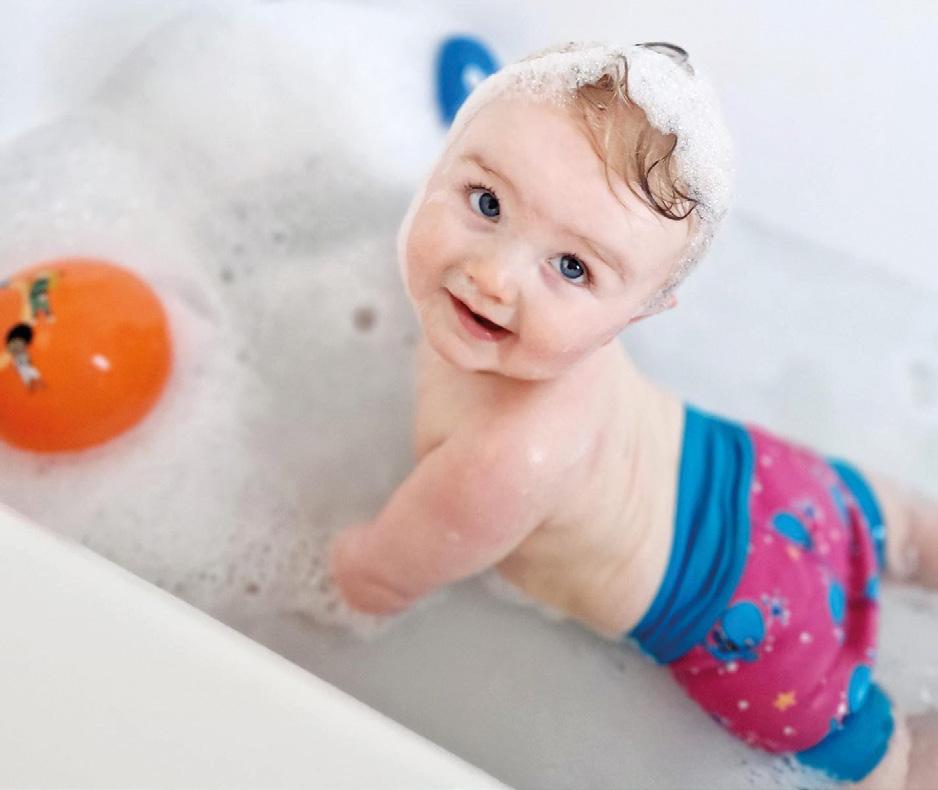
while you float or sit in shallow water. These peaceful moments help your baby associate water with safety and closeness. And for you, it’s a chance to slow down and enjoy the moment, which isn’t always easy on a busy family holiday.
“Being in water together – whether it’s a pool, sea or bath – is a lovely opportunity for bonding”
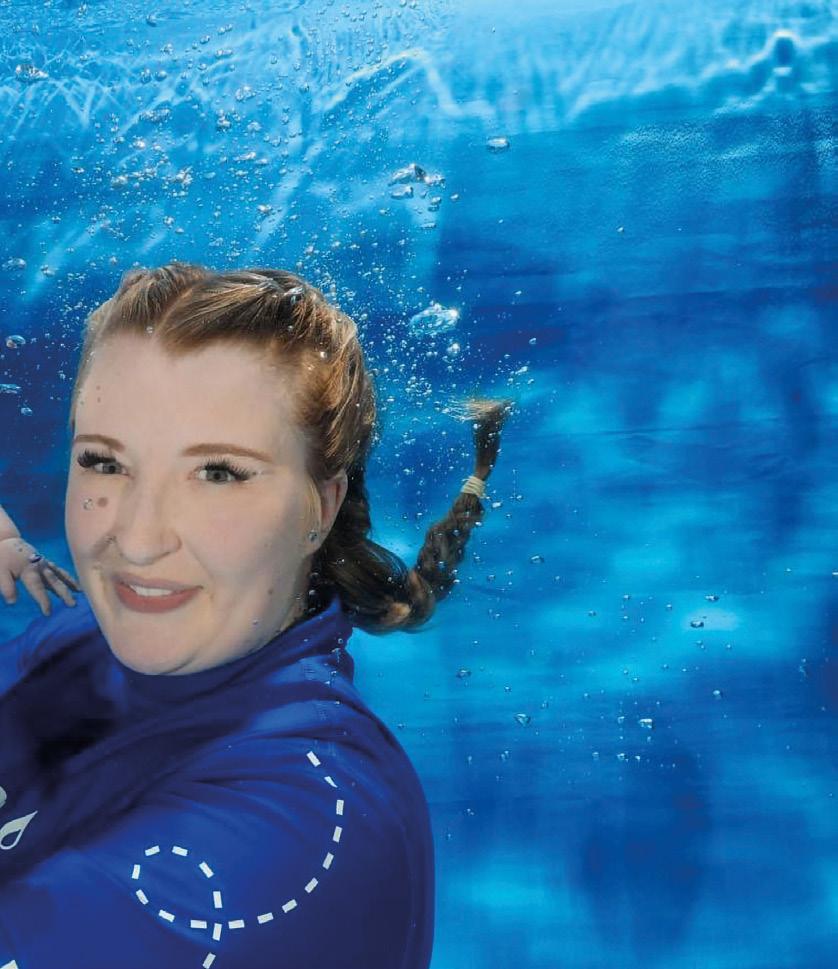

If you’ve got a holiday coming up, booking a few baby swimming sessions beforehand can help give you both a head start. At Water Babies, we focus on building confidence through trust – not pressure. Our lessons are designed to help babies feel comfortable in the water and to give parents the tools to support them safely. Even a short series of lessons can make a big difference when it comes to enjoying water time on holiday. With a little bit of preparation, your baby’s first summer around water can be full of happy memories – not just for them, but for you too. Whether it’s dipping tiny toes in the sea, sharing a splash in the pool or simply cooling off in the garden, building their confidence early means you can both relax and enjoy the moment when it counts.
For more information about Water Babies’s baby and toddler swimming classes, visit: waterbabies.co.uk

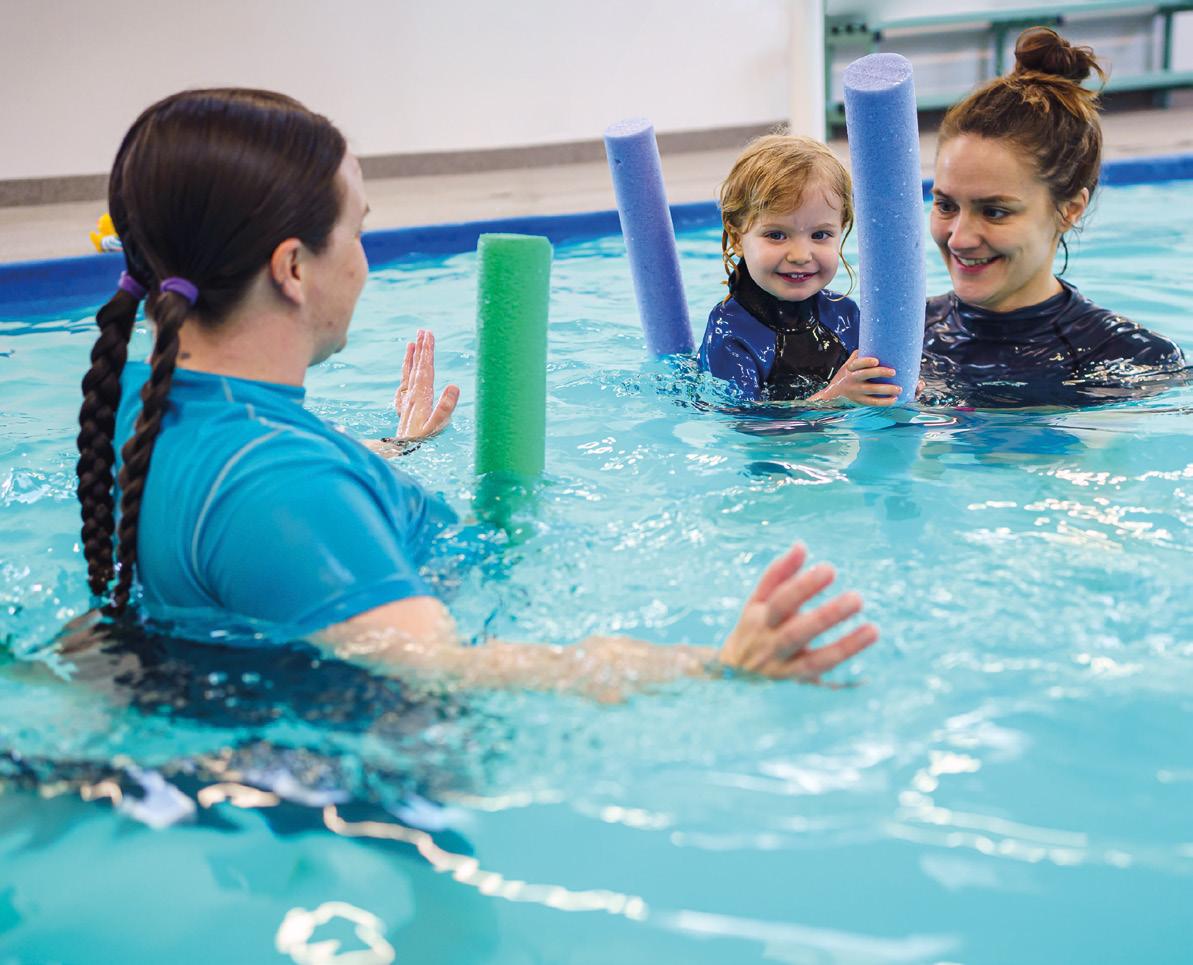
Years
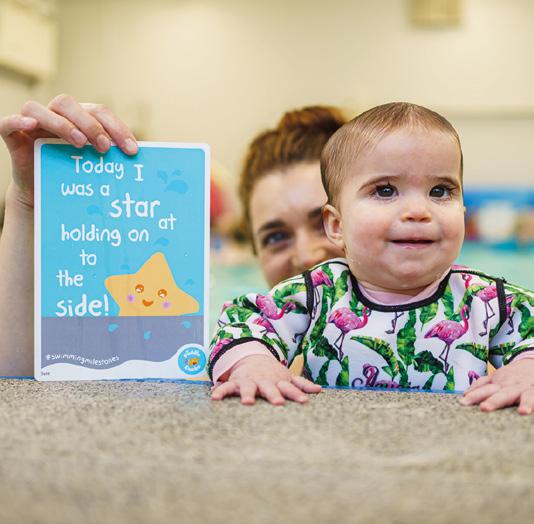

Check out our latest travel supplement for summer 2025.



As parents, the team at Family First know just how difficult & frustrating it can be to continuously keep your children busy and entertained during the school holidays and keeping them of their iPads & consoles. In this edition, you will find some of the UK’s best days out, attractions & holiday destinations for families with young children.
CHECK OUT THE

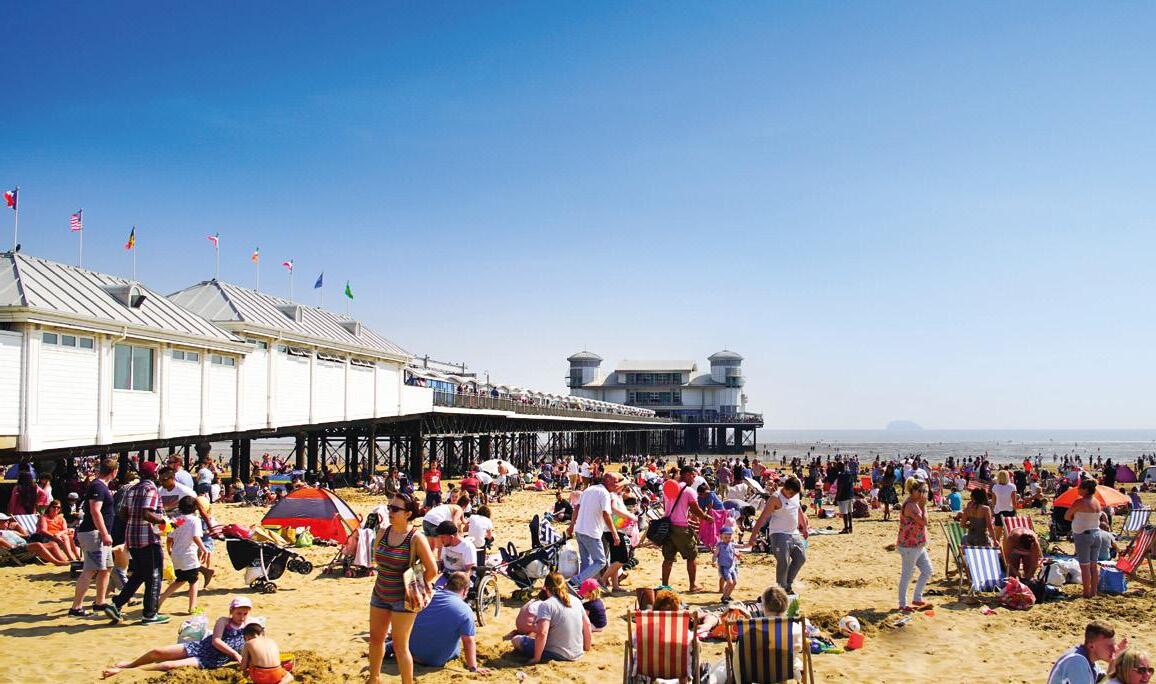

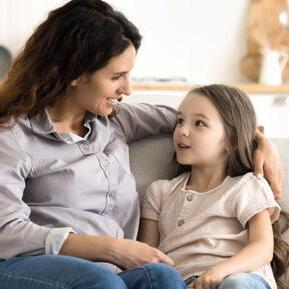
Is summer the most stressful time of year to be a parent? Two of our Netmums team share their opinions…
‘SUMMER HOLIDAYS ARE EXHAUSTING’

Stephanie Goodall is mum to Penny, 7 and Izzy, 3. She says:
“If you’d asked me this before I had kids, I probably would’ve laughed. Summer?
Stressful? It’s sunshine, day trips and ice creams, right? But as a twoworking parent family, I now know the truth: summer holidays can be exhausting.
“First off, childcare. Six weeks – sometimes more – of full-time childcare can be a logistical
in the summer holidays is wild. Don’t even get me started on the amount of snacks my kids seem to inhale when they’re home all day – I feel like I’m constantly refilling the fridge and emptying my wallet. And then there’s the guilt, which is constant. I feel bad for not being fully present with my kids or having unlimited days off to spend with them.
“I love my kids and I LOVE having more time to spend with them. But there’s no denying that summer is full-on. It’s expensive, it’s mentally draining and there’s very little downtime for us parents. So by the time September rolls around, I’m more than ready for a bit of peace and routine again.”
‘I IGNORE THE STRESS AND FOCUS ON MAKING MEMORIES’
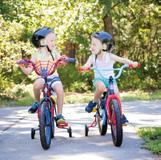
Rosi Milne is mum to Mac, 5 and Woody, 1. She says:
“When I was a kid, the school holidays
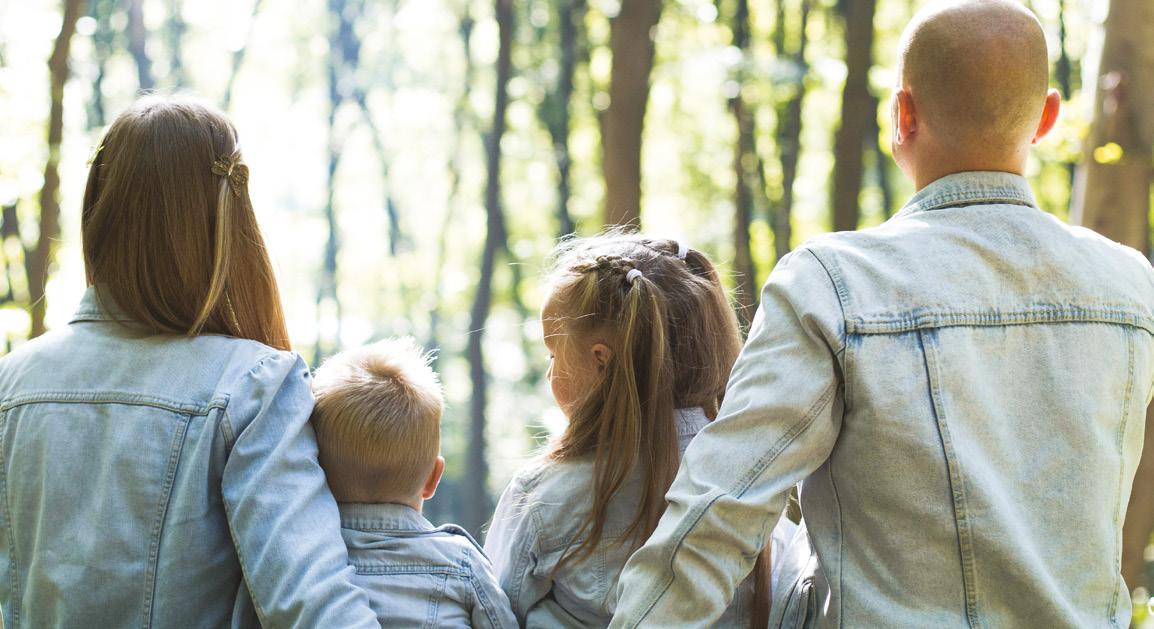


And while my mum tells me there were plenty of stressful days, none stick in my memory. To me, the summer holidays were picnics in the park, climbing trees in the field next to our house and day trips to Blackpool.
“That’s why I relish school holidays. I can’t wait to make those special memories with my boys. I’m not an organised mum, I don’t have playdates organised months in advance or holidays and day trips booked strategically. I will try and book things in, but I know that those aren’t the things that will stick in their minds. I know they’ll remember the time I took them to the playground after bedtime so we could go on the swings. Or the middleof-the-day bathtimes with colour changing bubbles and science experiments in the garden with their dad.
“That’s not to say I don’t find it stressful. I completely empathise with parents struggling to balance work commitments and the added financial pressure – I know it’s hard. But there’s plenty of magic to be had – and I can’t wait.”


families. Check your local Facebook groups and council website to find free events. Lots of family-friendly restaurants also offer ‘kids eat free’ in the school holidays (see page 50). Keep an eye on Netmums where we’ll be listing all the top summer meal deals!
Your phone can help you budget and save. Our money experts rate Snoop, a money management app that helps you track your spending and stick to your summer budget. Cashback apps like Quidco are a great way to earn as you spend. And apps including Too Good To Go let you pick up nearly-expired bags of food from shops and supermarkets at a fraction of the cost.

Smart tips from our family money experts and parenting editors to help you make the most of the holidays – for less!
Summer is bursting with free family fun – you just need to know where to look! From geocaching to library storytimes, there’s always something on for
Grab a jar, some paper and get creative. Jot down fun (and low cost) activity ideas – from baking at home to going on a nature walk. Get the kids to add their suggestions too. Then each day, pull one out of the jar. It’s like a lucky dip of fun!
Link up with your friends and take turns hosting playdates. Your little ones will love the change of scene and you get to chat to your mum mates. It’s zero cost and you might even get to enjoy a cuppa in peace…
The key to spending less – and keeping the family entertained – is getting organised. Write down what you’re doing every day so you can plan ahead. Heading to the beach? Add picnic bits to your weekly shop so you’re not tempted by pricey chips and ice cream.
Check out our Netmums Family Money hub for more moneysaving tips.
Join the conversation at Netmums, where every parent belongs. Our experts, parenting editors and supportive community have been on hand for 25 years and counting. Whether you're seeking tips, advice, or just someone who gets it, you'll find it with us. Visit netmums.com or follow @netmums on Instagram , TikTok and Facebook
It’s a big step, but you can help make it easier (for both of you!), explain the experts at Netmums.
Moving up to secondary school is one of those milestone moments that creeps up on you. One minute your child is singing in their Year 6 leavers assembly, the next they’re heading out the door (on their own no less!) with a nervous smile and huge rucksack. If the thought of secondary school feels overwhelming (for them and you) don’t panic. There are lots of practical things you can do to help make the
transition smoother. Here are some tried-andtested tips our Netmums parenting editors used to help their kids thrive…
Do a few dry runs of the school route
Whether they’ll be walking, cycling or catching the bus or train, they’ll probably be doing it solo come September. Spend the summer practising the journey together. Start by going with them, then let them take the lead and then try it with them on their own or with a friend (and you following at a discreet distance.) By the start of term they’ll feel confident about their route and you’ll feel reassured.
“If you didn’t have the best time at secondary school, it’s important to keep it separate from your child’s experience”
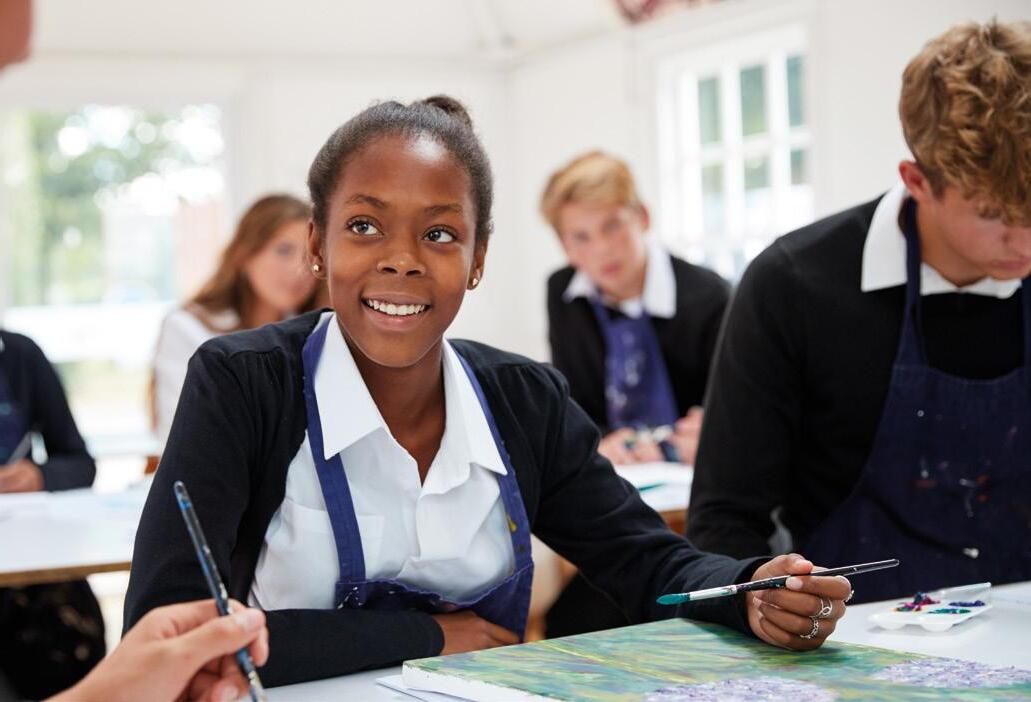
Kids hear a lot of stories about secondary school – from bullies in the playground to mountains of homework and scary teachers.

Instead of asking, “Are you nervous?”, try “Heard anything weird about your new school?”. It opens the door for honest conversation and gives you a chance to bust any myths (and reassure them that no, the Year 10s don’t flush Year 7’s kids’ heads down the toilet!).
If you are planning on giving your child a phone for secondary school, now’s the time to introduce it. By giving them the summer to get over the initial excitement, they’ll (hopefully) be less distracted by it when term starts. It also gives you time to set your phone rules and boundaries.
If you didn’t have the best time at secondary school, it’s important to keep it separate from your child’s experience. Just because you struggled in science or found friendships tricky doesn’t mean your
child will too. It’s hard, but try and make a conscious effort to not pass on your worries.
3 4 5
Secondary school means more independence – and more responsibility. Use the summer to shift some of the daily decision making and organising their way. Ask your child to pack their own bag for a day out. Or let them manage their morning routine so you can all leave the house at a set time. These little moments help build their confidence and organisational skills ready for when they have to remember school books, PE kit and homework.
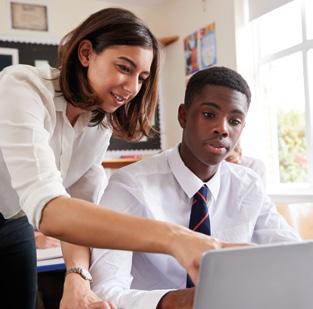
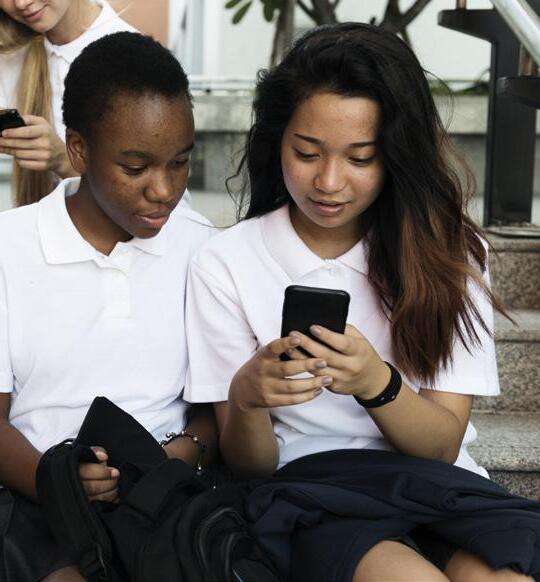
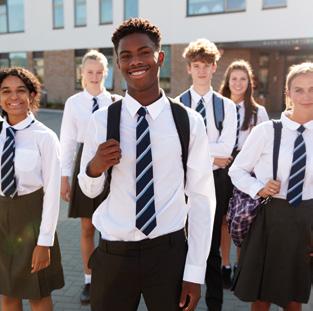
Timmy and Sophie Goodall are secondary school and primary school teachers. They share their advice for children (and parents).
oving from being the oldest in primary school to the youngest in a much larger setting can feel overwhelming. Reassure your child that it’s normal to feel nervous and that confidence will grow with time.
Encourage them to embrace new friendships by not clinging solely to their current group, but instead exploring extracurricular clubs and activities where they can meet like-minded peers.
Help them become familiar with the school layout ahead of time and make sure they can tell the time using an analogue watch. This small step helps them manage their own timetable and movements between classes.
Remind your child that good manners, respectful communication and a willingness to learn will go a long way in building positive relationships with teachers and classmates. A proactive and polite approach will help them settle in quickly and make the most of their new school experience.
Finally, discuss how to respond calmly and assertively in difficult social situations, including what to do if they witness or experience bullying. It’s also helpful to role-play common scenarios to build their confidence in handling peer pressure or unkind behaviour.



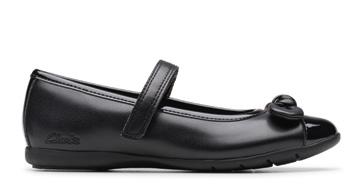


Your biggest questions on mobile phones, answered by the experts at Netmums.
It's one of the most common (and hotly debated) parenting dilemmas – when should I let my child have a phone? There’s no one size fits all answer, but there are lots of things to consider. We asked Daisy Greenwell, one of the founders of Smartphone Free Childhood, for her advice.
QWhat age should children get a phone?
Our advice is clear: delay for as long as you can. Giving kids a few extra years without a smartphone means more time to build confidence, resilience and real-world relationships – without the constant distraction of a screen in their pocket. The pressure tends to peak between 11 and 14, when group chats kick off and playground talk turns digital.
QWhat sort of phone do you recommend?
A simple brick phone – just calls and texts – can give your child independence without opening the door to social media, app stores and addictive algorithms. Since the launch of the Smartphone Free Childhood movement, sales of brick phones have doubled, as more and more parents choose safer tech for their children.
The Nokia 105 2G is a compact, durable, and affordable phone that’s perfect for younger kids.
HMD Fusion X1: A great next step for older kids. This device looks like a smartphone, but offers customisable features and strong parental controls.
The Phone +: A sleek, touchscreen device with no
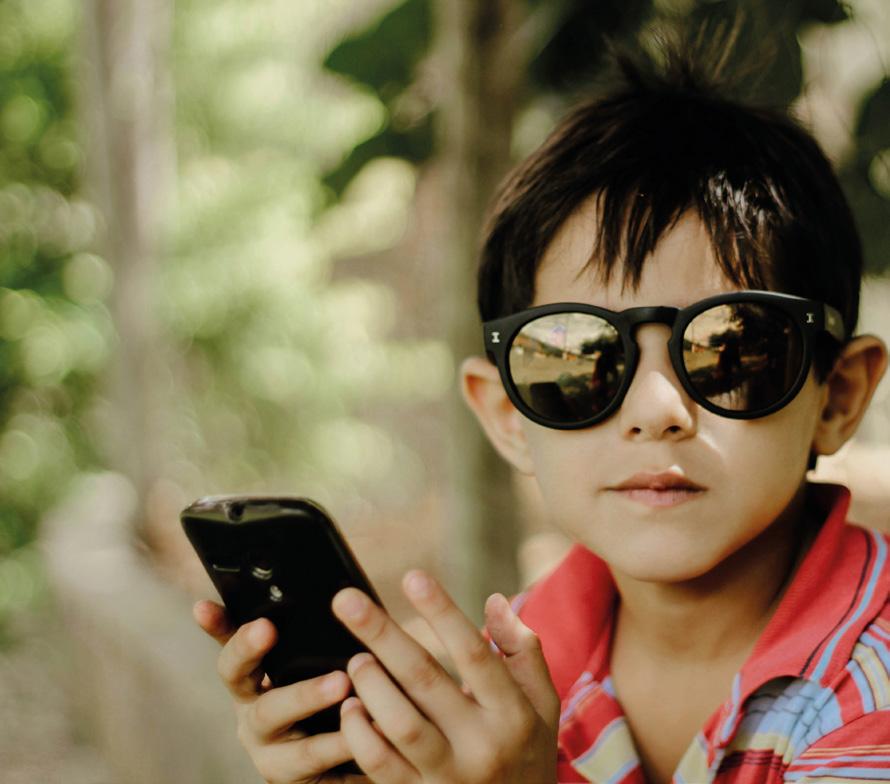



Qboundaries can parents put in place to help protect their child?

“A simple brick phone – just calls and texts – can give your child independence without opening the door to social media”
Take an active interest in what they’re doing on their phone – ask questions about the apps they use and the people they communicate with. This creates an open line of communication and builds trust. Set clear, simple rules around phone usage, like no phones overnight to protect sleep or limiting app time, especially for social media. Explain that these boundaries are about protecting their mental health, not a punishment. Make use of parental controls and encourage face-to-face activities. And lead by example: limit your own screen use during family time.
Delaying smartphones isn’t about holding your child back. By waiting until they’re old enough to manage the digital world, it gives them more time to build real social skills, focus on face-to-face interactions and develop a sense of self outside of online validation. It also helps protect their mental health, with studies linking less screen time to lower anxiety and depression rates. They’ll sleep better too. And you don’t have to do it alone. Our Parent Pact helps families connect and agree to delay smartphones together – making it easier to hold the line when peer pressure sets in.
Listen to our Netmums Podcast for more smartphone advice, and other tips from parenting experts and celebrity parents. netmums.com/podcasts/ thenetmumspodcast


'WE
Netmums Editorial Director Louise Burke says: “I wrestled with the decision of when to give my daughter a smartphone. In the end, we gave her one in Year 6, just after she completed her SATS. In all honesty, it felt two years earlier than I had in mind. However, all her friends already had one and she was left out of a lot of conversations.
“We set clear boundaries: no social media apps, limited screen time and lots of conversations about online safety. It definitely helped to make it a two-way conversation rather than just laying down the laws. She started a new school in Year 7 not knowing anyone and the phone has helped her create new friendships. So far, the boundaries and controls have worked out, but I'm sure things will change next year!”

Sophie David, mother of three, author and founder of Little Happy Learners, suggests some fun and free ways to keep kids' minds active this summer.
When the school bell rings for the last time before summer, it’s tempting for children to slip straight into holiday mode, leaving behind reading, writing and problem-solving skills. But summer doesn’t have to mean a break from learning. In fact, it's the perfect time to nurture curiosity, creativity and discovery – all while enjoying the sunshine and making lifelong memories.
And the best part? You don’t need expensive trips or fancy activity kits. With a sprinkle of imagination, everyday moments can become rich learning experiences. From garden bakes to explorer missions, here’s how to make your family’s summer both educational and fun – without spending a penny.
Combining food, fun and phonics is a perfect recipe for learning. Kitchen activities are a fantastic way to weave in maths, problem-solving and literacy skills. Start with a garden-inspired ‘bake-off’ challenge. Encourage children to gather herbs, fruits, leaves and flowers from the garden and invent their own imaginative
“Invite
children to become garden artists, using natural materials or everyday craft bits to recreate the beauty around them”
recipes. You can draw inspiration from books like The Gruffalo or Zog and the Flying Doctors by Julia Donaldson.
Encourage children to write ingredient labels, menu boards and recipe cards. This playful activity boosts early writing skills, phonics and creativity.
“With a sprinkle of imagination, everyday moments can become rich learning experiences”
Here’s a fun recipe to try: Iced Tea Leaf Cooler with “12 drops of rainwater, 4 orange segments, 2 old teabags, 5 flowers, 4 ice cubes and 5 leaves of various shapes.”
Garden makes
Invite children to become garden artists, using natural materials or everyday craft bits to recreate the beauty around them.
A simple project we love making is a dandelion model using clay, a stick and cotton buds. This activity blends art with science, encouraging discussions about the life cycle of a dandelion while building fine motor skills.
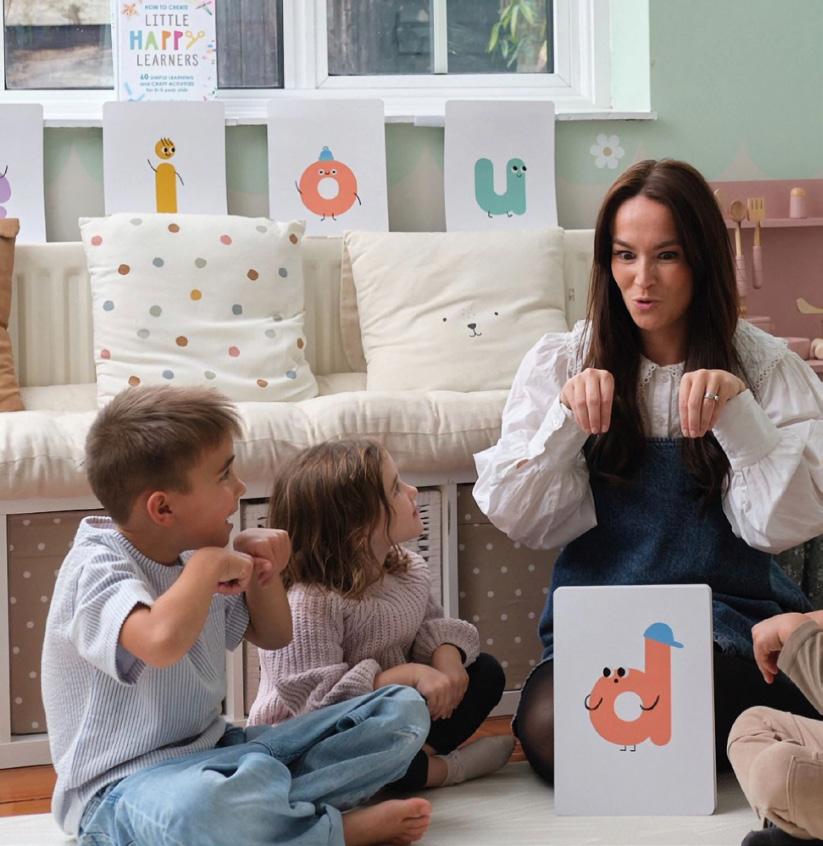


1
Roll a ball of clay into a sphere the size of a ping pong ball.
2 Insert a sturdy stick into the base for a stem.
3
Cut cotton buds in half and stick the cut ends into the clay, with the cotton tips sticking out.
4
Explorer challenges Adventure can be found right in your garden or local park. Create an ‘Explorer Kit’ using simple household items like a magnifying glass, notebook, ruler and binoculars (or homemade versions from cardboard tubes).
Bug hunts: Observe and sketch insects, sounding out their names.
Leaf identification: Collect leaves, trace them and describe them using sensory words like crunchy, smooth or prickly.

Cut cotton buds in half and stick the cut ends into the clay, with the cotton tips sticking out.


Map the garden: Create a simple map of your garden or park, hide objects and mark them on the map for a treasure hunt.
Bug homes: Investigate different insects and create miniature homes for them, researching what they need to survive.
These activities build observation skills, vocabulary and an appreciation of the natural world.
Painting leaves and using them as stamps to create butterfly prints.
Making petal collages on recycled card.
Using flower pigments to create natural “felt tip” drawings.
Summer offers endless opportunities to make reading magical and active. Here are four ways to sprinkle extra fun into reading time:
1
Sensory story starters: Fill a tray with rice, sand or shredded paper and hide slips of paper with story starters. Children can dig and discover words, then build stories together.
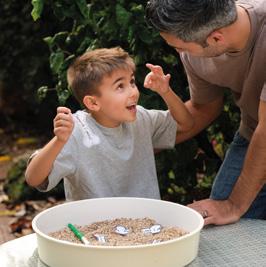
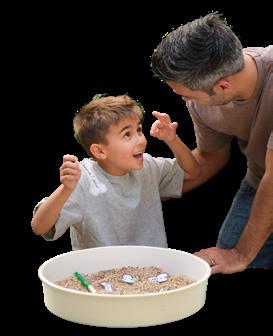
2
Sight word ping pong: Set up a playful challenge by placing sight words inside paper cups. Kids take turns bouncing a ping pong ball into the cups and reading the words they uncover.
3
Picnic blanket book days: Designate one day each week as Picnic Reading Day. Pack a blanket, snacks and a pile of your favourite books, and head to a park or beach for an alfresco reading adventure.
4
Hide and seek reading: Give hide and seek a twist! Have children find creative hiding spots around the house or garden and read their books in secret while you try to find them.
These activities turn reading into an exciting part of summer adventures and help keep literacy skills fresh. These simple, low-cost activities are more than just ways to keep kids occupied – they help nurture a lifelong love of words, curiosity and exploration. Let’s make this summer a season of adventure, creativity and lots of learning fun!


If you’re looking for more playful phonics ideas, check out the book Read, Write, Play by Sophie David. It’s packed with creative, hands-on phonics games, outdoor learning activities, and writing prompts. You can find Read, Write, Play on Amazon and at Waterstones. To follow Sophie’s journey and keep up-to-date with more inspirational learning ideas, follow her on Instagram and YouTube.

Looking for budget-friendly dining during the school holidays? Treat the family without breaking the bank. We’ve rounded up the best spots where kids can eat for free this summer – perfect for stressfree, wallet-friendly meals.
Summer is the perfect time for family fun, but with school out and appetites up, keeping everyone fed can get expensive. Whether you’re planning a day of activities or just want a break from cooking, we’ve rounded up the best family-friendly deals to take the heat off your budget this summer. These budget-friendly options will help you save money, while still enjoying tasty, kidapproved meals make dining out easy and stress-free. Get ready to eat out without breaking the bank – your summer dining guide starts here!









Angus Steakhouse - Kids (under 8) eat free with a full-paying adult dining on a main course, available every day from 12pm5pm. Not applicable on Saturdays in Bond Street and Oxford Circus branches. Find out more: angussteakhouse.co.uk/kids-eat-free
Beefeater Grill RestaurantTwo kids (under 16) get a free unlimited breakfast with every adult breakfast purchased. Find out more: beefeater.co.uk/en-gb/schoolholidays
Bella Italia - Kids (age 2-11) can enjoy a free meal, all day, every Thursday and for just £1 until 6pm, Sunday-Wednesday when an adult meal is purchased. They also offer a colouring sheet to keep the little ones entertained! Find out more: bellaitalia.co.uk/kids
Brewers Fayre - Up to two kids (under 16) can eat a free breakfast with any purchase of a £10.99 adult breakfast. Find out more: brewersfayre.co.uk/en-gb/schoolholidays
Café RougeKids eat free every day from 12-4pm with the purchase of any adult main meal. Find out more: caferouge.com/restaurant-offers
Franco Manca - Kids (under 12) receive a free kids pizza for every full-priced adult main meal (in selected pizzerias). Valid for eat-in only. Find out more: francomanca.co.uk/ wp-content/uploads/2023/07/FM-KIDS-EATFREE.pdf
Future Inns -
In the Bristol, Cardiff and Plymouth restaurants, kids (under 5) eat for free with any adult meal (including breakfast, lunch and dinner). Find out more: futureinns.co.uk/special-offers/ kids-eat-free-at-future-inns/
Gordon Ramsey RestaurantsKids (under 10) eat a free main course at selected restaurants with a purchase of every adult ordering two courses from the a la carte menu. Find out more: gordonramsayrestaurants. com/whats-on/kids-eat-free-at-gordonramsay-restaurants/
Las Iguanas - Download the ‘My Iguanas’ app and kids (under 12 years old), get a free main course, two sides and a desert with every adult ordering a meal from the a la carte menu. One app perk can be redeemed per table. Find out more: iguanas.co.uk/kids-menu/








Morrisons Cafés - Kids eat free all day with any adult meal over £5, including The Breakfasts, The Classics or The Chippy excluding extras. Find out more: my.morrisons.com/ morrisons-cafe/
OK Diners - Kids (under 10) eat free from the children’s menu when an adult purchases a main course from the a la carte menu. This offer is available all day, every day, at all diners, except those on the A1. This offer cannot be used in conjunction with any other offer, discount or promotion. Find out more: okdiners.com/kids/
Pausa Cafés at Dunelm - All day, every day, for every £4 spent by an adult in the cafe, kids can enjoy a free mini meal deal (includes a main, two snacks and a drink). Find out more: dunelm.com/info/about/pausacoffee-shops


Whitbread Inns - Up to two kids (under 16) eat free with one full-paying adult breakfast (£20.99). Find out more: whitbreadinns.co.uk/en-gb/schoolholidays

Premier Inn - Two kids (under 16) can eat breakfast for free with every adult purchase of a full breakfast or meal deal. Find out more: premierinn.com/gb/en/why/food/ breakfast.html
Preto - Kids (under 10) can eat for free all day at the weekends and every weekday from 4pm with a paying adult. Find out more: preto. co.uk/offers/children-eat-free

Purezza - Children (under 10) get a free mini pizza with every adult meal purchased – all day, every day. Find out more: purezza.co.uk/ kids-eat-free/

Table Table - Two children (under 16) can get a free breakfast every day with every adult breakfast purchased. Find out more: tabletable.co.uk/en-gb/breakfast

TGI Fridays - If you are a Stripes
Rewards Member, kids can eat free, all day, every day, when a full-priced adult main meal is purchased. Find out more: tgifridays.co.uk/ offers/kids-eat-free

The Real Greek - Kids (under 12) eat free every Sunday when an adult spends £15. Find out more: therealgreek.com/offers/


Asda Cafes - Kids (under 16), enjoy a hot meal for £1, all day, every day, all year round with no adult purchase necessary. A free piece of fruit is included with all kids’ hot meal deals as part of the deal. Find out more: asda.com/ instore/cafe
Brains Pubs - Kids can enjoy any main meal from the ‘Little Dragons’ menu for £1, when purchased with a full-priced adult main meal. Find out more: sabrainpubs.com/ offers-and-competitions/offers/kidseat-for-1
Dobbies Garden Centres - Kids (under 16) eat for £1 with every traditional adult breakfast and main course meal at lunch. Children can pick from the kids’ breakfasts, lunch menu or pick ‘n’ mix meal and includes a drink. Find out more: dobbies.com/ restaurants/offers
Hungry Horse - Up to two children can eat for £1 every Monday from 12pm with every full-paying adult meal. Find out more: hungryhorse.co.uk/deals/kids-eat-for-1
IKEA - Kids can enjoy pasta with tomato sauce, a soft drink and a piece of fruit for 95p. Find out more: ikea.com/gb/en/stores/ restaurant/#3df03080-2e86-11ed-a867d5dc921e45dd
Sizzling Pubs - Kids eat for £1 Monday to Friday from 3pm when you buy one adult main meal. Find out more: sizzlingpubs.co.uk/ offers/kids-eat-for-1pound#/
Travelodge - For every full paying adult, kids (under 15) get breakfast for £1 (does not include Breakfast To Go) . Find out more: travelodge.co.uk/about/breakfast/
Lisa
Heneghan,
Chief Digital Officer
at KPMG
International,
offers help and advice to parents in managing the responsible use of artificial intelligence (AI) in young children.

technology and its impact on them as they grow through their careers. KPMG's recent global study, in partnership with the University of Melbourne, "Trust, attitudes and use of Artificial Intelligence," provides some valuable insights. The research, led by Professor Nicole Gillespie and Dr Steve Lockey, surveyed more than 48,000 people across 47 countries, offering a crucial perspective on how we, as parents, can help our children navigate this new technological landscape responsibly.
The world is changing rapidly and at the heart of this transformation is artificial intelligence (AI). For our children’s generation, AI's impact will be profound, shaping how they learn and the decisions they make about their future career journeys.
As a parent to two young women now in their twenties, I’ve grappled with the issue of

“While the benefits are clear, our research also reveals legitimate concerns. Fewer than half (46%) of people globally express trust in AI systems”

It should come as no surprise that I’m supportive of AI and its potential to transform our world. In my role as KPMG International’s Chief Digital Officer, I’m passionate about the power of technology for good, but a significant aspect of my career has also focused on ensuring that innovation is used for good –whether that’s unlocking growth in companies or ‘levelling up’ the skills of more disadvantaged groups and ensuring guardrails are in place to protect vulnerable people – especially our younger generation.
While the benefits are clear, our research also reveals legitimate concerns. Fewer than half (46%) of people globally express trust in AI systems, and 70% believe stronger regulation is needed. This highlights the need for open conversations about AI's potential risks and ethical considerations. The survey also reveals that young people, while benefiting from AI in their studies, are also experiencing some drawbacks.
“A concerning 75% of students admit they can't complete their work without AI, suggesting a potential overreliance”
A concerning 75% of students admit they can't complete their work without AI, suggesting a potential over-reliance. Furthermore, a significant number of students (57%) report relying on AI to do something rather than learning how to do it, raising concerns about critical thinking skills development.
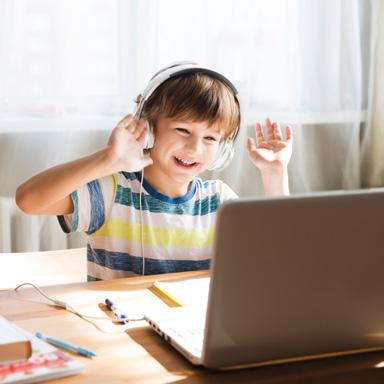
The global study reveals that 66% of people already use AI regularly, and a staggering 83% believe its use will bring widespread benefits. This isn't just a trend. It is a fundamental shift in how we live and work. For parents, our findings show that AI is already central to young people's education, with almost all (92%) students using AI in their studies, many doing so frequently.
Those who identified themselves as students told us benefits such as increased efficiency (69%) and reduced stress (53%) were big factors in their decision to lean in so heavily on gen AI tools. However, 83% of students also use AI for personal, non-study related purposes, demonstrating its massive influence. This widespread adoption underscores the importance of early conversations and responsible education around AI.



My generation benefited from the introduction of technology to transform our lives, but many of us have debated with the generation before whether or not having these digital tools to make their life easier helped or hindered their development. AI could be the next stage in that journey, forcing us to ask whether we are making learning easier in the long term for our children, or more difficult.
The research also uncovers ethically ambiguous AI usage among students. A concerning 59% admit to using AI in ways that violate their educational institution's policies, and 56% report using it inappropriately. This highlights the urgent need for parents to engage in open and honest discussions with their children about responsible AI use. The study also shows that less than a third of students report that their education provider has a policy in place to guide the responsible use of generative AI. This gap in institutional guidance places even more responsibility on parents to educate their children.
The key to navigating this new landscape is education – for both parents and children. Keeping up with new trends is a real challenge, especially as we get older, but it is absolutely crucial that we – as parents –understand AI ourselves. This doesn't mean becoming AI experts, but rather gaining a working understanding of how it works, its capabilities, and its limitations. This knowledge will empower both parents and children to engage with AI more critically and responsibly.
There are a few basic first steps we can all take. Start early and have open conversations about AI. Explain what it is, how it's used, and its potential benefits and risks. Encourage your child to ask questions and express their concerns. Encourage skills development with age-appropriate AI tools. This could involve using educational AI apps or games that teach basic programming concepts or problem-solving skills.
“The AI revolution isn’t something we’re forecasting for the future. It’s already here”
Teach your child, children or wider family group to critically evaluate information from AI sources. Emphasise the importance of verifying information from multiple sources and locations and understanding that AI is a tool, not a source of infallible truth, by exploring issues like ‘deep fakes’ and misinformation.
Discuss the ethical implications of AI in an accessible child-appropriate manner. Talk about issues like privacy, bias and misinformation. Help your child understand the importance of using AI responsibly and ethically. Finally, work with your child's
school to understand their policies on AI use and to advocate for responsible AI education.
At KPMG, we work with many schools on initiatives including Global Cyber Day, teaching young people to become more technology-savvy and many other leading organisations offer similar programmes. It can sometimes feel like you’re overstepping by going directly to your child’s place of learning, but dialogue matters and it’s important that schools and colleges understand from parents the level of impact AI is having on how young people learn.
The AI revolution isn’t something we’re forecasting for the future. It’s already here. It's our collective responsibility as parents to equip our children with the knowledge and skills they need to navigate this new world safely and responsibly. By embracing open communication, fostering critical thinking and promoting ethical awareness, we can help our children harness the power of AI for good while mitigating its potential risks.
The research provides a valuable roadmap for this journey, highlighting both the opportunities and challenges that lie ahead. Let's work together to ensure that the next generation thrives in this increasingly AIdriven world.
For more information on KPMG International, visit: kpmg.com


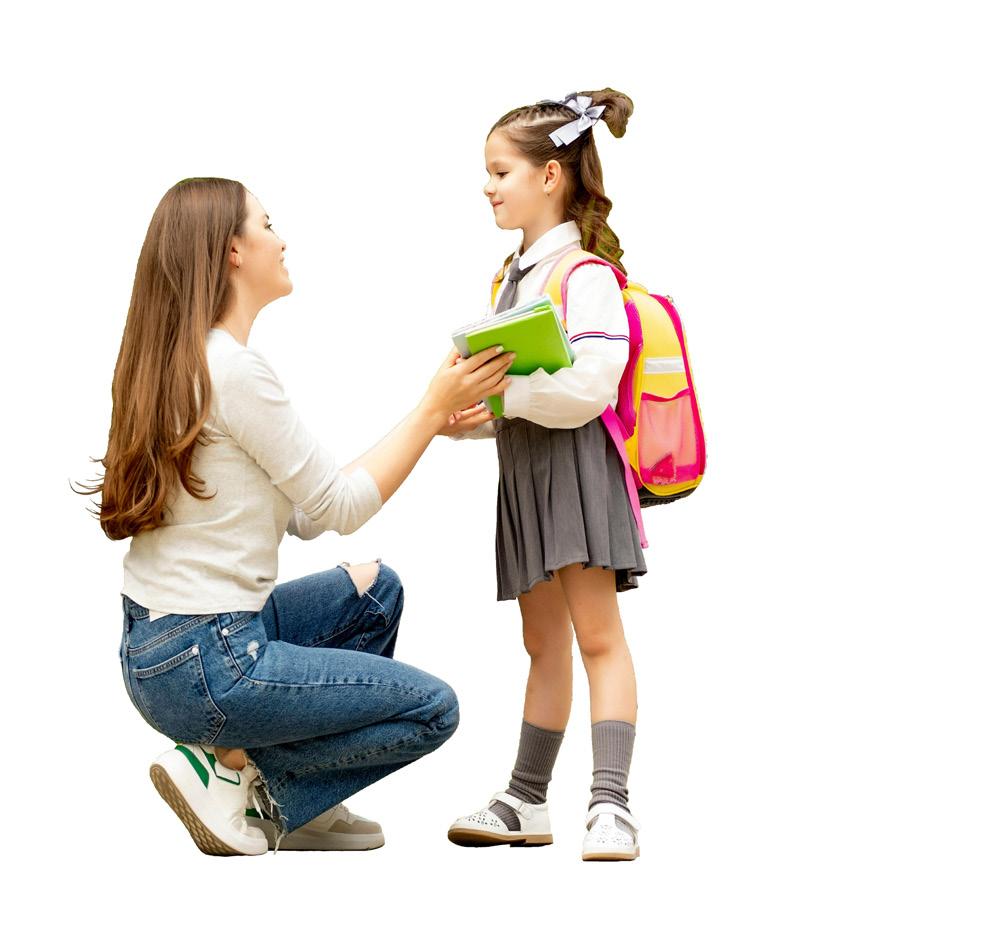
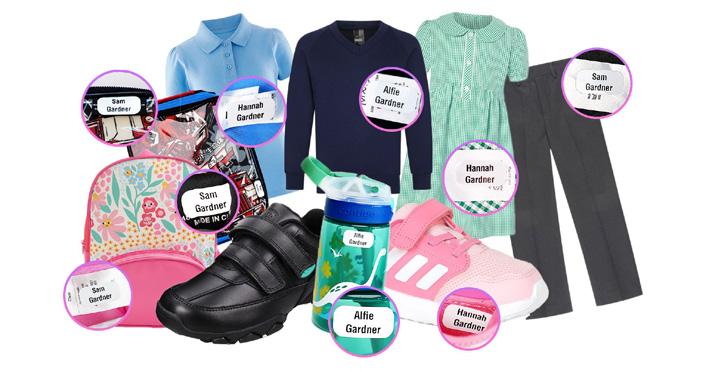
Millions supplied to parents every year since 2004.
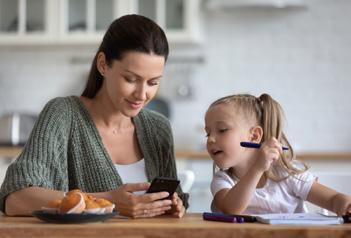
Over 12,000 five star reviews from happy parents.
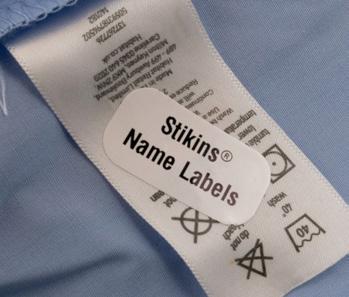
No sewing or ironing needed, simply stick on.

to learn more & to order.
Nutritionist Rhiannon Lambert explains why many ultra-processed foods (UPFs) can creep into our daily diet and looks at how families can make small changes to eat a more natural, healthy diet.
In today’s fast-paced world, convenience often dictates how we eat. With school runs, work deadlines and endless to-do lists, it’s easy to see why. Pre-packaged meals, easy snacks and grab-and-go breakfast items are all part of modern life. However, as our reliance on these foods has grown, so too has concern around what we’re actually eating, particularly when it comes to ultra-processed foods (UPFs).
“A diet rich in colourful, recognisable ingredients doesn’t just support better health outcomes, it also sets a strong foundation for children’s long-term eating habits”
Recent UK data shows that UPFs now make up around 60% of the average adult’s intake, and alarmingly, close to 70% of the average child’s diet. That’s a significant shift away from foods that would typically be prepared from scratch at home.
But what actually are ultraprocessed foods? They’re not simply foods that have been cooked, canned or frozen. In fact,

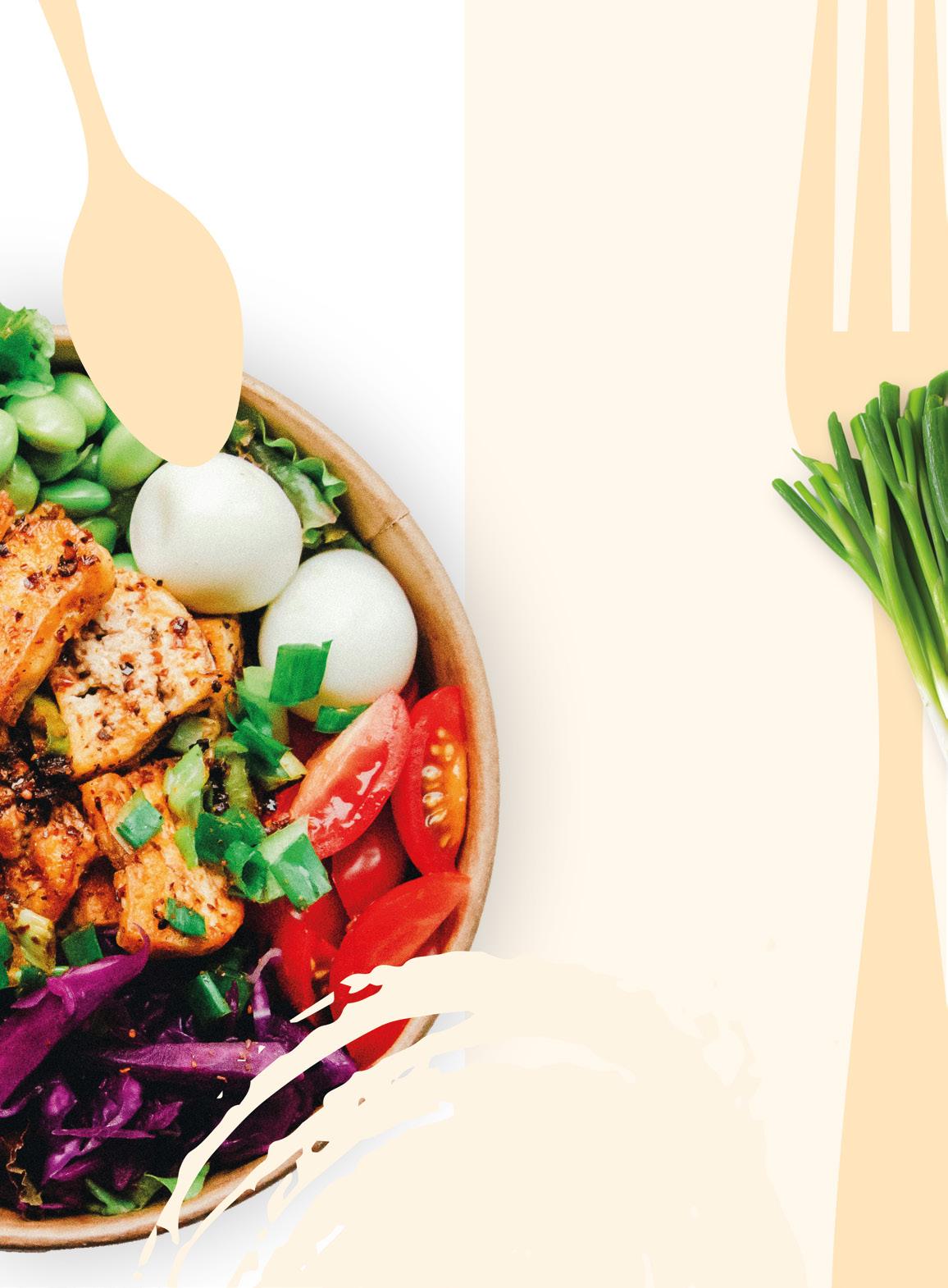
many minimally processed foods like frozen vegetables or tinned beans make up an important part of a healthy diet. Ultra-processed foods, by contrast, are products that have been significantly altered from their original form using industrial methods and ingredients you wouldn’t use in your own kitchen. These often include things like flavour enhancers, emulsifiers, stabilisers, artificial sweeteners and colourings. The aim is usually to improve shelf life, texture or taste, but the result is often a food product that’s far removed from its original form and typically lower in important nutrients. Examples of UPFs include crisps, soft drinks, baked goods, sweetened breakfast cereals, processed meats and many ready meals.
It’s important to be clear that not all processing is a bad thing. Some level of processing, such as freezing, fermenting or canning, can actually preserve nutrients or improve food safety. And even within the category of UPFs, there are some
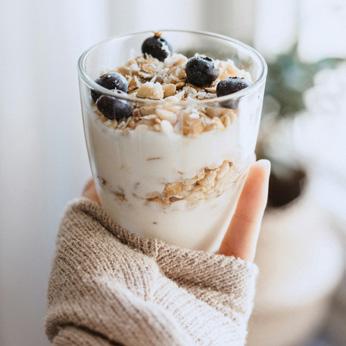
“Think about what you can add in, not what you should cut out!”
products that can play a useful role in a healthy diet. For example, fortified wholegrain cereals, dairy alternatives and bread may technically be classed as UPFs, but can offer practical solutions for certain individuals or households. So this conversation isn’t about demonising every product in your cupboard, it’s about being more aware of the balance and what we can do to strike that balance.
There are many reasons why UPFs are so common in family life. They’re typically affordable, won’t go off quickly, are quick to prepare and are heavily marketed – especially to children. Many parents turn to them out of necessity, because they offer a level of ease that home-cooked meals often can’t compete with during a busy week. And with cost-ofliving pressures and time constraints affecting most households, it’s no surprise that foods designed for speed and simplicity have become the norm.
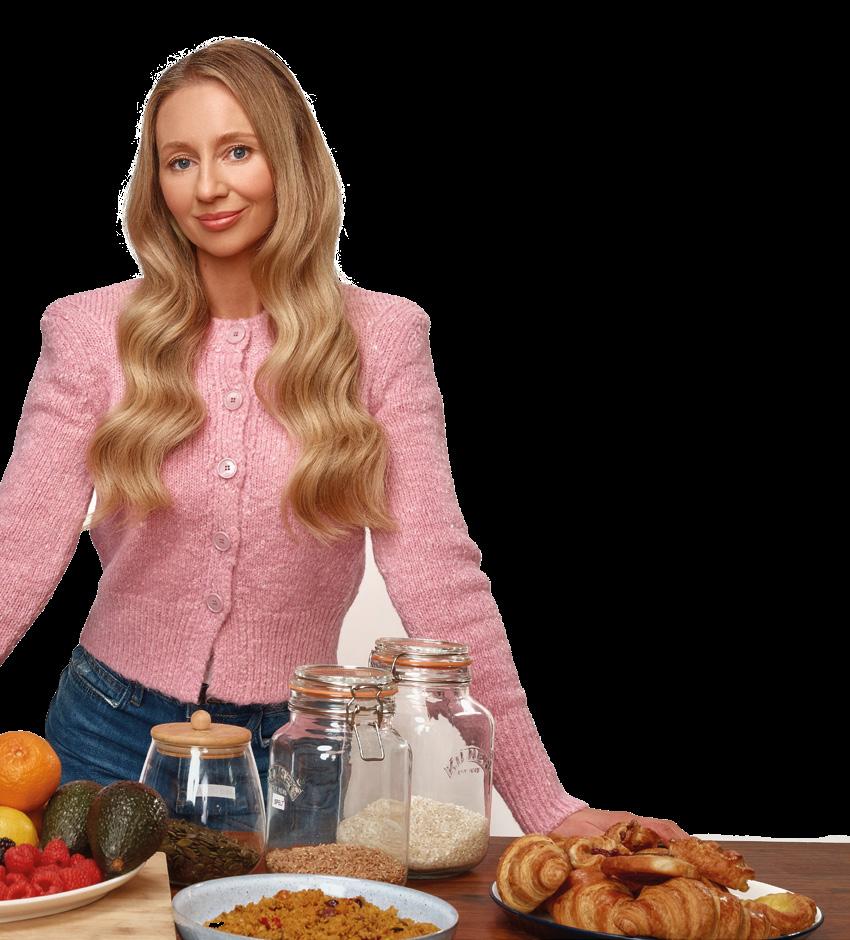


That said, research increasingly shows that diets high in UPFs could be associated with a range of poorer health outcomes, from a higher risk of obesity and cardiovascular disease to type 2 diabetes and poor gut health. These risks aren’t linked to eating a single UPF every now and then, but rather to long-term reliance on UPFs that dominate the daily diet and whole foods are gradually edged out.
It’s worth noting here that not every meal has to be perfect. Food is about nourishment, but it’s also about enjoyment, connection and practicality. Takeaways, convenience foods and sweet treats absolutely have a place in a balanced life, especially when enjoyed occasionally, without guilt or strict rules. But if UPFs are creeping into every meal or snack by default, that’s where small changes can make a big difference. The goal isn’t to eliminate all UPFs, but to tip the balance back in favour of foods that are less processed, more nutrient-dense and closer to their original form.
So, how can families begin to make that shift without adding pressure or complexity to already busy lives? The key lies in small, manageable steps. You don’t need to overhaul everything at once. Start by choosing one or two swaps; for example, replacing sweetened yoghurts with plain Greek yoghurt and topping it with fresh fruit, or switching from highly processed breakfast cereals to porridge oats and getting creative with toppings.
Batch-cooking simple meals like soups, pasta sauces and stews can make busy evenings easier, giving you healthier options without the additional additives that you’d find in shop-bought versions. Look for opportunities to add more vegetables, wholegrains and pulses to your meals, rather than fixating on what to cut out. My motto has always been “think about what you can add in, not what you should cut out.”
This is all about returning to the basics and focusing on progress rather than perfection. A diet rich in colourful, recognisable ingredients doesn’t just support better health outcomes, it also sets a strong foundation for children’s long-term eating habits. And when we focus on what we can add in, such as more fibre, more plants and more home-cooked meals, we naturally begin to reduce the foods that offer less to us. Reducing the level of UPFs in your family’s diet doesn’t have to mean rigid rules or unrealistic standards. It’s about making everyday meals just a little more real, a little more colourful and a lot more satisfying.


Rhiannon Lambert is one of the UK’s leading nutritionists and Sunday Times bestselling author. Founder of the Rhitrition Clinic, she also co-hosts the podcast, The Wellness Scoop. This June she releases The Unprocessed Plate: Simple, Flavourful UPF-free Recipes to Transform Your Life, out now (DK RED, £20). More information can be found at rhitrition.com or by following her Instagram
“It’s worth noting here that not every meal has to be perfect. Food is about nourishment, but it’s also about enjoyment”
Lunchboxes are another area where small tweaks can go a long way. A combination of chopped veg, wholegrain crackers, a boiled egg, cheese cubes or fruit can often replace processed bars or salty snacks, with more variety and providing greater nutritional value. Involving children in meal planning or prep, even in small ways, can also help develop positive habits and curiosity around food. Whether that’s letting them pick new vegetables at the shop or stir the pancake batter, it’s these small moments that help build a lasting connection with real food.

Almonds have one of the highest content of protein of all nuts
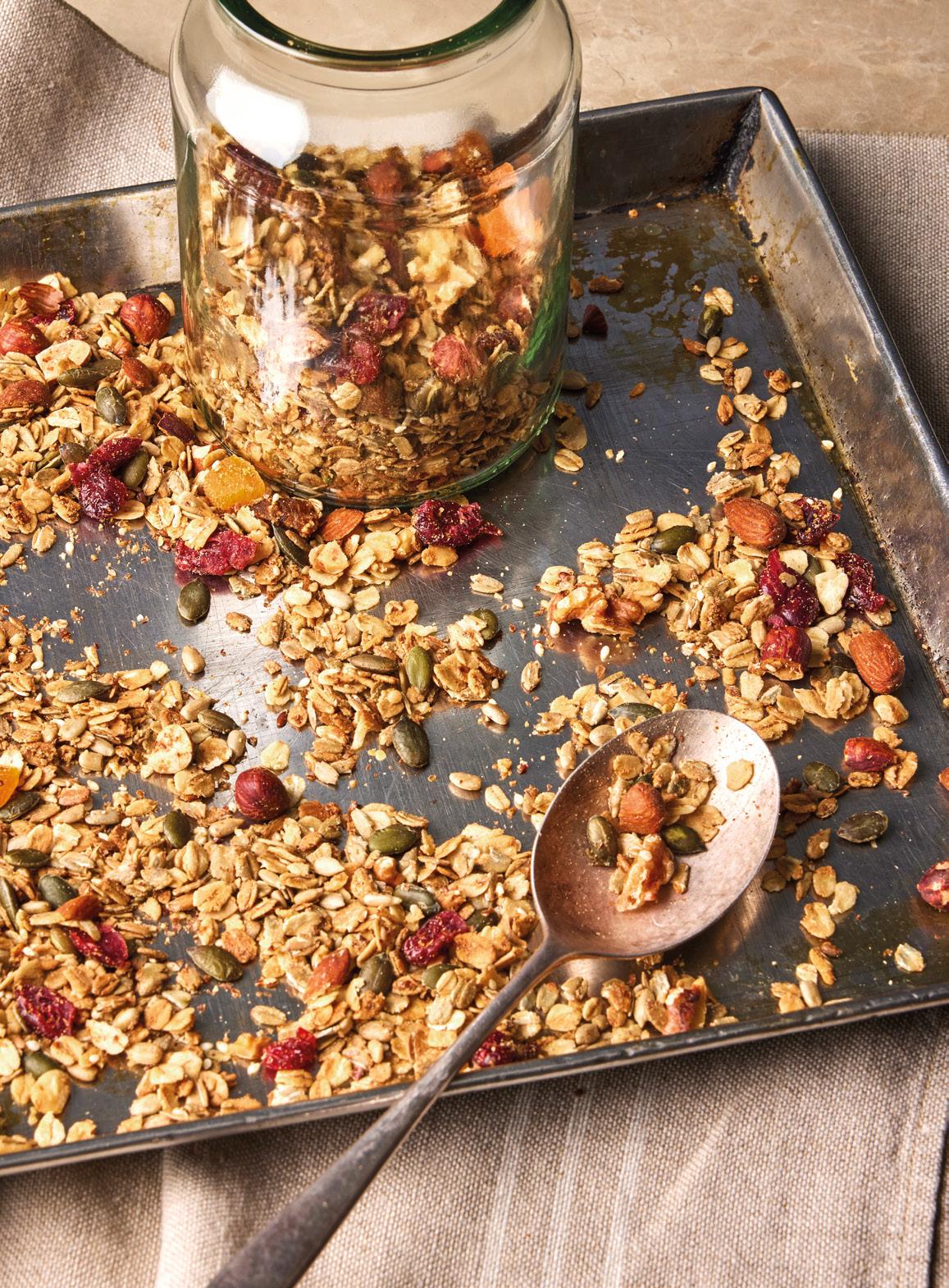
MAKES: about 800g (3 1⁄4lb)
PREP: 25 mins | COOK: 40 mins
NUTRITIONAL INFO PER 40G PORTION
FIBRE: 3.3g | PROTEIN: 5.3g
PLANT POINTS: 15.25
This is such an adaptable recipe that you can make based on what you have in your store cupboard or your personal preferences for flavour and crunch. I love it, as it provides my family and me with lovely healthy fats and fibre for the day ahead. Serve as it is with your preferred milk, or top with fresh fruit and yogurt.
- 175g (6 1⁄2oz) jumbo oats
- 175g (6 1⁄2oz) barley, spelt, or rye flakes (or simply use more jumbo oats)
- 150g (5 1⁄2oz) nuts, roughly chopped (I use a mix of almonds, hazelnuts, pecans, and walnuts)
- 150g (5 1⁄2oz) seeds (I use a mix of pumpkin, sunflower, sesame, and flaxseeds)
- 1 tbsp ground cinnamon, nutmeg, ginger, or cardamom (or a mix) (optional)
- 50g (5 tbsp/1 3⁄4oz) coconut oil
- 100g (1⁄3 cup/ 3 1⁄2oz) maple syrup
- 4 tbsp almond or peanut butter (optional)
- 75g (2 3⁄4oz) organic* dried fruit, roughly chopped (I use a mix of dried apricots, figs, dates, cranberries, and sour cherries)
- Sea salt
* Select organic dried fruit to ensure it doesn’t contain additives like sulphur dioxide.
1
2
3
Preheat the oven to 160°C/140°C fan/325°F and line your largest baking sheet with baking paper.
Mix all the dry ingredients in a large bowl.
Melt the coconut oil in a small saucepan over a low heat (or melt in the microwave for 30 seconds). Stir in the maple syrup, nut butter (if using), and a pinch of salt, then mix until fully combined. Pour over the dry ingredients and stir until everything is nicely coated.
4
Spread out in an even layer on the baking sheet and bake for 30-35 minutes until golden, stirring and tossing occasionally so that it cooks evenly.
5
6
Leave to cool on the tray, then stir in the dried fruit.
Store in an airtight container at room temperature for up to 1 week.
SERVES: 4
PREP: 2 mins | COOK: 15 mins
NUTRITIONAL INFO PER PORTION
FIBRE: 7.8g | PROTEIN: 20g PLANT POINTS: 6.5
This is the quickest pasta ever, with the sauce taking less time to make than the pasta takes to cook! It can be made with a variety of leafy greens for maximum iron and there is absolutely zero skill required. Throwing the almonds into the water might seem a little crazy, but it softens them up and adds body to the sauce. You can slip their skins off after boiling if you prefer, but it’s not essential. To make this extra creamy, try stirring in a couple of tablespoons of ricotta before serving. This is also a great recipe to use that special olive oil you’ve been saving, as you can really taste it.
INGREDIENTS
- 500g (18oz) fusilli, farfalle, or penne
- 2 garlic cloves, peeled
- 60g (2oz) whole almonds
- 250g (9oz) watercress, spinach and/or rocket (arugula) (or use cavolo nero or savoy cabbage, stems removed)
- 125g (1⁄2 cup /4 1⁄2oz) extravirgin olive oil, plus extra for drizzling
- 4 tbsp grated Parmesan (or use vegan alternative), plus extra to serve
- 3 tbsp toasted pumpkin seeds
- 3 tbsp toasted sunflower seeds
- Sea salt and freshly ground black pepper

1
Bring a big pan of salted water to the boil and cook the pasta according to the packet instructions. Scoop the pasta into a colander using a slotted spoon and return the pan to the boil.
2
Add the garlic and almonds to the water and simmer for 2-3 minutes until the garlic is just tender, then add the leaves. Push the leaves under the water so they’re just submerged, then drain into a sieve (strainer). Transfer the wilted leaves, garlic, and almonds to a blender or food processor (you can also use an electric hand-held blender), add the olive oil and Parmesan, then blitz to a bright green purée. Season to taste with salt and pepper.
3
Add the sauce back the pan and set over a low heat, then stir in the cooked pasta to ensure everything is hot.
4
Transfer the pasta to bowls, sprinkle over a little extra Parmesan, and the toasted seeds, then drizzle with a little extra oil before serving.
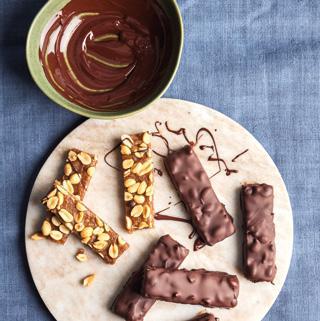
SERVES: about 15 bars
PREP: 2 mins (plus freezing)
COOK: 5 mins
NUTRITIONAL INFO PER PORTION
FIBRE: 3.3g | PROTEIN: 5g
PLANT POINTS: 5
Sticky, nutty and chocolatey, these are the ultimate pick me up.
INGREDIENTS
- 75g (3⁄4 cup/ 2 3⁄4oz) jumbo or rolled oats
- 300g (10 1⁄2oz) pitted Medjool dates
- 4 tbsp smooth peanut butter
- 1 1⁄2 tsp vanilla extract
- 1⁄4 tsp sea salt
- 80g (2 3⁄4oz) unsalted roasted peanuts
- 175g (6 1⁄4oz) dark (bittersweet) chocolate (at least 75% cocoa solids), broken into small pieces
- 2 tsp coconut oil
METHOD
1
Line a 20cm (8 inch) square cake pan with baking paper, with plenty of overhang. Place the oats in a blender or food processor and blitz to a fine flour, then tip into a bowl and set aside.
2
Place the dates in the blender or food processor (no need to clean it) with the peanut butter, vanilla, and salt. Roughly blitz, then slowly add 75ml (5 tbsp/ 2 1⁄2fl oz) water until you have a smooth, thick paste. Be sure to scrape down the sides occasionally. Remove 300g (10 1⁄2oz) of the date mix to a bowl and set aside.
3
Add the oat flour back to the blender or food processor with the remaining date mix and pulse a few times until it’s nicely combined. Tip the mixture into the base of the lined pan and use wet fingertips to spread it into a smooth layer that fills the tin.
4
Spread the remaining date mixture on top, smoothing it with a spatula. Evenly sprinkle over the nuts, pushing them in a little. Place in the freezer for at least 6 hours or ideally overnight until frozen and firm.
5
6
Lift the frozen slab out of the pan and slice into 15 bars. Line a baking sheet with baking paper.
Add the chocolate and coconut oil to a heatproof bowl set over a pan of barely simmering water and heat until just melted, stirring to combine. Alternatively, heat in a microwave on the lowest setting in 30 second blasts, stirring between each, until just melted. If you have a cooking thermometer, the chocolate is ready when it reads 45-50°C (113-122°F).
7
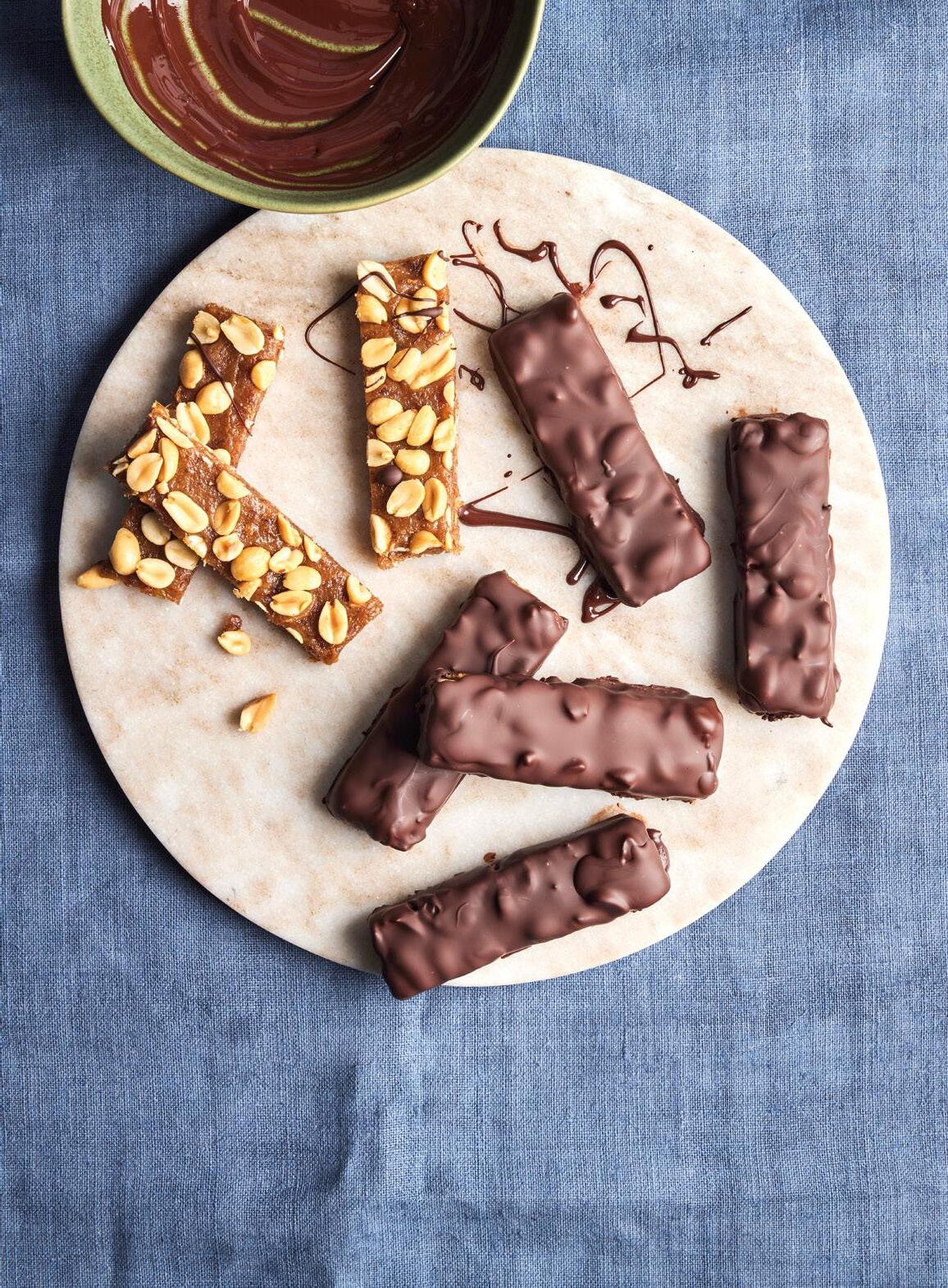
Fun factChocolate has a smell that helps you relax and reduces stress
Working one at a time, submerge the bars in the melted chocolate, using two forks to turn them. Lift out of the bowl using the forks, allowing the excess chocolate to drip back into the bowl, then transfer them to the lined sheet. Once all the bars are coated in chocolate, return the sheet to the freezer or fridge for at least 15 minutes until the chocolate is set. Store in an airtight container in the fridge for up to 2 weeks or freezer for up to 4 weeks, but I assure you they won’t last long!
Recipes supplied by Rhiannon Lambert, author of The Unprocessed Plate, a book to help you un-process your life and embrace a healthier way of eating. More information can be found at rhitrition.com .
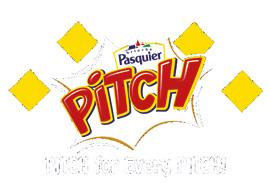
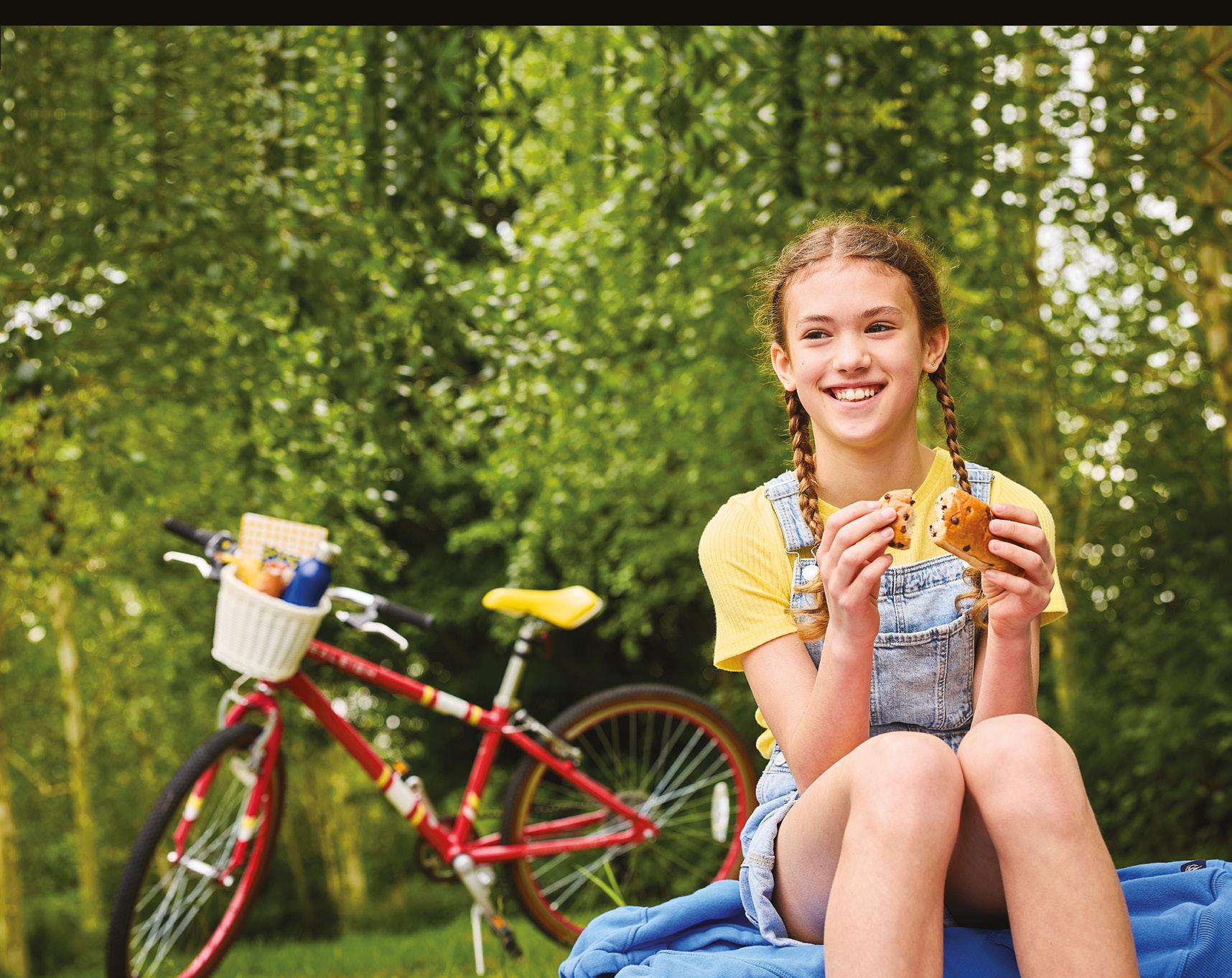
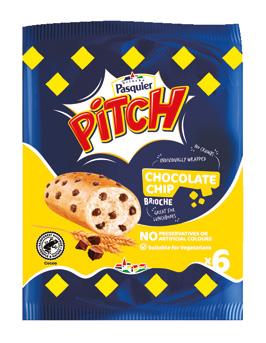




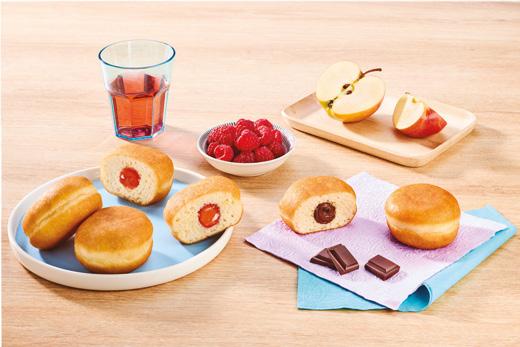

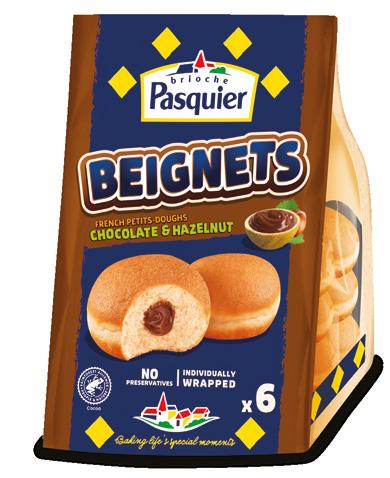
The final school bell has rung, and the promise of warm, summer adventures hangs in the air. But with all that glorious free time can sometimes come the dreaded "I've got nothing to do!" Fear not, families - This year, let's flip the script on summer boredom with a simple yet magical formula: a sprinkle of imagination, a little fizz, and a whole lot of fun. Get ready to transform those holiday weeks into a sparkling story, of creativity and flavour.
Let the imaginative adventures begin with the sleek SodaStream ART sparkling water maker! More than just a way to make bubbly water at home, the ART puts the power of creation right at your fingertips. Why not set up a "Summer Sparkle Station"? Arm your kids with paper and pens and challenge them to create menus for their sparkling drinks. The ART’s lever allows for exciting experimentation with different levels of fizz – from a gentle shimmer to a lively burst, encouraging them to discover their perfect bubble intensity.
And when it comes to flavour, summer with SodaStream offers limitless possibilities! The
“Arm your kids with paper and pens and challenge them to create menus for their sparkling drinks”
real fun for your kids lies in experimenting with different combinations – imagine the gentle sweetness of red berries swirled with lemonade, the refreshing tang of cloudy lemonade enjoyed solo (and sugar-free!), or mixed in with their sunny orange and mango fizzy concoctions. Your young creators can invent unique flavour combinations, give them fun names, and even challenge the family to a "sparkling flavour guessing game"!
Now, for those summer adventures out and about, say hello to the cool, colourful, and super easy Fizz & Go Stainless Steel bottle! Available in
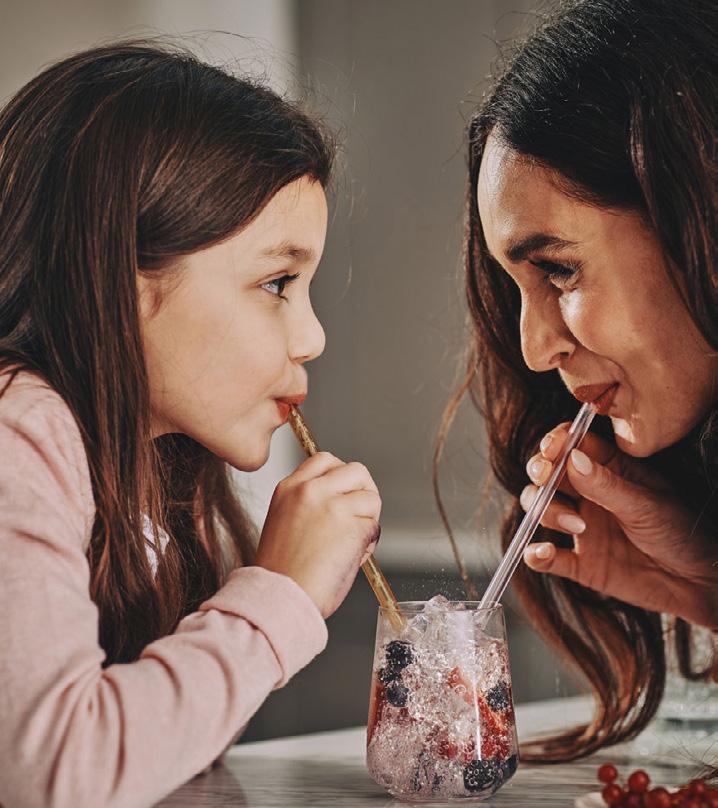

fun shades like sand, deep blue, or mint, this super convenient bottle is your new best friend for staying hydrated on the go. Forget expensive drinks that cost a small fortune when you're out with the kids. With this robust, reusable bottle, constant hydration is always at your fingertips. It's the perfect companion for balmy park trips, family picnics, and all your summer escapades. Not only is it a planet-friendly way to replace singleuse plastics, but it's also a savvy way to save money. Simply fizz your water, add your favourite flavour and head out – no more pricey impulse buys!
“Here's to a summer filled with imagination, flavour, and fantastic family moments!”
SodaStream also offers the perfect personal-sized solution for bubbles on the move: the 0.5L "On the go" bottle. This handy little bottle fits all SodaStream machines (except Duo) - lighter for the little ones to carry, and ideal for ensuring everyone has their own refreshing sparkle wherever the warmer weather takes them.
So, this summer, say goodbye to boredom with the wonderful world of SodaStream. From unleashing creativity with the ART to enjoying portable fizz on the go with the Fizz & Go and personal-sized bottles, it's the perfect recipe for keeping your kids entertained, hydrated, and happily engaged. Here's to a summer filled with imagination, flavour, and fantastic family moments! Out of bubbles? When a CO2 cylinder is used up, you can simply exchange it for a fresh one, either online at sodastream.co.uk, or alternatively, at a SodaStream retail location - the store returns the empty carbonating cylinders to SodaStream to be cleaned, inspected, and refilled with beverage-grade CO2 for the very best of drinks.

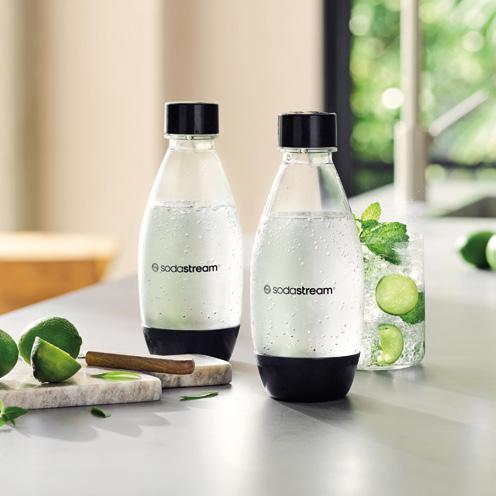
For those looking for a Summer of fun, The Art is available from £95.00 RRP from major retailers including John Lewis, Argos, Sainsbury's, Curry's, Lakeland, as well as bundles from the SodaStream website, at sodastream.co.uk (Keep your eyes peeled for special offers at select retailers)
*The Fizz & Go is compatible with all Quick Connect SodaStream machines, excluding the SodaStream Gaia™
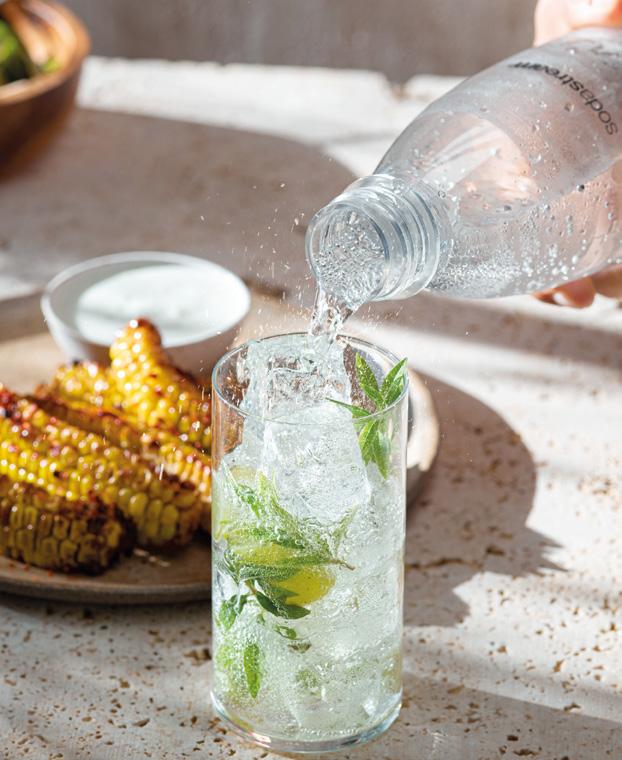
For more information or to request a sample, please contact Ruth Bennett (ruth. bennett@visiblepr.co.uk) / Laura Hinchelwood (laura.hinchelwood@ visiblepr.co.uk) / Danté Piras (dante. piras@visiblepr.co.uk)
About SodaStream: SodaStream, a subsidiary of PepsiCo, is a leading manufacturer of sparkling water makers. Present worldwide, SodaStream allows consumers to create personalised carbonated drink experiences at the touch of a button. SodaStream is revolutionising the beverage industry, transforming the way the world drinks by enabling its users to make better choices for themselves and the planet. For more information about SodaStream, visit sodastream.co.uk and follow SodaStream on Facebook, Instagram, and YouTube.
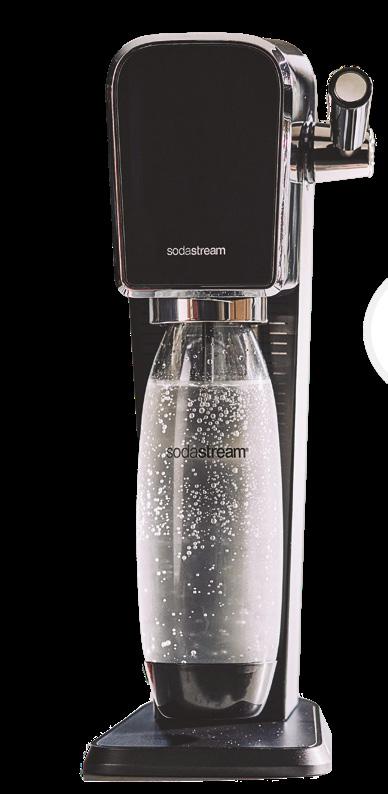

Outdoor education provider, Julia Packwood looks at ways to make the most of green spaces and nature this summer, including fun games and how to identify wildlife.
Research shows that spending just 20 minutes a day outdoors in nature can have a positive impact on our physical health and wellbeing.
[1] Daily time outdoors encourages us to be more present in the moment – a powerful mindfulness exercise. Noticing subtle changes over time, such as leaf buds forming on trees and the appearance of bumble bees when the flowers are in bloom, can have a significantly positive impact on wellbeing.
“Play is a powerful tool for children to learn to make sense of the world around them”
It doesn’t matter whether you have a garden or not, we are incredibly lucky to have free access to local green spaces. Parks are beginning to shift from the practise of keeping everything looking pristine to allowing wilder spaces to grow. This ‘re-wilding’ is helping to increase the biodiversity in nature.

“There’s no such thing as bad weather. Only clothing.” Alfred Wainwright sums up the approach we all need to embrace.[2] While British summers can be sunny and warm, there is also a high chance of cold, wet, cloudy days. Check the weather as a guide for what to wear outdoors. Layers will help keep you warm on colder days and waterproof outer layers and wellies are ideal on rainy days.
Play is a powerful tool for children to learn to make sense of the world around them and to connect with others. Spending time outdoors in nature is a fantastic opportunity to take a break from the rush of our busy daily lives, reduce our screentime and connect with our family.
In my experience as a teacher and a Forest School leader, children are fascinated by nature and following their curiosity rather than a fixed plan will help to engage them outdoors. Play classic childhood favourites such as ‘Simon Says’ and ask your child to teach you games they enjoy playing at school with their friends. Join in and have fun too!


1
Hide and Seek – One person counts to 20 while others hide. The leader then seeks them out. This is especially fun in an area with good hiding places such as trees and bushes.
2
Stuck in the Mud – One person chases others and when they reach out and tap you on your shoulder or arm you will be ‘stuck-in-the-mud’. You are freed to move again if another person crawls through your legs.
3
I Spy – This classic game is great fun to play outdoors in a local park or even on the walk to get there. For very young children you could adapt it to be colour related rather than using letters, e.g. “I spy something that is green.”

“It doesn’t matter whether you have a garden or not, we are incredibly lucky to have free access to local green spaces”
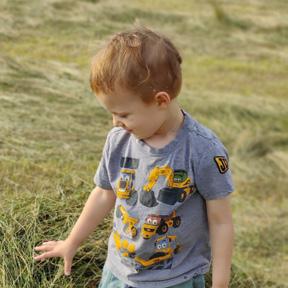
4
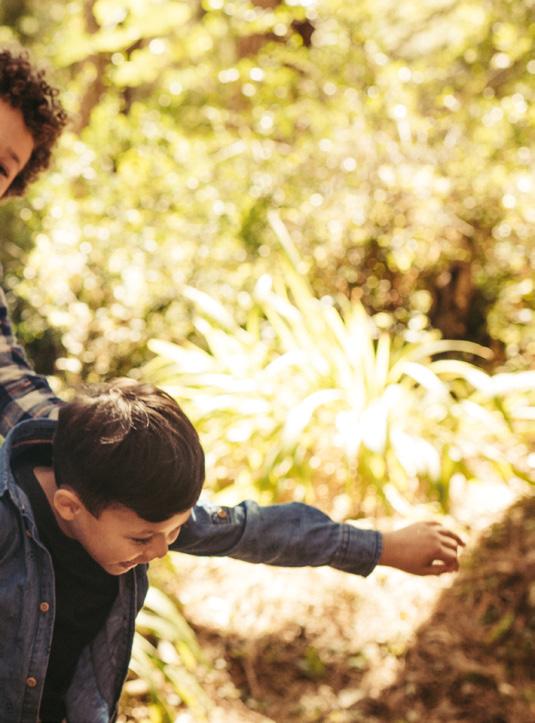
What’s the Time Mister Wolf? – One person plays the ‘wolf’ and faces away at a distance. Shout out, “What’s the Time Mister Wolf?”. Take steps forward e.g. three steps for 3 o’clock. When the wolf shouts, “DINNER-TIME”, everyone must run back to the starting point before the wolf.
5
The Floor is Lava – Make a natural obstacle course, such as jumping from log to log, balancing across a fallen tree trunk and stepping along rocks. Pretend that the floor is lava so you must not touch the ground.
Nature is all around us and it’s often surprising how much there is to see when we take the time to look out for wildlife. Go on a scavenger hunt to explore wriggling worms under piles of leaves, ground beetles under a log and different varieties of birds up in a tree canopy. A research study found that a group of children were able to identify Pokémon characters, but not common wildlife such as types of trees or woodland animals.[3] Spending time outdoors in nature with your child is an opportunity to build new vocabulary. Even very young children can recall the challenging names of dinosaurs, so don’t hold back introducing the names of common wildlife species.
“You don’t need to be an expert to develop an interest in nature”
You don’t need to be an expert to develop an interest in nature. Today there are online tools to help you identify plants, fungi and animals you may come across. It is also important to show our children that it is okay not to have all the answers or know everything. Learning continues into adulthood and by looking at a reference book from a local library together you are modelling to your child important skills.
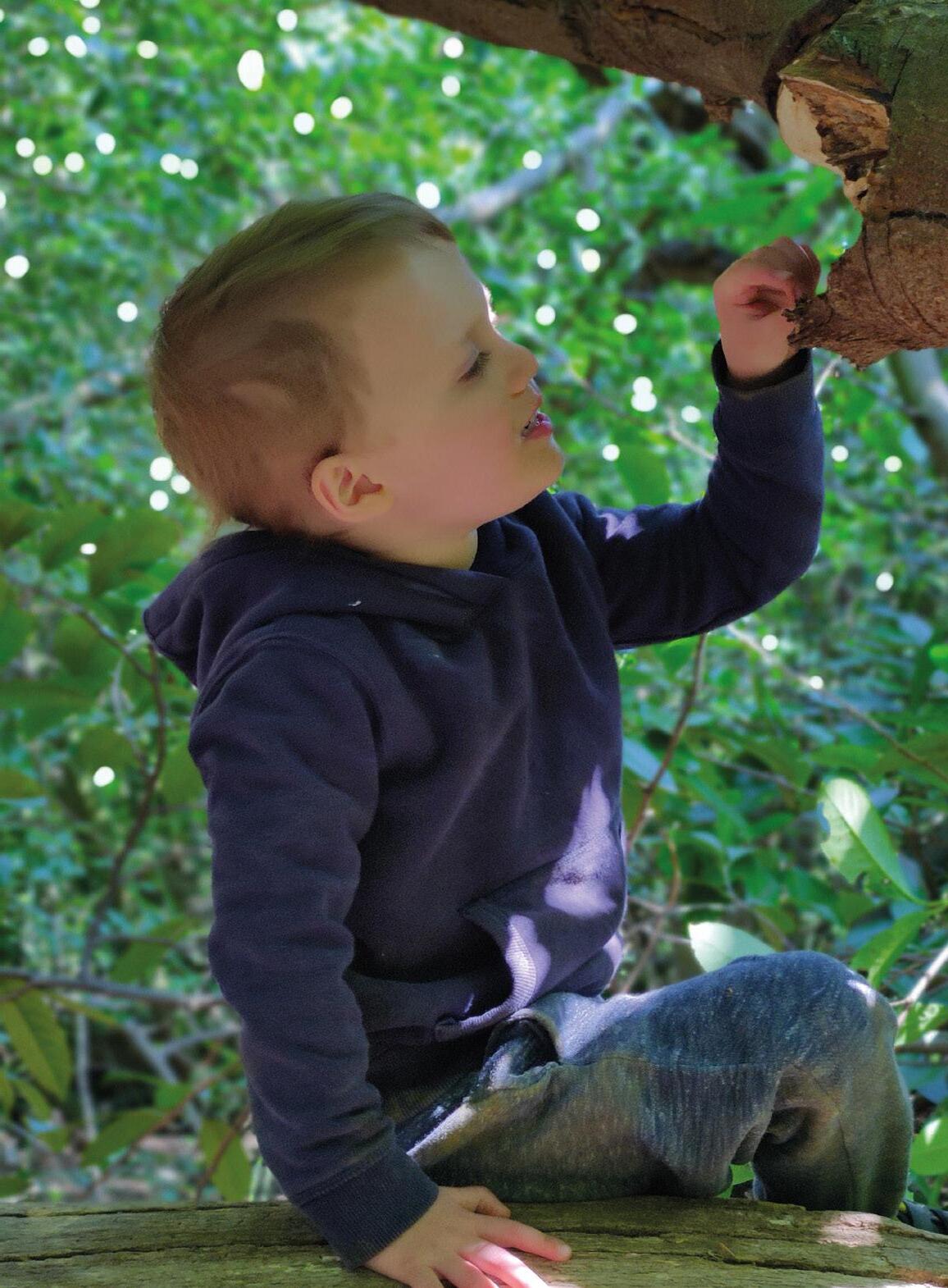
“Nature
is all around us and it’s often surprising how much there is to see when we take the time to look out for wildlife”
1
Carry out a nature survey
In recent years there has been a decline in the population of insects and birds. Minibeasts play a vital role in our eco systems. Pollinating insects support our plants to grow and minibeasts are a source of food for animals. Take part in annual events such as the ‘Big Butterfly Count’ and the RSPB ‘Big Garden Bird Watch’.
Visit a local green space with a bin bag and collect litter that you find. If you can, get a litter picker tool like a Wimbledon Womble. This is a great way to model to children the importance of putting rubbish in the bin to protect the environment.
We can also support wildlife by providing them with extra food. Garden birds may extend their nesting season if they are near a source of energy.
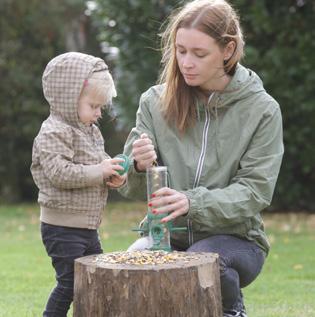
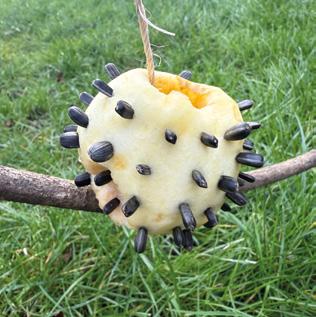
:
an apple a short stick sunflower seeds peeler and apple corer string
Peel the apple and remove the core (adult supervision or do this in advance).
Invite your child to pick up sunflower seeds and press them into the apple.
Tie the string to the middle of the stick and thread it through the apple so that the apple sits on top. Birds feel safer if they can perch whilst eating.
Invite more wildlife into the garden using a container pot, planting flowers that will attract pollinating insects.
compost flour wildflower seeds (ideally UK native) water a tray
:
Mix compost and flour (1 part flour to 10 parts compost).
2. Wainwright, A. (1973) Coast to Coast. United Kingdom: Quarto Publishing Group UK. 3. https://pubmed.ncbi.nlm.nih.gov/11924673/ 1 1 2 2 3 3 4 4
Loop the string and tie onto a branch of a tree.
4
Invite minibeasts into your garden by providing untidy areas with wooden logs, sticks, stones and fallen leaves. There are many ideas online for bigger minibeast hotel projects if you fancy a DIY challenge, with some wooden pallets often given away free by local businesses, but it can be as simple as a little unkept ‘wild’ corner.
Slowly add water until you can roll the soil into a sticky ball (ping pong ball sized).
Sprinkle the seeds in the tray and roll the balls around until they are covered.
When the ball is dry, roll them into a flower bed in the garden.
1. https://pmc.ncbi.nlm.nih.gov/articles/PMC6458297/


Julia Packwood has more than 15 years of primary school teaching experience and is a qualified Level 3 Forest School leader. She is the founder of Nurturing Wild Ltd, an early-years outdoor education provider and consultancy. Learn more at: nurturingwild.com
Tom Hibbert from The Wildlife Trusts introduces hoverflies – the fantastic flies that can imitate bees, snorkel in ponds and even fly across the continent!
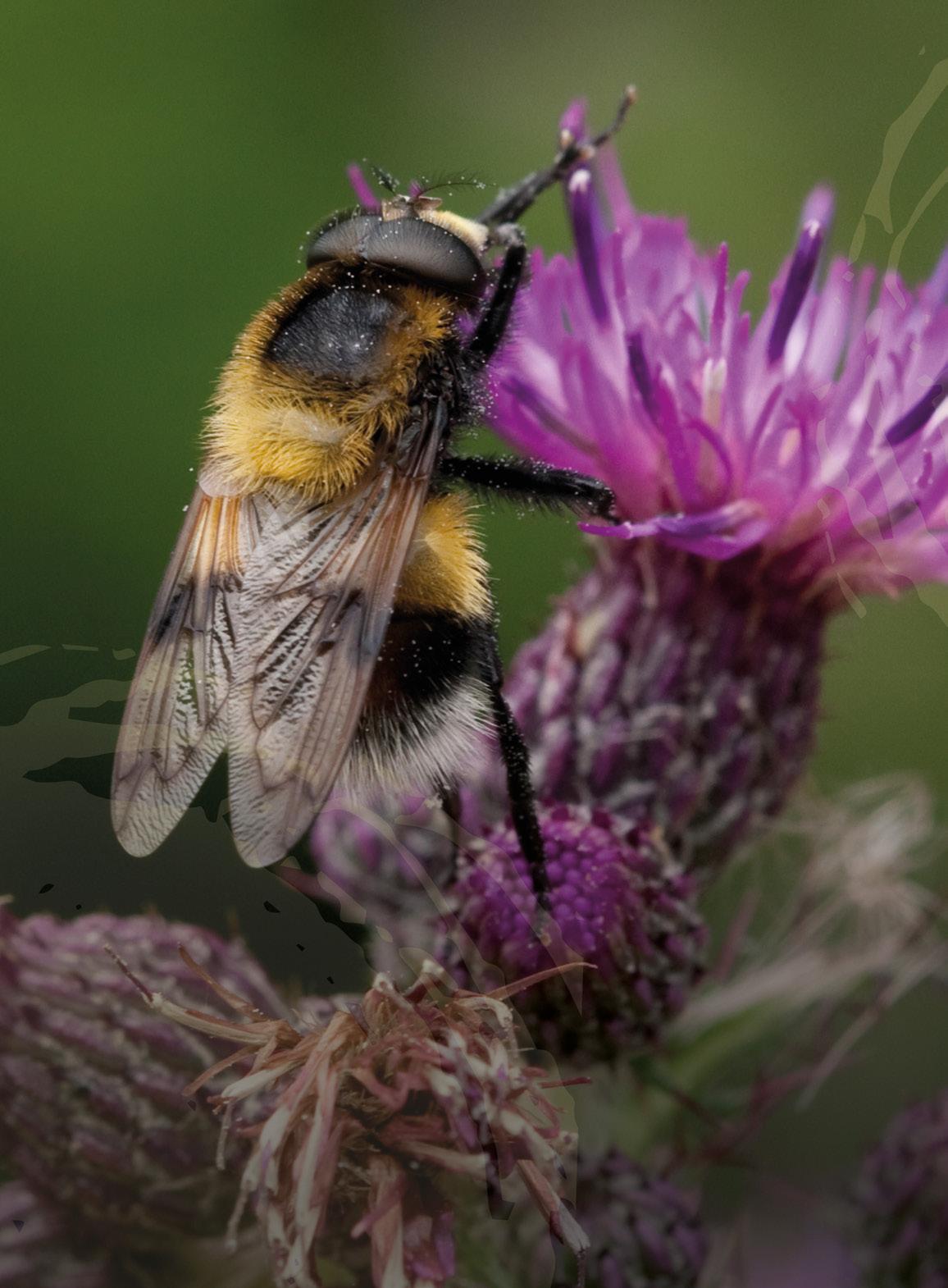

Have you ever walked through a woodland on a sunny day and spotted a fly hovering above the path, watching you curiously with its big eyes? That was a hoverfly! There are more than 280 species of them found in the UK. They love the sunlight and are often found flitting between flowers, hovering in sunny spots or basking on trees and fences.
Hoverflies are really important members of the wild community. They help with some vital jobs, including recycling, aphidmunching and pollination. We have a lot to thank them for!
Garden guardians
Gardeners often worry about aphids eating their prized plants. Luckily, hoverflies are here to help.
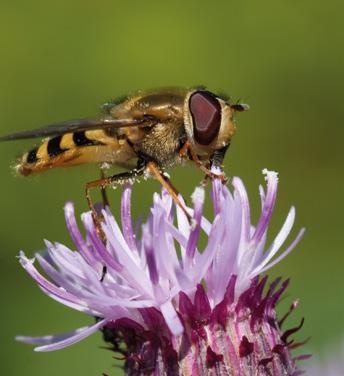

“Hoverflies are really important members of the wild community”
Many young hoverflies (known as larvae) have an appetite for aphids. They can eat hundreds of them as they grow. Hoverfly larvae look very different to the flying form they take when they’re fully grown. They have no wings, no legs and no obvious head. But despite that, they still manage to wriggle their way across plants as they prowl
“Some hoverflies have evolved to look a lot like bees and wasps”
Other hoverfly larvae are recyclers. They eat rotting material and help break down natural waste in gardens and wild places. Some of them are found in rotting wood or leaf litter, but others can be found in pools of water. These underwater recyclers often have a long tube extending
back from their bottom. It’s basically a snorkel, allowing them to get oxygen from the surface whilst munching on their sunken snacks. This feature has earned them the nickname of ‘rat-tailed maggots’. When they’re fully grown, hoverflies pupate and become adults – in the same way that caterpillars turn into butterflies. Adult hoverflies prefer to feed on pollen and nectar, so they often visit flowers. As they fly from flower to flower, they carry bits of pollen with them, transferring it between different plants. This essential service helps plants reproduce, including many crops and fruit trees. Without hoverflies and other pollinators, there would be a lot less for us and other animals to eat.

For such small insects, hoverflies can make impressively long journeys. Some species migrate across Europe to reach the UK in spring or summer. They will spend the rest of their life here, finding a partner and producing eggs. When those eggs hatch and the young hoverflies have grown up, some of those might make their own migration, flying south across Europe. They fatten up before flying to make sure they have plenty of energy for the long journey. Scientists went to the Pyrenees mountains to study insect migration in autumn. They counted insects flying through a narrow gap in the mountains, just wider than the length of a tennis court. Each year, a staggering 17 million insects flew south through the gap. Almost 90% of these insects were flies. Many of them were the hoverflies we see enjoying the sun on summer days.
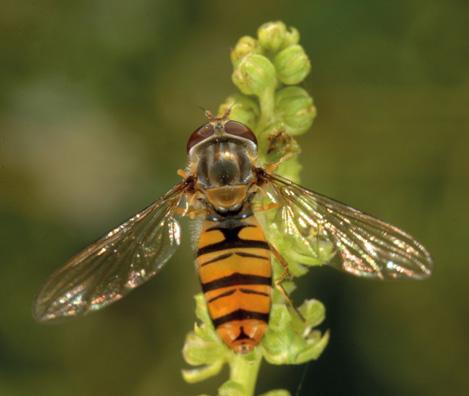
“For such small insects, hoverflies can make impressively long journeys”
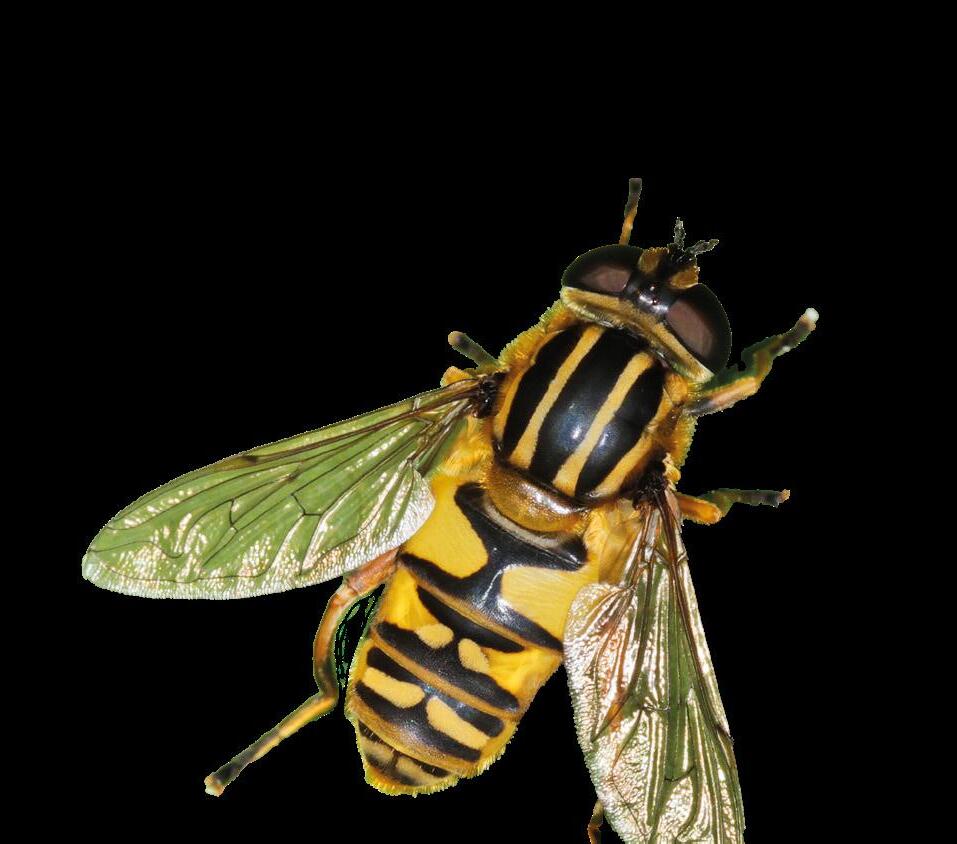

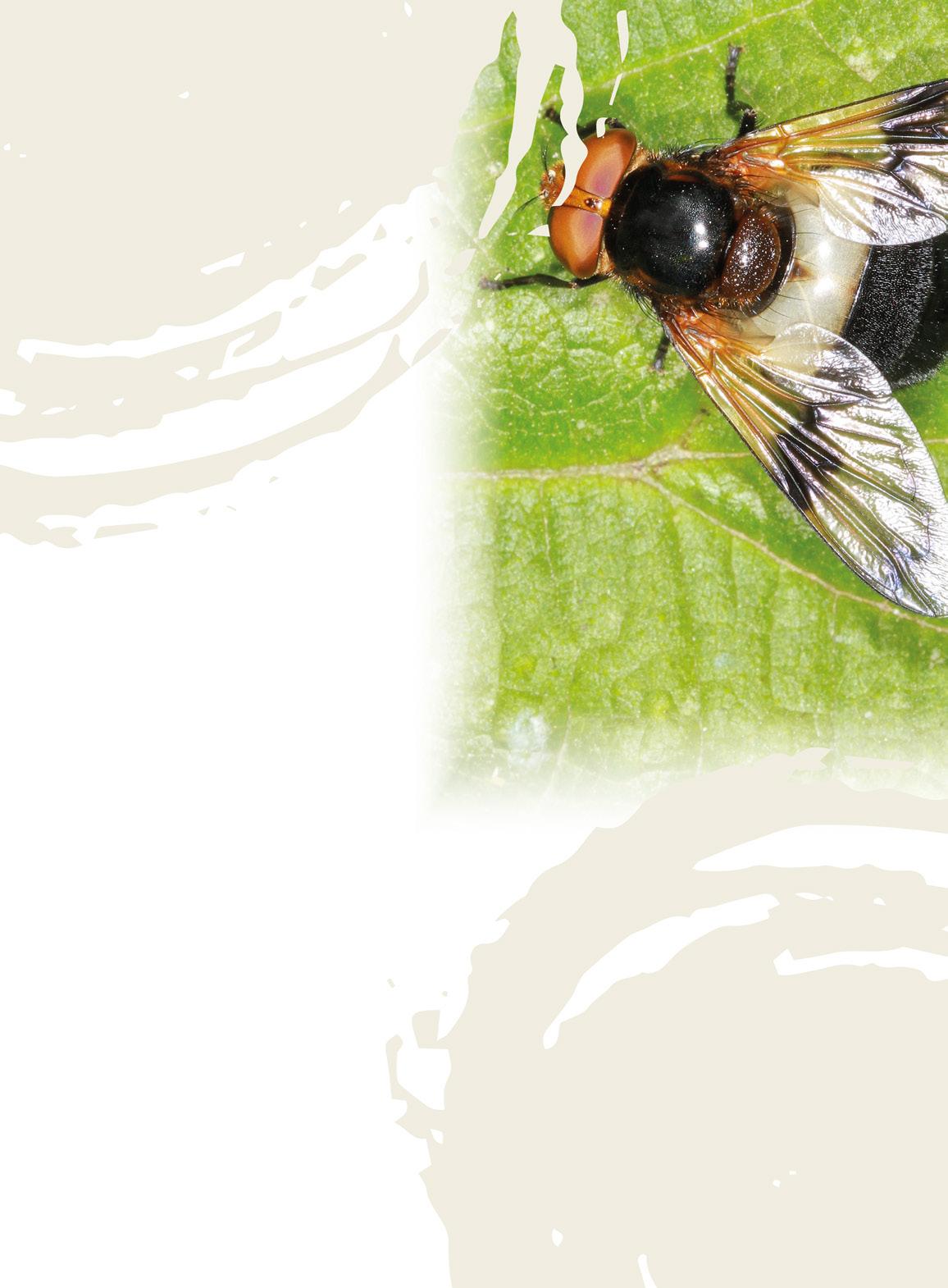

Some hoverflies have evolved to look a lot like bees and wasps. Hoverflies are harmless, so make a tasty snack for birds and other wildlife. By pretending to be a bee, they can make some predators think twice before scoffing them. Lots of hoverflies are yellow and black with stripey patterns, so look a little like wasps – but some take their impression to a whole other level!
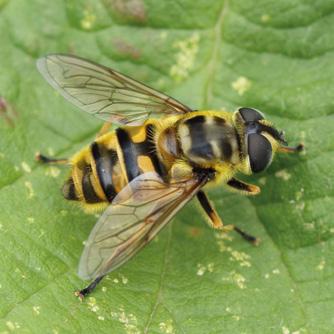
There are fuzzy hoverflies that look like bumblebees and huge hoverflies that resemble hornets. It doesn’t always fool their predators, but if they can cause a moment of hesitation, it might be enough for the hoverfly to escape. There are some tricks you can use to see through their disguise. Hoverflies have large eyes and often short antennae.
Bees and wasps have smaller eyes and longer antennae. If you get a really close look, you’ll be able to spot some important differences in the wings. For a start, hoverflies only have two of them! Their other two wings have been replaced by little drumstick-shaped structures called halteres. They have one on each side, to help improve their balance and agility.
Can you tell which insect in each of these pairs is a hoverfly?
Red-tailed bumblebee or bumblebee hoverfly?

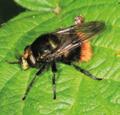
Wasp or wasp mimic hoverfly?
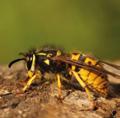
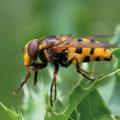
Hornet or hoverfly?
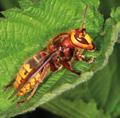
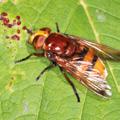
Hoverflies play a really important part in keeping the wild world running. Many plants and animals, including us, depend on them. But like other insects, hoverflies need help. They aren’t as common as they used to be. We need to protect our wild spaces and create more habitat for hoverflies. Gardens can be really important for this. A wild patch, or even a planter filled with pollinator-friendly flowers, can be a huge help for hoverflies.
You can learn much more about hoverflies, including how to help them in the free Wild About Gardens booklet. It’s packed with fun facts, spotting guides and activities for making pollinator planters and hoverfly lagoons. Download your free copy at wildaboutgardens. org.uk


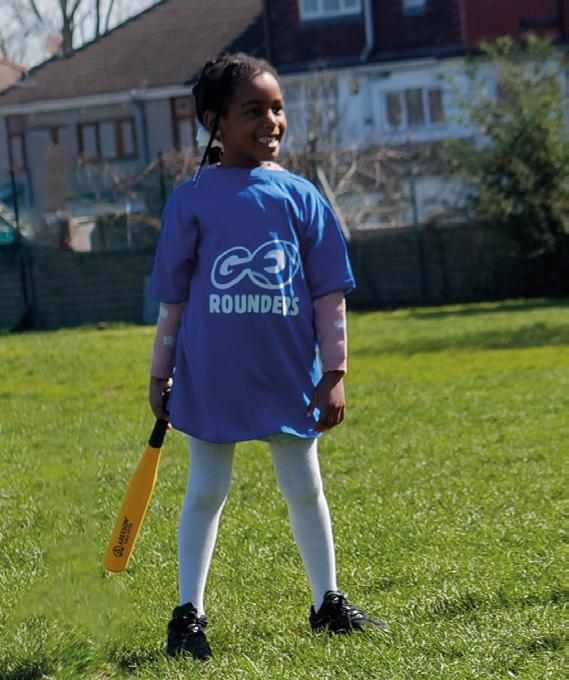
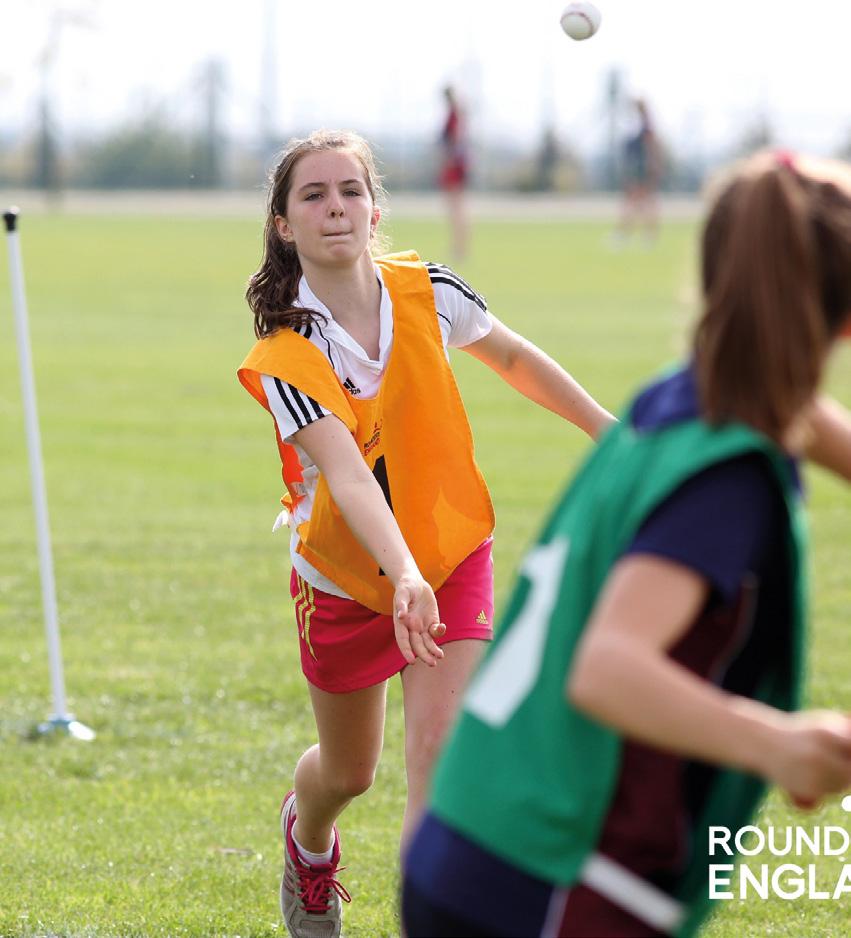
Rounders England explains why it believes that every child should have the opportunity to experience the sheer joy of playing rounders.

Rounders is a dynamic sport that promotes teamwork, enhances physical fitness and instils a love for the outdoors, while fostering confidence and essential life skills.
As summer approaches, there is no better time to introduce children to rounders. The warm weather and longer days provide the perfect backdrop for getting children outdoors, engaging with nature, staying active and developing crucial physical literacy skills that benefit them in both sports and everyday activities.
Rounders is an adventure-filled game packed with fun and excitement. It allows children to master new skills, embrace its dynamic nature and experience the thrill of scoring points. The sense of achievement when hitting a great shot or making a vital catch builds self-esteem and keeps children coming back for more.
Playing rounders is a fantastic way for children to engage in social interaction. As a team sport, it encourages communication, teamwork and camaraderie. Sharing experiences on the field helps children to build lasting friendships and creates cherished memories that stay with them for years to come.
Encouraging outdoor activity is more important than ever in today’s digital age. Rounders provides a great opportunity for children to put down their screens, enjoy the fresh air and appreciate the beauty of nature. Spending time outdoors reduces stress, improves mood and fosters overall wellbeing.
Getting started with rounders is easy. Many schools incorporate rounders into the curriculum and offer extracurricular opportunities. Children can also participate in National School Tournaments with their classmates, which is an extremely rewarding experience that builds teamwork and competitive spirit.
One of the great aspects of rounders is that minimal equipment is required to start playing. A simple wooden bat and a tennis ball are enough for a fun game. Clubs and teams provide equipment for new players to borrow and, as children become more involved, they may choose to purchase their own bat, with basic wooden options starting at just £7. Comfortable activewear and trainers are recommended to ensure children can play safely and comfortably.
“Rounders is a sport that offers a wealth of benefits, from mental well-being to physical fitness”
Beyond the physical aspects, rounders helps to boost confidence and resilience. Learning the rules and nuances of the game demands focus and concentration, helping children to develop the ability to anticipate quick changes and make split-second decisions – skills that are invaluable both in sport and everyday life.
Rounders is also an excellent way to improve overall fitness levels. The game requires quick reflexes, running between bases and strategic movement. Regular participation improves cardiovascular health, coordination and agility, encouraging a lifelong commitment to a healthy lifestyle.
Rounders is a sport that offers a wealth of benefits, from mental well-being to physical fitness. It fosters teamwork, improves coordination and enhances confidence – all while ensuring children have fun. So why not give it a go? Whether in school, at a local club or just for fun with family and friends, rounders is a sport that every child should get to experience.


Rounders England is the National Governing Body for the sport of rounders in England and it celebrates the power sport plays in society. Its mission is to grow, engage and connect communities. More information, including participation, competitions and training can be found at roundersengland.co.uk as well as following Rounders England on Instagram.

England Golf is on a mission to provide opportunities for children and young people to learn to play golf through a fun and social environment. They explain how to get started in the sport and the benefits of playing.
The national governing body for amateur golf in England is promoting the game to juniors to create a sustainable sport for the future and is working closely with the Golf Foundation to take golf into schools. In the last year, together they helped to introduce golf to 203,851 children – a 5% increase year over year.
Meanwhile, the governing body’s ‘Get into Golf Rookies’ programme introduces children and young people aged 5-18 years to the game of golf, with taster sessions available at golf courses nationwide.
The summer months offer longer, warmer days that are ideal for golf. There is no better time to introduce kids to the sport. From driving ranges to par-3 courses, pitch and putt courses to adventure golf venues, there is something for everyone.
With its winning combination of exercise and social interaction, golf is the perfect game for juniors. The unique handicap system means everybody can play together, either socially or competitively.
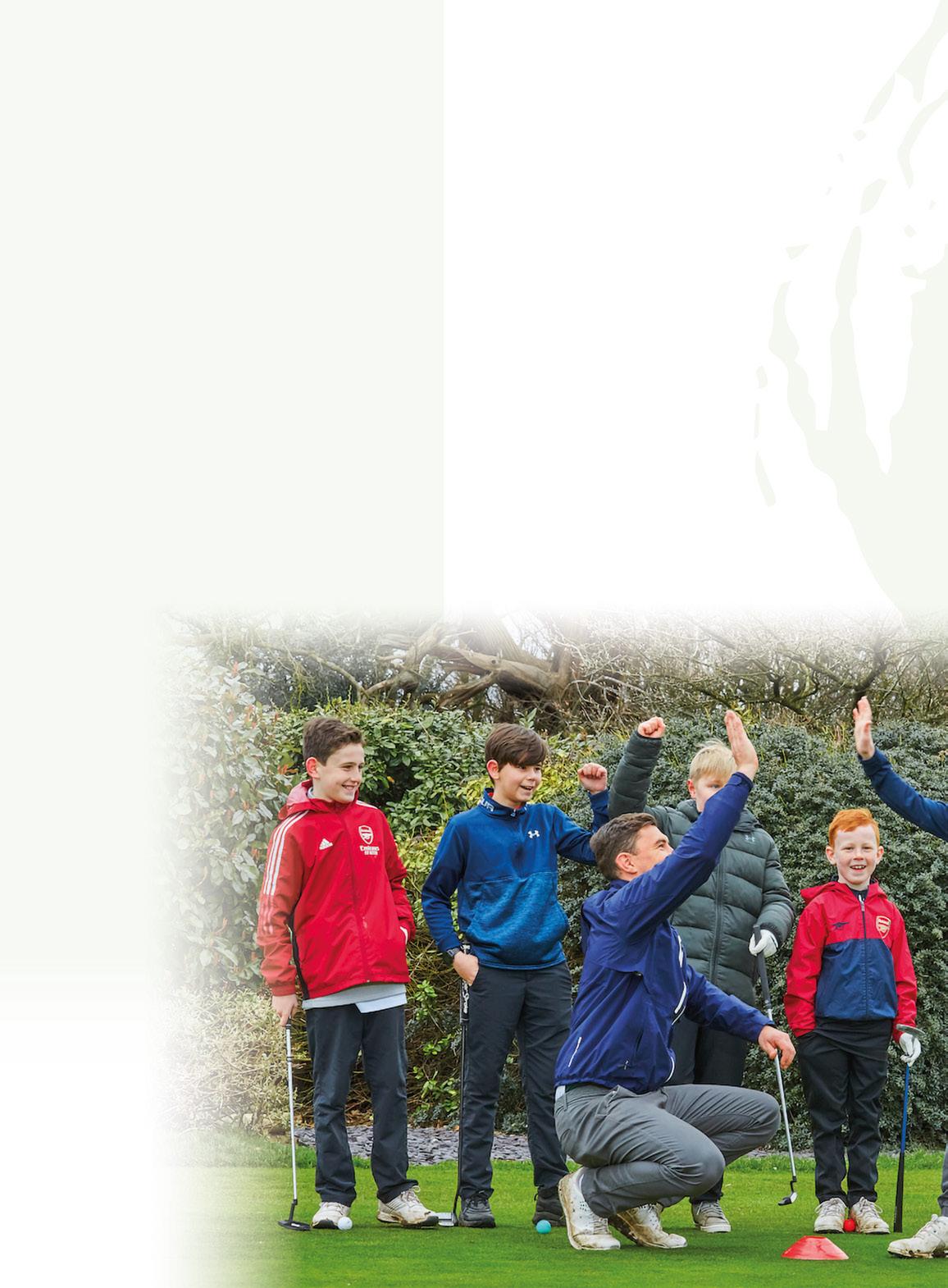
“With its winning combination of exercise and social interaction, golf is the perfect game for juniors”
You can walk between four and five miles per round, easily meeting the NHS recommended 20 minutes of physical activity a day for children and young people aged 5-18. Golf is an ideal sport for promoting movement and enhancing mental wellbeing by getting out in the fresh air.
Golf is a social sport and can help build strong connections. With plenty of time for conversation and fun, golf is the perfect way to make new friends or grow closer bonds with people you already know.
Clothing – Wear comfortable clothing. Thin layers are ideal, so you can add or remove layers depending on the weather.
Footwear – Flat-soled shoes like trainers are ideal for children taking up golf, and consider buying a pair of golf shoes. Good shoes will breathe, repel water and give you comfort on the course.
Waterproofs – Golf is played in all weathers so waterproofs are also very useful to wear in the wind and cold. They can be used for other activities and not just golf – so a worthy investment!
As a beginner golfer, it is useful to understand the pathway and options available, from having an initial taster session through to becoming a club member. Here is a proposed pathway of steps that a golf club may provide to support new golfers.
1.
Beginner sessions/ courses. Learn the basics of the game.
2. Getting out on the course. Join other beginners on the course to start playing with others of the same level.
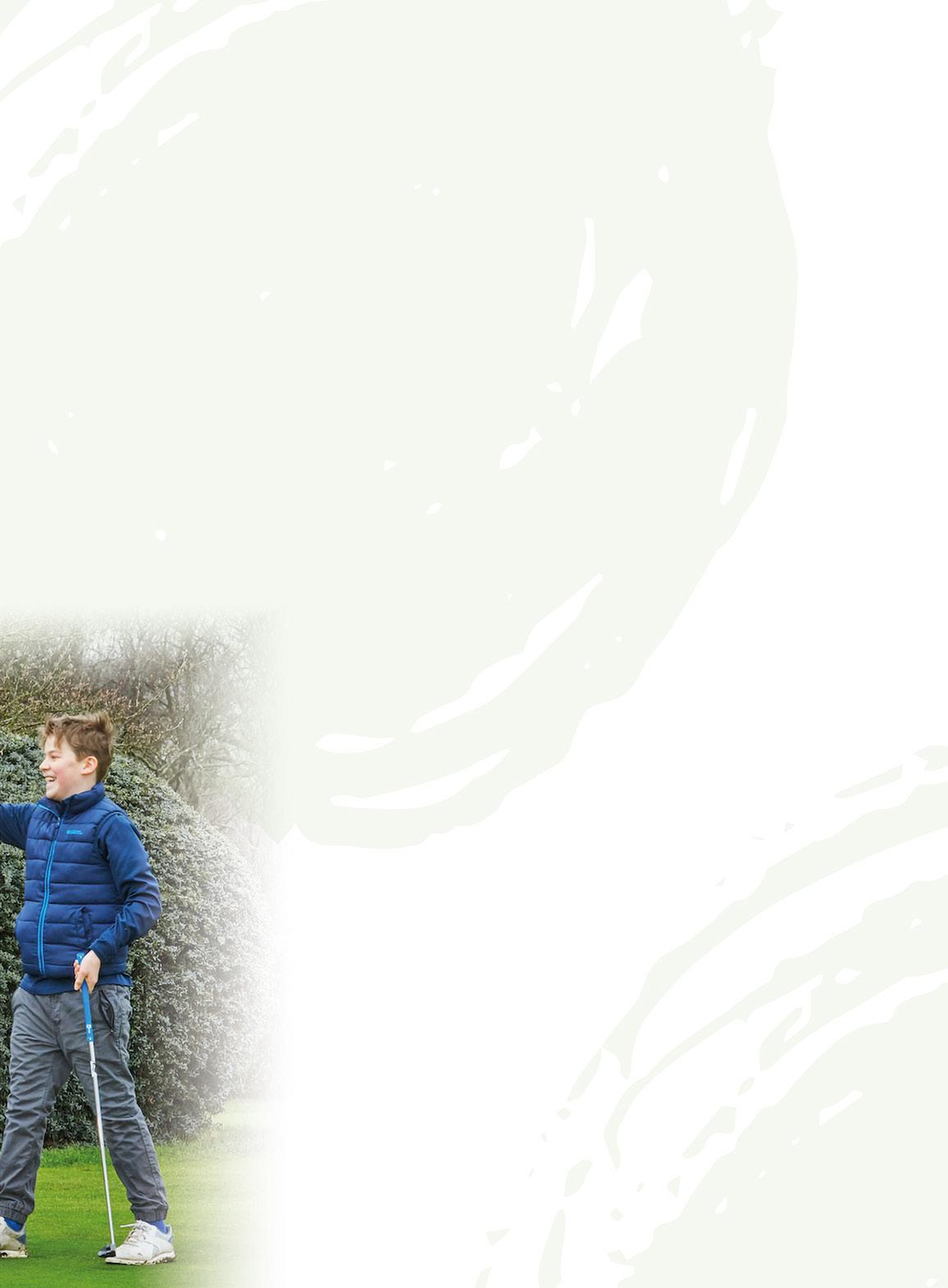
3.
Lessons from a PGA Professional. To help improve and enjoy the game further.
4.
Join the club. An introductory membership can help you meet likeminded people to play with.
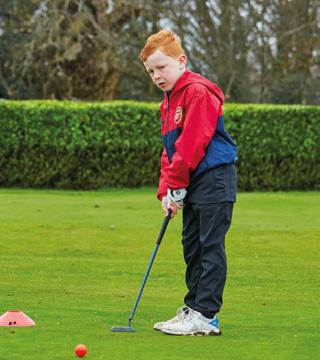
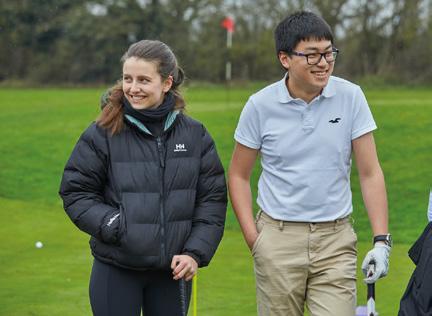
“With plenty of time for conversation and fun, golf is the perfect way to make new friends or grow closer bonds with people you already know”
There are four key things to check before you swing:
1. GRIP – how to hold the club. Place the hand furthest away from the target at the bottom of the grip.
Point to the flag with the hand closest to the target and place this hand towards the top of the grip (flag hand highest on grip).
Slide the bottom hand up so both hands touch.
2. AIM – the correct positioning to point your ball at the target.
Aim your clubface towards the target.
Take your stance ensuring your feet are aiming parallel to the target line. This creates two parallel lines like a railway track between your clubface and your feet.
3. STANCE – how close or far apart the feet are.
Place your feet opposite the ball with the ball in the middle of your feet
Take a medium step towards the target with your front foot. Take a medium step away from the target with your back foot.
With your feet shoulder width apart and the ball in the middle of your feet, you can draw a triangle between your feet and the ball.
4. POSTURE – how to position and tilt your body in the right way.
Stand nice and tall with the club at waist height.
Tilt forward from your hips as if you are peering over a balcony ensuring your belt buckle points down towards the ball.
Soften your knees to allow the clubhead to rest on the ground behind the ball.
For anyone looking for an entry level route into golf, there are plenty of adventure golf providers and pitch and putt venues up and down the country where children can give golf a go for the first time. Meanwhile, England Golf's iPlay is a free, user-friendly service on the MyEG app, that allows users to enter scores from venues such as adventure golf, pitch and putt and 9 or 18hole golf courses, giving them an average score indicator to track their performance. Head to englandgolf.org/affiliatedfacilities to find your nearest facility or for iPlay head to englandgolf.org/iplay.'


England Golf’s ‘Get into Golf Rookies’ programme is all about providing more opportunities for children and young people to learn to play golf, aimed at all children and young people aged 5-18 years. Taster sessions take place up and down the country throughout the summer. englandgolf. org/rocks-and-rookies
Canoe slalom athlete, Bethan Forrow, talks about her journey into motherhood and juggling pregnancy, parenting and injuries, all while not giving up the sport she loves.
My name is Bethan Forrow. I am a canoe slalom athlete. I’m 24 years old and I am the mother of a beautiful little boy named Rowan.
My journey in canoeing began when I was 11 years old, after I was selected in 2013 for the 2012 Olympic Legacy Programme. I have always loved sport and by the age of 11, I had tried absolutely everything.
Throughout my career, I have learned a lot about ownership and the importance of failure. I first started competing internationally in 2016 and won many medals, even becoming Under 23 World Champion. Learning to grow from failure
has been vital. After all, we fail more than we succeed. I learned this when I had a major injury that took me out of competing for a whole year in 2022. This was the hardest setback yet. Having a complete anterior cruciate ligament and meniscus reconstruction followed by 16 months of rehab. I came back stronger, mentally and physically. I put everything into getting into the Great Britain team the following year.

“Learning to grow from failure has been vital. After all, we fail more than we succeed”

However, on 11 April, I took a pregnancy test and found out I was pregnant. The most shock I have ever felt in my life. For days, I sat and wondered how I would manage and what my life might look like being a mum. Could I still be an athlete? Can I have both a family and a career? All the questions only I could find the answer to.
I trained as long as I could and competed at an international Senior World Cup in Slovenia when I was 18 weeks pregnant. At around 20 weeks, I managed to tear my meniscus again. Ironically, not doing any extreme sport but ‘nesting’. I still kept active throughout my pregnancy and at 38 weeks and 5 days I was induced. On 8 November, I gave birth to my beautiful Rowan.
During the last months of my pregnancy, I thought a lot about when to have knee surgery post-birth, taking into account being able to breastfeed as I wished to. I made the decision to return to training at nine weeks postpartum. Simply getting moving again and having something to focus on myself was the best thing I did for myself and my family. Hard but good. I returned to a monitored training programme where I saw a women’s health physio who helped guide my training, to ensure my pelvic floor had healed correctly before returning to full-time training.
“Being a mum has made me a better athlete”
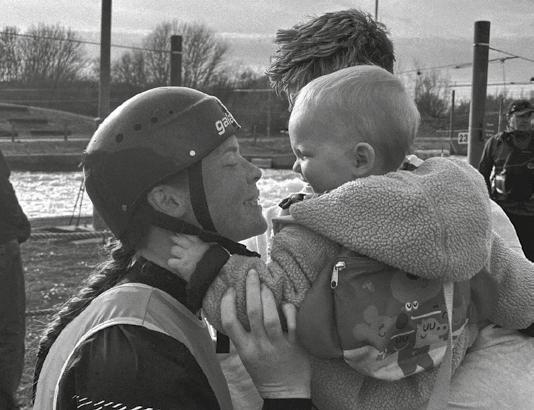

just like being a parent. It takes patience and resilience, just like being a parent. Being a mum has made me a better athlete.
My boy has changed my life completely and I genuinely believe I was meant to have him in order to be the best version of myself. I want to show him what you can achieve and the beauty of the struggle. Being a mum has taught me strength, patience, kindness and an infinite amount of love.
I'm so excited to say that 2025 will be my first international season racing for Great Britain since 2022. I'm looking forward to racing, and I couldn’t have done it without having my boy. Follow my journey this year to see what mums can do!
At around three months postpartum, I booked my surgery date for April 2024, giving me a good amount of time to get strong to help aid my recovery. With the surgery in mind, I had to think about breastfeeding and what would be right for both of us. I debated with myself for weeks and came to the decision to stop breastfeeding.
The choice broke my heart as I loved breastfeeding and felt as though Rowan wouldn’t need me anymore. However, my reality was that having surgery was going to make it harder to recover and more demanding on me to keep fuelled enough to manage breastfeeding. Switching to formula meant that while I couldn’t walk, I had more help with feeding him. I felt very lucky to have been able to breastfeed for six months, but it didn’t make stopping any easier.
Throughout the summer, I committed myself to both being the best mum I could be and training as a full-time athlete. Something I didn’t know was possible and something that definitely was not simple. It required a lot of energy to stick to a routine and commit to every session, regardless of whether I wanted to or not. I often found myself on days I didn’t have motivation, doing it for my family and the rewards they would feel for having a healthier, happier and stronger mummy.


To keep up to date with Bethan Forrow’s inspirational journey, follow her on Instagram by scanning the QR code.
“People often told me while I was pregnant, that I couldn’t have both, when the reality is you can and I have”
People often told me while I was pregnant, that I couldn’t have both, when the reality is you can and I have. It’s hard and takes sacrifice,





The national governing body for surfing, Surfing England, explains why surfing is such a great sport for kids and adults alike.
Surfing is more than the pursuit of the perfect wave – it’s a full-body workout, a mental escape and a way of life that enhances overall well-being. Physically, surfing builds strength, balance and cardiovascular fitness. The paddling motion strengthens the arms and shoulders, while popping up on the board activates the core and leg muscles.
“The exhilaration of catching a wave not only boosts confidence, but also brings an unparalleled sense of joy”
It’s a powerful stress-reliever, offering a unique opportunity to disconnect from daily pressures.
Surfing also brings people together, fostering a vibrant community spirit. Whether you’re just starting out or have years of experience, the lineup is a place
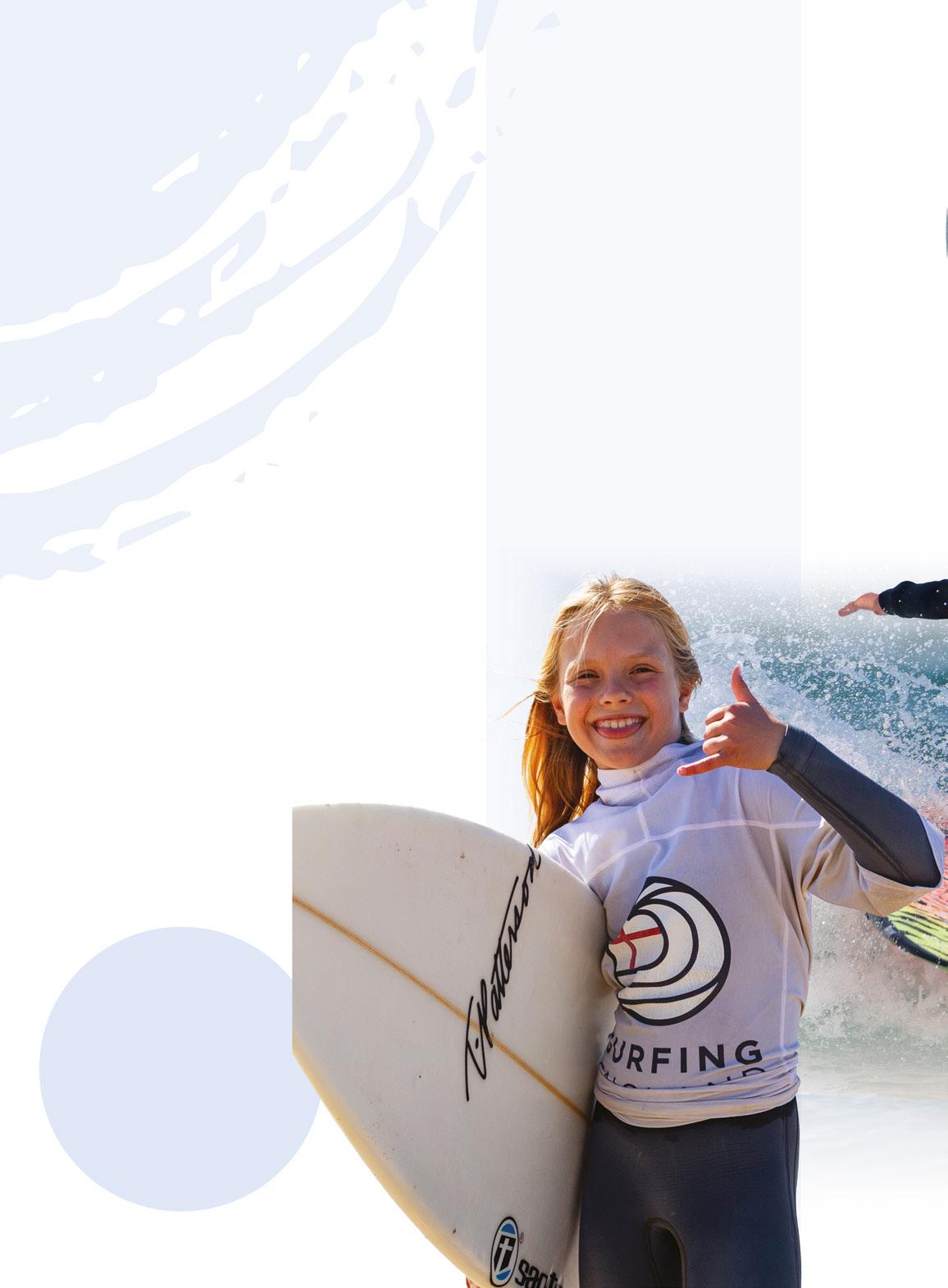
of shared passion and camaraderie. Plus, the exhilaration of catching a wave not only boosts confidence, but also brings an unparalleled sense of joy.
Embrace the surf lifestyle and experience the physical, mental and social benefits that come with riding the waves.
to
If you’re planning to surf in the UK, a wetsuit is essential – especially during those chilly winter months. You’ll also need a surfboard. Fortunately, beginner-friendly boards (the bigger, the better for newbies) are readily available for hire at surf shops near most beaches in England.
“It’s a powerful stress-reliever, offering a unique opportunity to disconnect from daily pressures”

We highly recommend starting your surfing journey with a lesson from a qualified instructor. Not only will you learn the basics of surfing, but you’ll also receive vital safety information about the sea and beach environment. Plus, with a trained lifeguard as your coach, you can feel confident you’re in safe hands. Group beginner lessons typically last around two hours and cost between £25 and £60, including wetsuit and surfboard rental. Private one-on-one lessons are also available at a higher rate for more personalised coaching.
Joining a surf club has its benefits! From discounts on gear and clothing to opportunities to compete and connect with fellow surfers, becoming part of a community can enhance your surfing experience. It’s also a great way to expand your social network and make new friends who share your passion for the waves.
Eighteen-year-old surfing champion Belle Betteridge tells us about her first success in the sport. “My first competition I did was a local comp in Croyde. When I was around eight, my Dad entered me in the under 10’s assist. He swam out with me and pushed me into waves. I stood up, grabbed the rail of my board, made the drop and pulled into this barrel. Realistically, this wave was probably tiny and all I did was go straight, but I got scored a perfect ten for that wave and got in the newspaper!”
At Surfing England, we’re powered by passion, not profit. Whether you’re aiming for the Olympics, mastering your local break, or just catching your first wave, we believe that life is better when you’re surfing.
With over a million people hitting the waves in England each year, we’re dedicated to growing an inclusive, welcoming surf culture. We proudly represent the entire surfing community, from bodysurfing and bodyboarding to shortboarding, longboarding, SUP surfing and adaptive/ para surfing. Everyone’s invited to share the stoke. Join us as we work together to grow the sport we love, safeguard our surf spots, and shape the future of surfing in England.
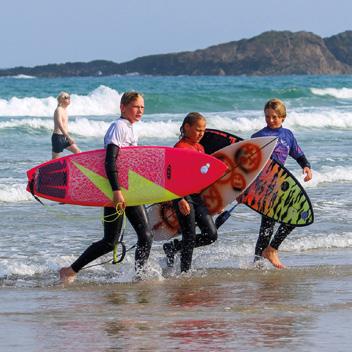

The GROM SQUAD is the ultimate way to learn to surf, stay safe in the sea and, most importantly, have fun! Progress through five exciting levels inspired by legendary surf spots around the globe, earning certificates and badges along the way. GROM SQUAD is aimed at surfers under age 16, but adult beginners are also welcome to join the GROM community.

Surfing England is the national governing body for surfing. A non-profit organisation, run for (and by) surfers, working with surf schools, clubs and coaches from Scarborough to Sennen. Its mission is simple, to encourage a culture that welcomes everyone and help surfers grow from grassroots to greatness. Find out more at surfingengland.org
Ready to get started? Scan the QR code to explore the network of Surfing England-affiliated surf schools including adaptive/para surf school, clubs and coaches.











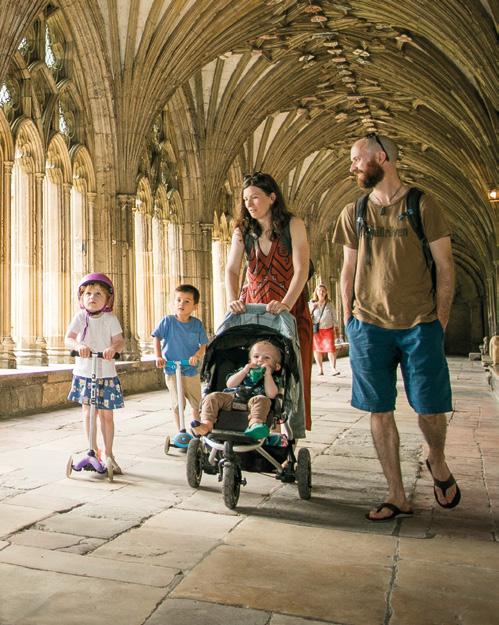










































































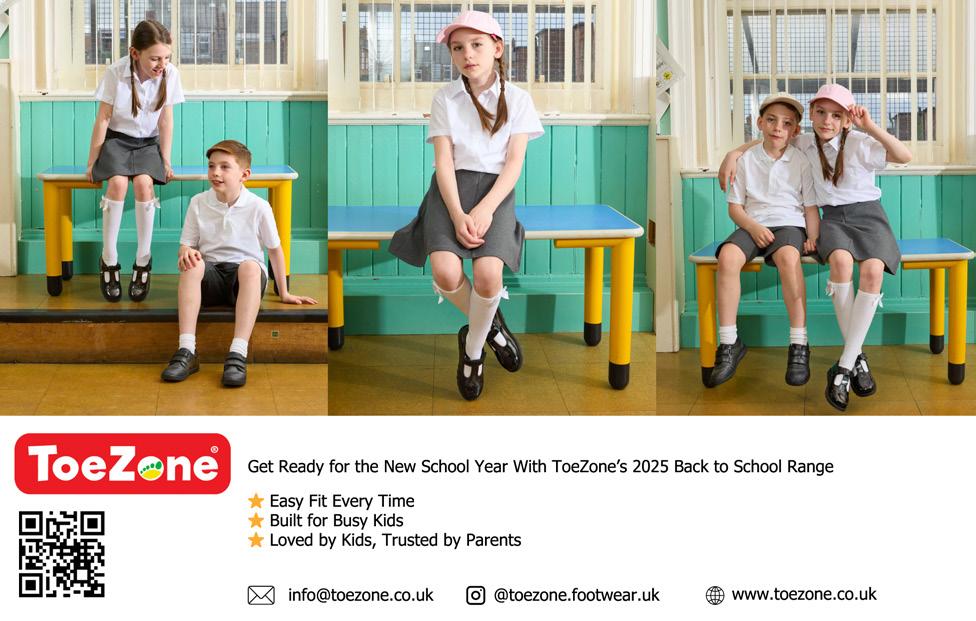




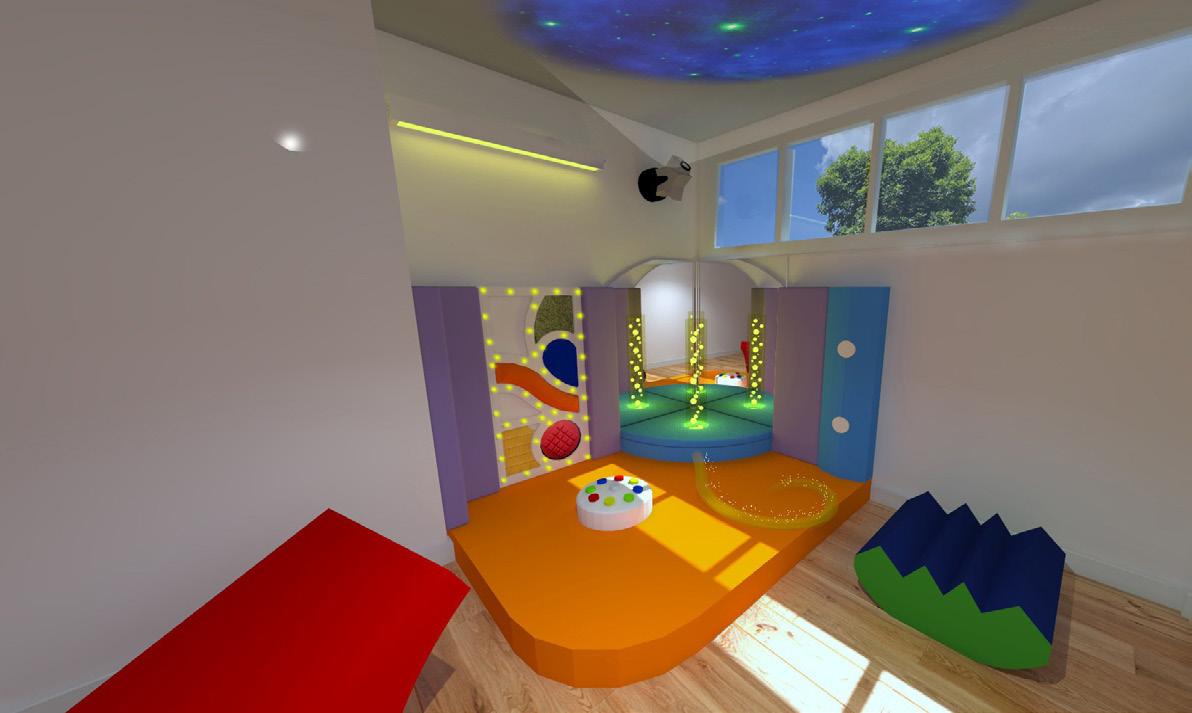
Rompa® is a trusted leader in designing and installing Snoezelen® Sensory Rooms and Soft Play areas across schools, nurseries, and educational institutions.
These calming, therapeutic spaces are thoughtfully created to support students with sensory processing challenges, mental health needs, or disabilities. Equipped with soft lighting, soothing sounds, tactile elements, and comfortable furnishings, Snoezelen® rooms help reduce stress, improve focus, and promote emotional regulation. Backed by research, these environments enhance behaviour, boost academic performance, and foster inclusive learning, benefiting students with additional needs and the entire school community.



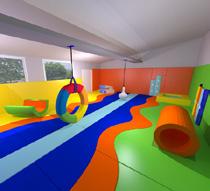










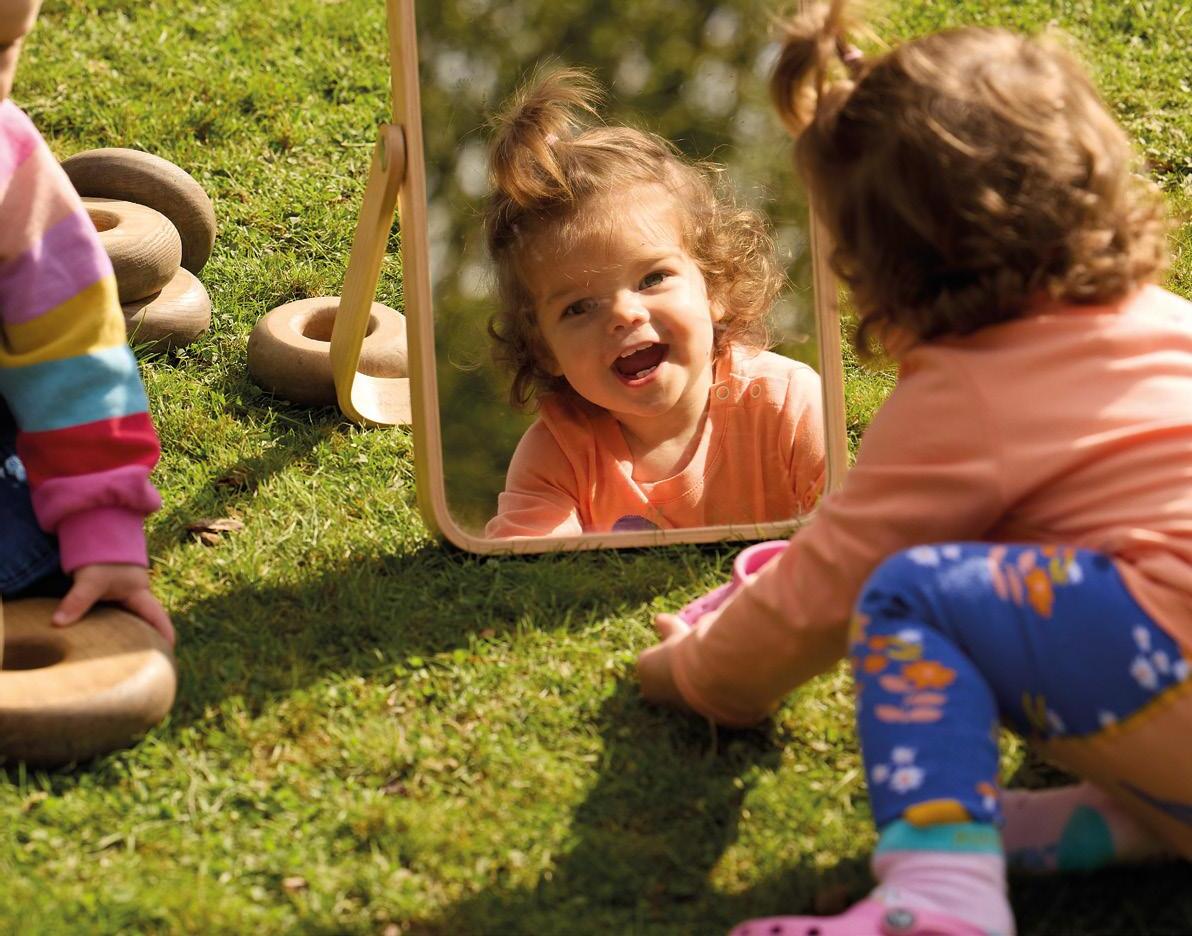
At Bright Horizons, we help every child discover who they are. Our practitioners encourage every wiggle, babble, and breakthrough as part of a gentle, responsive journey of connection and growth.
Our unique Nurture Approach goes beyond care and routines – it’s how we support your child’s emotional wellbeing, spark their curiosity, and nurture growing independence, laying the foundations for a confident, happy start in life.
Come along and experience it for yourself.
This is more than childcare. This is childhood.
Book a tour at your local nursery brighthorizons.co.uk